Best Time to Visit
Weather & Climate
Neighborhood Guide
Public Transportation
Safety in Rio
Airport Guide
Best Hotels
18 Fun Things to Do in Rio
Free Things to Do
Rio's Best Beaches
Coolest Architecture
5 Days Trips from Rio
Best Restaurants
10 Foods to Try
Rio's Best Beach Snacks
Nightlife in Rio

Rio de Janeiro Guide: Planning Your Trip
:max_bytes(150000):strip_icc():format(webp)/laura-for-web1-54b93256650f406ebc761ec19d875246.jpg)
Rio de Janeiro, known as the " cidade maravilhosa " in Portuguese, draws travelers in thanks to its stunning natural beauty and unique blend of culture, food, architecture, and music. Founded on Jan. 1, 1502 by Portuguese explorers (they mistook Guanabara Bay for a river—hence the city's name), the city discovered wealth by exporting diamonds, gold, and sugar. It later became the country's capital until Brasilia replaced it in the '60s.
Now, Rio is one of the top destinations for world travelers who visit for Carnival in February or March, or at other times of the year for enjoying soccer, samba, sun, and sand. No matter what your plans are for enjoying Rio de Janeiro, use this guide to plan your trip, including where to stay, how to get around, and what to do, see, eat, and drink.
Planning Your Trip
Best Time to Visit : There's hardly a bad time to visit Rio, but most visitors enjoy timing their stay to the summer months from January through March. Carnival also occurs during this period.
Language: Portuguese is Brazil's official language .
Currency: The Brazilian real is the country's official currency. One Brazilian real is equal to around 20 cents , as of September 2020.
Getting Around : A three-line subway system called MetrôRio anchors Rio de Janeiro's public transportation, but there are also buses and streetcars. Uber is widely available and considered safe and inexpensive.
Travel Tip: If you want to visit Rio for Carnival (usually held in February or March), book your hotels and make your travel plans as far in advance as possible.
Things to Do
Rio offers amazing beaches, nightlife, and scenery–and it's likely that your trip will include some combo of those three things! Spend your days lounging on Ipanema Beach, caipirinha in hand, and nights samba -ing away in Copacabana. You might also want to check out:
- Go up to Corcovado to see one of the New Seven Wonders of the World : the Christ the Redeemer statue. The miniature train that takes visitors to the top travels through the rainforest for a great view of Rio and the remarkable figure.
- Rio is a haven for football fans—and by that, we mean soccer. Catch a game at Maracanã stadium, a massive center for the sport, with seating for almost 80,000 people!
- Stroll the Praca Floriano to enjoy the outdoor cafes and samba musicians. Stop along the way at the Teatro Municipal, home to opera, orchestra, and vivid architecture.
Want more ideas? Find more great things to do in Rio de Janeiro , or check out our guides on the best beaches , day trips , and nightlife .
What to Eat & Drink
You can find virtually any kind of food in Rio de Janeiro, including some cuisines you might not expect (the city has excellent Japanese and Italian food, for example). Still, you'd be remiss to come to Brazil and not try the abundant and diverse local fare. A few popular staples include pao de queijo , a small roll made from tapioca flour and filled with stuffed cheese, and feijoada , Brazil's national dish. It's a hearty stew made with beans and meat and served with rice, or more commonly, farofa made from toasted cassava flour. Also, don't miss the chance to try dinner at a churrascaria rodizio , a popular restaurant that serves grilled meats, all-you-can-eat style!
For more, check out our guide to Rio de Janeiro's best restaurants and the 10 foods you must try during your visit.
Where to Stay
Most of Rio's tourist-friendly hotels are concentrated along the densely populated beachfront neighborhoods like Ipanema, Leblon, and Copacabana—but that's not all there is to this vibrant city. Venture further afield and discover lesser-known areas like the bohemian, European-influenced Santa Teresa, or Urca, a low-key waterfront neighborhood in the shadow of Sugarloaf Mountain.
Of course, the city's well-known hotels, like Hotel Fasano in Ipanema, or the Belmond Copacabana Palace, are storied for good reason. Learn more about our top hotel picks in Rio de Janeiro.
Getting There
Rio is an international and domestic hub, served by two airports—the primary international airport, Galeão – Antonio Carlos Jobim International Airport , and a smaller, mostly domestic airport, Santos Dumont Airport. The former is serviced by direct flights from many larger destinations in the U.S. and Europe—and the minimal time change means it's an accessible destination to visit with little to no jet lag. Once on the ground in Rio, most travelers rely on Uber, private drivers, or public transportation. Renting a car is not advised.
Money Saving Tips
- While there's not a bad time to visit Rio, some times are certainly cheaper than others. Time your visit to a shoulder season—think May through September or October—to score better deals on airfare and hotels.
- Brazil is already relatively inexpensive, so don't sacrifice safety by using unmarked taxis or other suspect methods of transportation. Stick to public transportation or ride-share offerings, like Uber.
- A 10 percent gratuity is already included on most bills (you'll see it listed as the " gorjeta "), so you don't need to tip on top of that.
- The U.S. dollar is much stronger than the Brazilian real, so while Reals are the preferable currency, some establishments will accept dollars as well.
Visit Brasil . "Language."
Banco Central Do Brasil . "The Brazilian Currency." June 2020.
New 7 Wonders of the World . "Christ the Redeemer."
Is It Safe in Rio de Janeiro?
Nightlife in Sao Paulo: The Best Bars, Clubs, & More
Iguazu Falls Travel Guide: Planning Your Trip
10 Foods You Have to Try in Rio de Janeiro
Getting Around Rio de Janeiro: Guide to Public Transportation
Antônio Carlos Jobim Airport Guide
Nightlife in Rio de Janeiro: Best Bars, Clubs, & More
Where to Go for the Holidays in 2019
10 Top Things to Do in Rio de Janeiro
Your Trip to Mexico City: The Complete Guide
Your Trip to Argentina: The Complete Guide
Most Popular Cities in Brazil
Where to See A-Listers During the Olympics
Cuba Guide: Planning Your Trip
18 Best Things to Do in Rio de Janeiro, Brazil
Rio de Janeiro's Coolest Architecture
Plan Your Trip to Rio de Janeiro: Best of Rio de Janeiro Tourism

Travel Advice
Essential rio de janeiro.
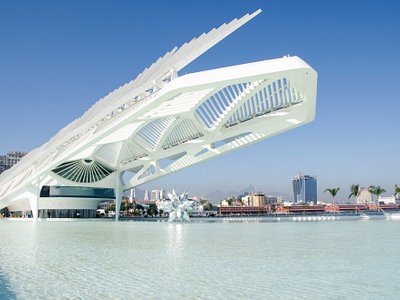
How to do Rio de Janeiro in 3 days

Beaches where you can escape the crowds (or join them)
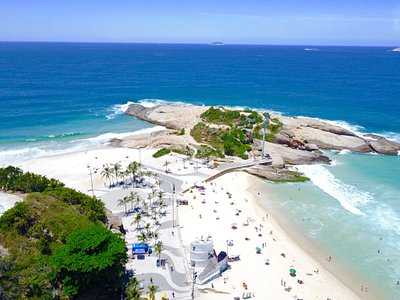
Browse collections
See the city from your table.
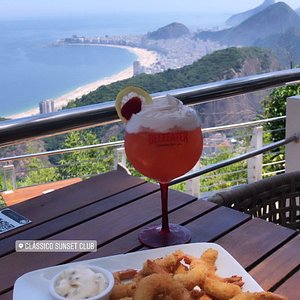
Rio’s iconic beaches
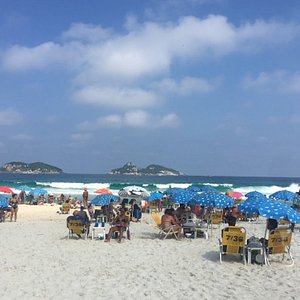
Eye-popping cultural heritage sites

Bring your binoculars

Rio after dark

Rio de Janeiro Travel Guide
Travelers' pro tips or experiencing rio de janeiro.

Alexandre P
In case you need help, Carioca's are nice, but make sure you are close to Zona Sul, where people are more friendly to tourists. Even if do not speak fluent English, they will help.

The dozens of juice bars in Rio are ideal for having an authentic açaí berry smoothie, or for trying other exotic fruit juices and traditional snacks. Buffet restaurants, where food is priced per kilo, are very popular among locals, especially for lunch.

If you are young, go to Lapa, and at every door, there will be music and dancing. Go to a candonblé or macumba ritual: go Downtown and see the old Rio de Janeiro with golden churches and beautiful neo-classic buildings like the Municipal for a beautiful concert.

joanadventure
Rio: The city of wonders and easy to get around.
The unique geography of Rio de Janeiro ensures that you'll enjoy a free picturesque backdrop — from gorgeous mountains and white-sand beaches to verdant rain forests and deep blue seas — at every step of your exploration.
Rio de Janeiro, called the "Marvellous City," charms everyone not only by its natural beauty but also by the friendliness of all Cariocas (born in Rio). Obviously, the main assets are the beaches, like the famous Copacabana beach and its beautiful sidewalks. But there are several beaches, all around our coast.
What is the best way to get there?
The main airport that serves Rio de Janeiro is the Rio de Janeiro-Antonio Carlos Jobim/Galeão International Airport, known simply as Galeão International Airport.
The Rodoviaria Rio Novo station is the main bus terminal in Rio de Janeiro and hosts the majority of long-distance buses.
If arriving in Rio by car, you’ll likely come from the BR116, which is the highway that connects the city with Sao Paulo.
Do I need a visa?
If you’re visiting from Brazil overseas, see if you need a visa using this website .
When is the best time to visit?
December to March: Undoubtedly, the best time to visit Rio de Janeiro is between December and March, when the weather is optimum for exploring the city’s beaches. Additionally, the summer months deliver two of the city’s best celebrations: New Year’s Eve, when crowds cram onto Copacabana Beach for a 15-minute fireworks display, and the world-renowned Carnaval, during which the spirit of samba overtakes the city.
For more information on Rio de Janeiro’s weather and when to go, check out some tips here .
Rio’s metro spans three air-conditioned lines. Line 1 goes from Ipanema-General Osório to Uruguai; Line 2 travels from Botafogo to Pavuna, passing Maracanã football stadium en route; Line 3 travels between Ipanema-General Osório and the eastern end of Barra da Tijuca at Jardim Oceânico. You can purchase a rechargeable card at any of the metro stations. Find out more here .
taxis and rideshare
Apps such as Uber and Cabify are the main rideshare operators in Rio. Most of the public cabs are metered and are readily available and therefore easy to hail from the street.
Rio’s BRS (Bus Rapid System) overlaps the metro and covers popular city zones such as Ipanema, Leblon, Barra, and Copacabana.
On the ground
What is the timezone.
Brasilia Standard Time (GMT-3).
What are the voltage/plug types?
The standard voltage in Rio de Janeiro is 127V and the standard frequency is 60Hz. There are two associated plug types: type N, with two round pins and a grounding pin, and type C, with two round pins. For plug types, you can reference the international guide .
What is the currency?
Brazilian Real (BRL).
Are ATMs readily accessible?
Are credit cards widely accepted, how much do i tip.
Though tipping is not part of Brazilian culture, a 10% service charge is generally added to the bill in restaurants.
Are there local customs I should know?
The federal legal age for buying and drinking alcohol is 18 years old.
In Brazil, casual dress is more formal than in other countries so if a restaurant or event specifies formal wear then ensure that you dress to impress.
Though generally modern and tolerant, Brazilians typically have strong Catholic beliefs. Try to avoid expressing atheist views in public.
- Miramar by Windsor Copacabana
- Fairmont Rio de Janeiro Copacabana
- Rio Othon Palace Hotel
- Hilton Rio de Janeiro Copacabana
- Copacabana Palace, A Belmond Hotel, Rio de Janeiro
- Restaurante Marius Degustare
- Marine Resto
- Churrascaria Palace
- Oro Restaurante
- Churrasqueira Rio
- Sugarloaf Mountain Cable Car
- Ipanema Beach
- Corcovado - Christ the Redeemer
- Copacabana Beach
- Botanical Garden
- Full Day: Christ Redeemer, Sugarloaf, City Tour & Barbecue Lunch
- Rio's Full Day: Selarón Steps, Christ & Sugarloaf – Tickets & Lunch Included
- 25 - Full Day Tour to Angra dos Reis and Ilha Grande
- The Best Half Day in Rio with Christ Redeemer and Sugar Loaf Hill
- Skip the Line Christ the Redeemer Admission Ticket

- Destinations
Rio de Janeiro Travel Guide
Rio is unlike any other place in the world, with more natural beauty per square inch—and more flip-flops per capita—than any major city. Its “urban setting,” tucked dramatically between and amid mountains and sea, is itself a UNESCO World Heritage site. With a beachy, informal vibe infusing its street life, Rio’s natives, Cariocas, are at once so raucous and relaxed that other Brazilians parody them relentlessly, as much with jealousy as with disdain. — Seth Kugel
- Terms of Use
- Privacy Policy
- Your US State Privacy Rights
- Children's Online Privacy Policy
- Interest-Based Ads
- About Nielsen Measurement
- Do Not Sell or Share My Personal Information
- Nat Geo Home
- Attend a Live Event
- Book a Trip
- Inspire Your Kids
- Shop Nat Geo
- Visit the D.C. Museum
- Learn About Our Impact
- Support Our Mission
- Advertise With Us
- Customer Service
- Renew Subscription
- Manage Your Subscription
- Work at Nat Geo
- Sign Up for Our Newsletters
- Contribute to Protect the Planet
Copyright © 1996-2015 National Geographic Society Copyright © 2015-2024 National Geographic Partners, LLC. All rights reserved

8 of the best things to do in Rio de Janeiro
I mages of raucous Carnival parties, pristine beaches and the vivid colours of the landscape below Christ the Redeemer fill the minds of would-be visitors to this vibrant former capital. For many people, Rio de Janeiro is synonymous with Brazil – the coastal city representing the very idea of Brazil .
The azure waters that surrounded Sugarloaf Mountain, and the golden sands of Copacabana, are landmarks of Rio, and of Brazil as a whole. But the beauty of Rio can also be found in what you unexpectedly discover after arriving, in the lesser-visited spots.
A host of museums and art galleries chronicle both Rio and Brazil’s medieval and colonial past, some remnants of which are visible today, both in the city’s landscapes and in a samba culture throughout neighbourhoods such as Lapa and Santa Teresa.
A city as eclectic as Rio contains an impossibly large number of things to do on your visit, but we’ve rounded up a list of the best to help you plan your visit.
Cocktails and kickabouts on Copacabana or Ipanema
Rio’s beaches are one of its more recognisable features, and have greatly contributed to the city’s modern-day image. The two-and-a-half mile golden stretch of Copacabana has become as synonymous with Rio as the Redeemer or Sugarloaf, being a focal point of the city for celebrations, protests and everything in between. Usually, the beach is strewn with various characters, from caipirinha-sipping tourists and local kids playing beach football to people taking a stroll along the promenade and vendors plying their trade.
Not too far from the western end of Copacabana, the similarly beautiful yet slightly less well-known Ipanema beach lies in front of the eponymous neighbourhood. More popular with locals, this stretch is a social mixing point, with sports, surfing and LGBT+-friendly sections.
Read more on South America travel :
- Why Uruguay is South Amerca’s most underrated stop
- How to do a sustainable wine tour of Chile
- Buenos Aires city guide: Where to stay, eat, drink and shop in Argentina’s late and lively metropolis
Ascend to Christ the Redeemer
El Cristo Redentor towers above the city as a symbol of Christianity known throughout the world. This 38-metre tall, 28-metre wide structure stands on top of the Corcovado mountain.
Though seeing it is easy from many corners of the city, especially when it is lit at night, a journey to the top of the Corcovado mountain to get up close to the statue is one of Rio’s ‘must-do’ activities. Most choose to get to the top via a 20-minute train journey that begins within Tijuca National Park – tickets include a round-trip and entry to the attraction for around £25 online.
Visit during Carnival
Few places in the world party like Rio does during Carnival. As celebrations go, this is one of the most famous – and wild – on Earth, perhaps only rivalled by the same festivities in Salvador.
Held every year in the week leading up to Lent (9 February to 14 February in 2024), this festival welcomes around two million people per day to the streets of Rio, revelling in samba-driven street parties, musical performances and large-scale parades in the purpose-built Sambodromo. Up to 500 free street parties take place every day during Carnival, with costumed revellers and samba music making the streets a sea of colour and noise. There are different themes in each so-called bloco , ranging from Super Mario to the Beatles.
Hike up Sugarloaf Mountain
Another symbol of the city, the 396-metre tall Sugarloaf Mountain (known locally as the Pao de Acucar) stands with the Redeemer and Copacabana as the unofficial trinity of Rio’s must-see sites. The summit is accessed by cable car, with the journey taking you first to the top of Urca Hill and then to the peak, as panoramic views over Rio’s hills skyscrapers and sands appear beneath you. At the top, you’ll get to add in views of Christ the Redeemer and more of the city’s coastline.
The cable car journey takes under 10 minutes and costs around £25, with cars leaving every 20 minutes. Visit before sunrise or sunset for the best views, or come around 8am for the quietest time of day.
Sample some nightlife
Outside of Carnival time, the Lapa neighbourhood is the city’s nightlife centre. It’s a former red light district just south of the centre, and consists of colourful alleys that are home to dozens of clubs, bars and restaurants, with places that cater to both tourists and local revellers. This is the tourist nightlife centre, popular with a younger crowd eager to take advantage of drink and entry deals.
Close by, bohemian and artsy Santa Teresa is a good place for quieter nights on the town, with plenty of traditional cocktail bars and some more chic hangouts. The southern areas around Ipanema and Gavea are popular too, with the Baixo Gavea square known for busy nightlife during the weekend, while Botafogo and Copacabana remain reliable options, with Botafogo the better choice for more rowdy, longer lasting nights out.
Catch a game
Brazil’s stylish victories in five World Cups have led to it becoming football’s adopted home. You may be lucky enough to see the national team play at Rio’s Maracana stadium, but if not, try and catch a home game from either local squad Flamengo or 2023 South American champions Fluminense. The 2024 season runs from 14 April to 18 December, giving you a chance to see the beautiful game in one of its spiritual homes.
Stroll through the Botanic Gardens or the Parque Lage
Rio’s parks and gardens provide an oasis of calm in a sometimes dizzying city, away from hectic traffic and hedonistic parties. The most well-known is the Jardim Botanico, a sea of green that spans an 840-acre space filled with around 9,000 tropical plant species.
The more adventurous alternative is the Parque Lage, at the foot of the Corcovado Mountain. This former estate is now a public park, at the centre of which lies a 19th-century mansion surrounded by dense forest and towering hills. Visitors can explore caves and see an aquarium or art exhibitions.
Another scenic spot is the Lagoa Rodrigo de Freitas, a tranquil lagoon encircled by a four-and-a-half mile walking and cycling track. Vendors along the route sell food and drink, with the area particularly popular at the beginning of long summer nights.
Visit a museum
It’s easy to swap hedonism for history lessons in Rio. For the low-down on Brazil’s past, start at the National Historical Museum, which contains over 300,000 pieces that help illustrate the country’s complicated history. At the opposite end of the spectrum, a more recent addition to the city is the Museum of Tomorrow, a ground-breaking science museum with exhibits on space, humans and the challenges that we face in protecting the Earth.
The Museum of Modern Art showcases works from the last two centuries – including pieces from Joan Miro and Jackson Pollock – and the Chacara do Ceu , victim of a famous robbery in 2006, holds pieces from a range of international artists, including Henri Matisse.
Read our reviews of the best winter sun hotels
From news to politics, travel to sport, culture to climate – The Independent has a host of free newsletters to suit your interests. To find the stories you want to read, and more, in your inbox, click here .
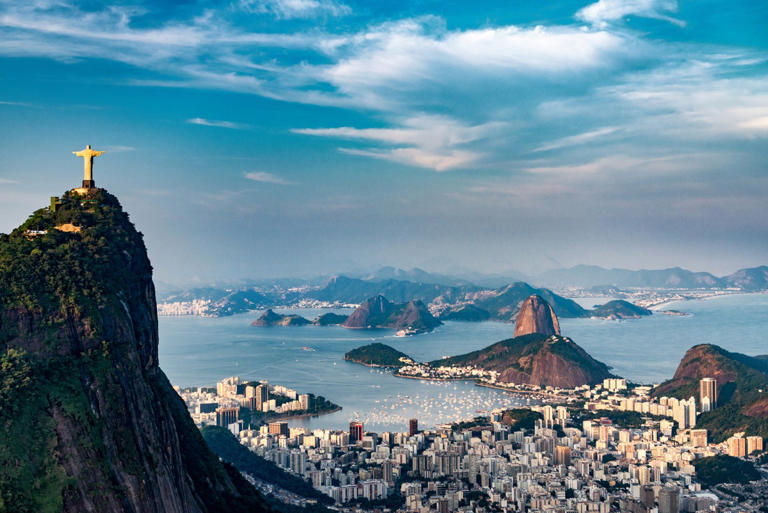

19 Top-Rated Tourist Attractions in Rio de Janeiro
Written by Lana Law and Michael Law Updated Jan 19, 2024 We may earn a commission from affiliate links ( )
The city of Rio de Janeiro, with its evocative name, brings to mind golden sand beaches populated by sun-kissed bodies by day and the passion of the samba by night. Many people consider this to be the most beautiful city setting in the world, and UNESCO cited "the staggeringly beautiful location for one of the world's biggest cities" in naming Rio a World Heritage Site .
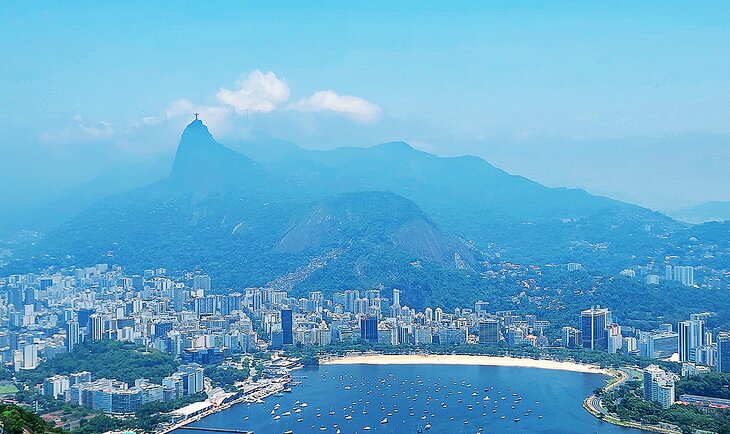
The best way to appreciate Rio is to rush headlong into the experiences and attractions with passion and gusto. Corcovado, Sugarloaf, Copacabana, and Ipanema are the top places to start but there are many must-see places. When you're done touring the sites, hit the beach, and then head out in the evening for first-class dining, to see a football game, or to enjoy the nightlife.
Discover the best this city offers with our list of the top attractions in Rio de Janeiro.
See also: Where to Stay in Rio de Janeiro
1. Christ the Redeemer (Cristo Redentor)
2. sugarloaf, 3. copacabana, 5. carnaval (carnival), 6. escadaria selarón (selaraón steps), 7. jardim botânico (botanical garden), 8. prainha beach (little beach), 9. maracanã, 10. são bento, 11. tijuca national park, 12. são francisco da penitência, 13. teatro municipal (municipal theater), 14. quinta da boa vista, 15. nossa senhora do carmo and monte do carmo, 16. ilha fiscal, 17. catedral de são sebastião, 18. take a boat trip to ilha de paquetá, 19. day trip to petrópolis, where to stay in rio de janeiro for sightseeing, tips and tours: how to make the most of your visit to rio de janeiro, map of tourist attractions in rio de janeiro, rio de janeiro, brazil - climate chart.

Towering over the city with its welcoming arms, the Christ the Redeemer statue is the iconic symbol of Rio de Janeiro and it's something you must visit while you're here. Set atop 709 meter-high Corcovado Mountain , this monument has been watching over the city for nearly 100 years.
Views from the deck below the 30-meter-high monument out over the city, ocean, and surrounding mountains are incredible on a clear day.
For the famous shot of yourself in front of the statue, walk about halfway down the stairs to the lower deck and shoot backward towards the statue.
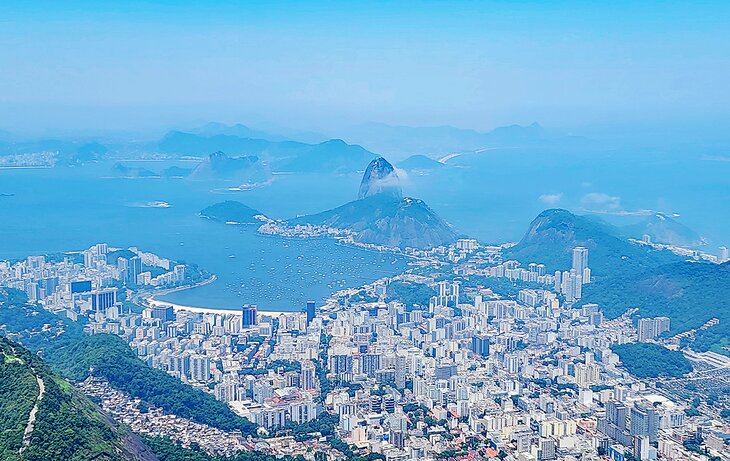
Visiting Christ the Redeemer isn't all about views and selfies, the ride up to the top on the incline railway is half the fun. Ascending through the lush jungle, the steep ride to the top takes about 20 minutes and provides beautiful views.
Visiting Christ the Redeemer is one of the most popular things to do in Rio de Janeiro, with over 800,000 people visiting annually. Be prepared for crowds at the top. To avoid long queues for the train, book your tickets in advance online and select a time. Another option for getting to the top is taking a van ride, which is cheaper but far less scenic and enjoyable.

The best time to visit is early in the day, as the statue can become foggy as the day progresses.
Note: The former restaurant at the top is permanently closed; the only food and drink option is a small snack bar, although there are plenty of places to buy souvenirs!
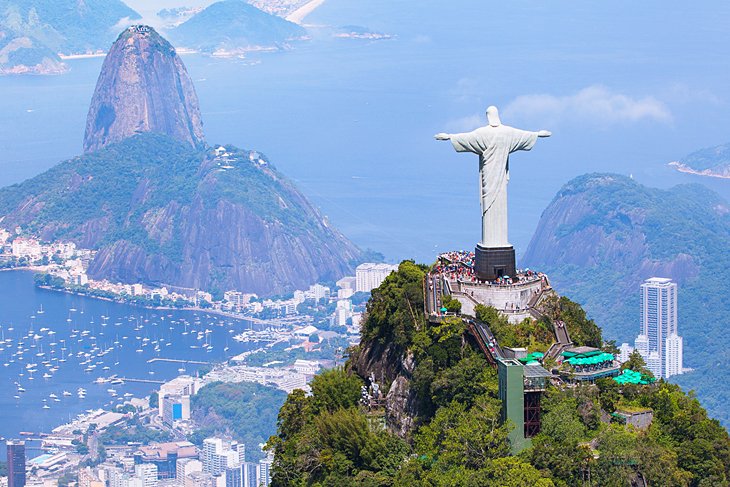
It's hard to imagine a more perfectly placed mountain than Sugarloaf. Just slightly offshore from mainland Rio de Janeiro, this towering monolith provides sweeping views of the city and across to Christ the Redeemer. At the top, you'll find multiple viewing platforms, most of which are protected from the punishing equatorial sun. Views also extend to Rio's famed harbor with the Ponte Pres. Costa e Silva bridge in the foreground and back towards Copacabana and Christ the Redeemer.
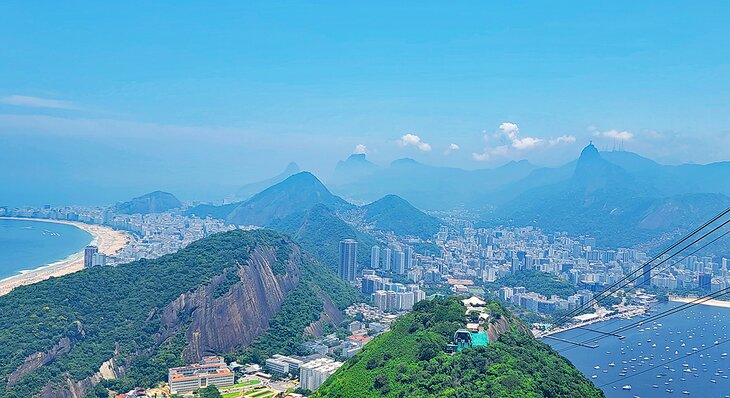
The ride to the top of Sugarloaf Mountain is via a scenic two-stage cable car ride. Don't be distracted by the first stopping area with its shopping mall; the best views are from the top. As you exit the first station, just keep walking to your left and you'll eventually find the second station. The ride up from here is stunning, keep an eye out below for mountain climbers ascending the sheer face of the mountain.
As with Christ the Redeemer, lines can be long, so book your tickets in advance . You can book for specific days but not times. The best option, if you don't mind paying a little more, is to buy the VIP ticket which allows you to skip the lines on the way up and down (surprisingly you need to show your ticket to get down). This is an excellent investment!
The attraction is also known as Pão de açúcar when searching for the drop-off point using UBER .
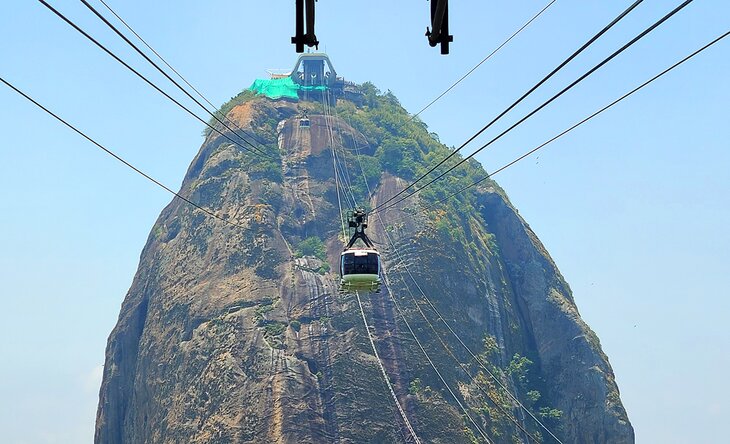
This 2.5-mile stretch of golden sand is synonymous with Rio de Janeiro. Packed with people on warm summer weekends and throughout the Christmas holidays, it's a lively and fun scene and the beach where people from all walks of life come for sun, surf, and fun. The beach is wide, so be prepared for a significant walk to the water's edge.
The water is refreshingly cool and the waves can be surprisingly large depending on the day. Rio does a good job of keeping people on the beach safe, don't be surprised if you see a red helicopter doing water rescues if the surf is up. Chairs and umbrellas can be rented for a reasonable fee from organized beach service operators, who also provide cold drinks and meals. They also provide free showers.
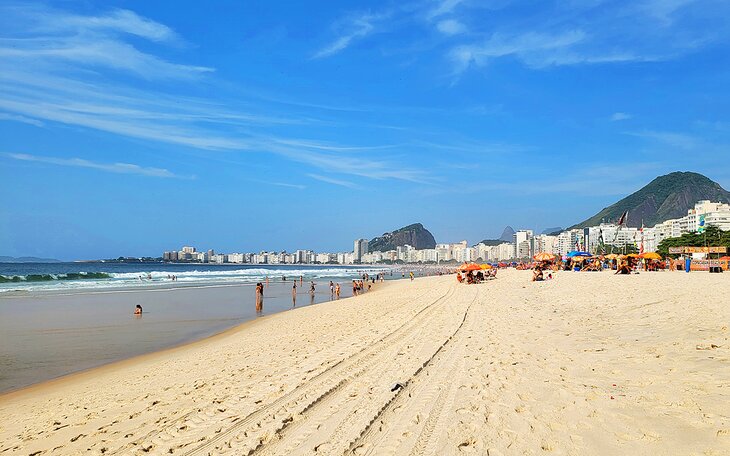
Back from the beach is a wide walkway with black and white stones arranged in a decorative pattern. Here, you'll also find beachside restaurants and, in the evening, vendors selling all manner of handicrafts and souvenirs. At the far northern end of the beach are restaurants, many with live music, clustered under the large headland. Be sure to plan to come here in the early evening. It is an excellent spot to enjoy the sunset with expansive views of the beach.
If you can tear yourself from your towel, the early 18 th century Fort Copacabana and Military Museum at the south end of the beach is worth a look.
Note: The mood on Copacabana Beach varies. It's generally very family-oriented on weekends and holidays during the day. Night on the beach can be rowdy at times, especially on holidays in the late evening. Normal weekdays are much quieter.
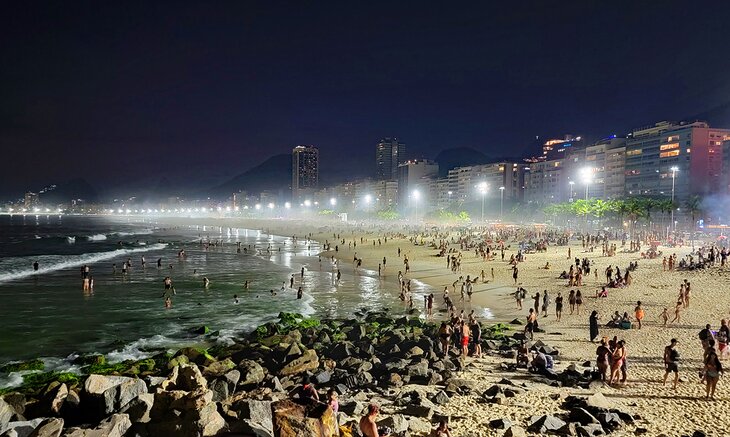
Address: Praça Coronel Eugênio Franco, Rio de Janeiro
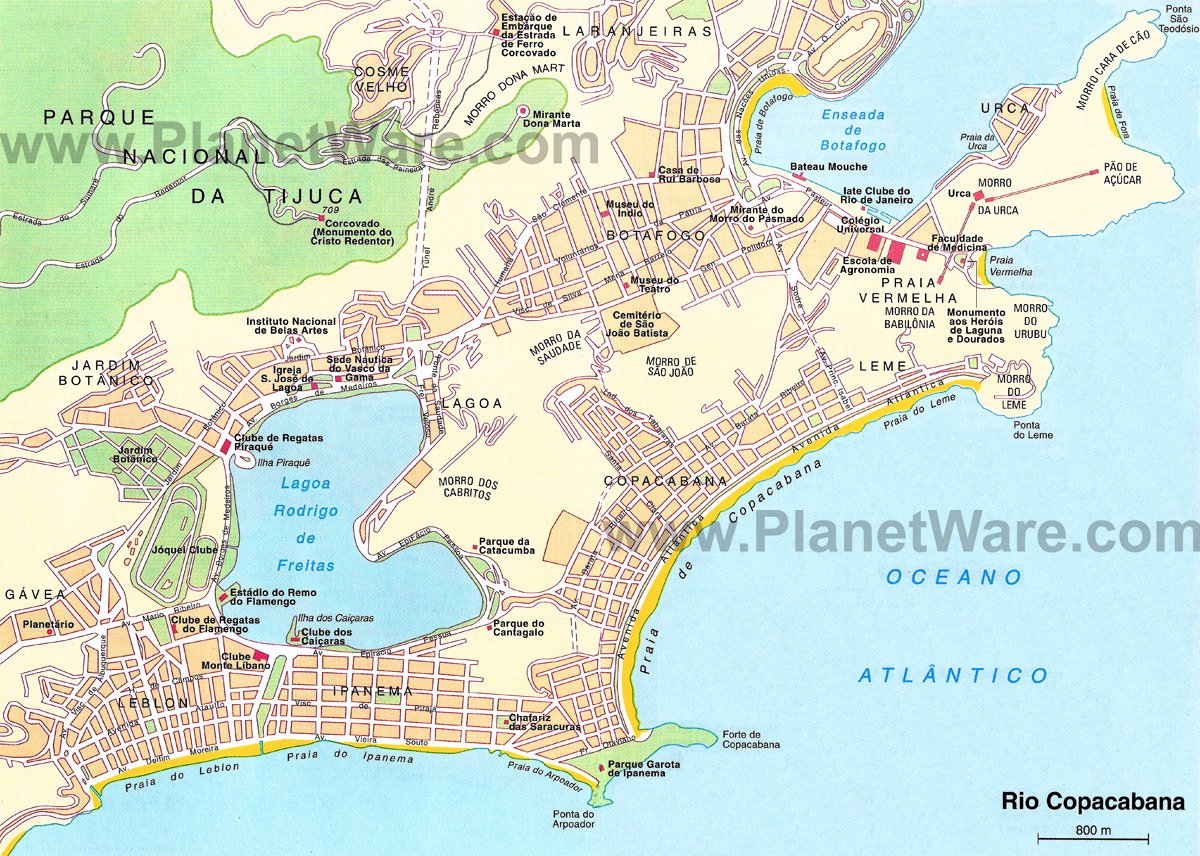
Continuing on westward from Copacabana's four-kilometer strand, the beaches of Ipanema and Leblon are separated by the Jardim de Alá Canal, which drains the lagoon, Lagoa Rodrigo de Freitas. Along the seafront promenade are large hotels, sidewalk cafés, and restaurants.
These two districts, although best known for their beaches (one of which was made world-famous by the song The Girl from Ipanema ) have a lively cultural life, with art galleries, cinemas, and an avant-garde theater. Praça de Quental in Leblon is the scene of an antiques market every Sunday, and Praca General Osorio hosts the Sunday Feira de Artesanato de Ipanema featuring crafts, music, art, and local foods.
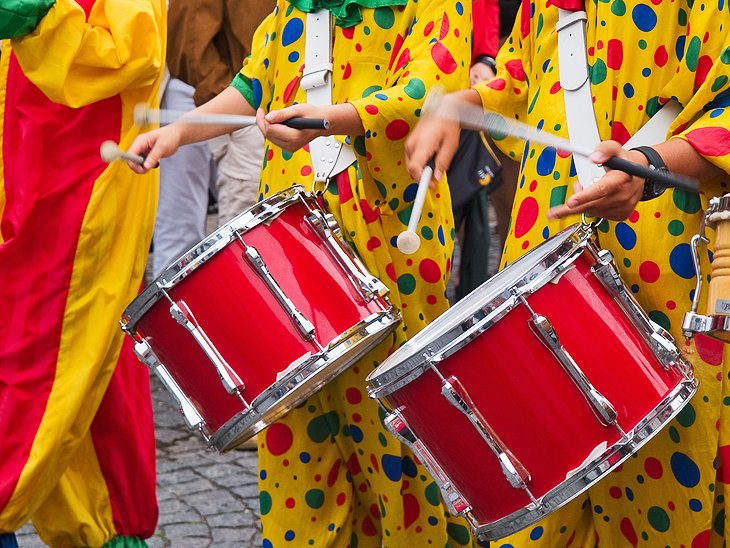
Carnaval is the biggest event of the year on the city's calendar. The festival brings a riot of color and endless action to the streets of Rio each February (sometimes late January, depending on the year). Some visitors plan their entire trip to Brazil around Carnival, and if you are going to attend, you need to do some serious advanced planning.
The celebrations begin shortly after New Year, but the splendor and extravagance reaches its spectacular climax in the four days before Ash Wednesday, attracting hundreds of thousands of spectators to its street parades, samba parties, and shows. Other Brazilian cities celebrate Carnaval; it is also a major tourist event in Bahia and Recife, but Rio's is the most lavish.
The most spectacular events are the parades of the samba schools, which are held in a unique venue designed by renowned Brazilian architect Oscar Niemeyer. The Sambódromo is a long parade route lined by stadium-style boxes designed so that up to 90,000 spectators can watch the parades of brilliantly costumed dancers as they compete. The parade route is 700 meters long and 13 meters wide. It was first used in 1984 and updated as a venue for the 2016 Olympic Games.
Address: Rua Marquês de Sapucaí, Rio de Janeiro
Official site: www.sambadrome.com
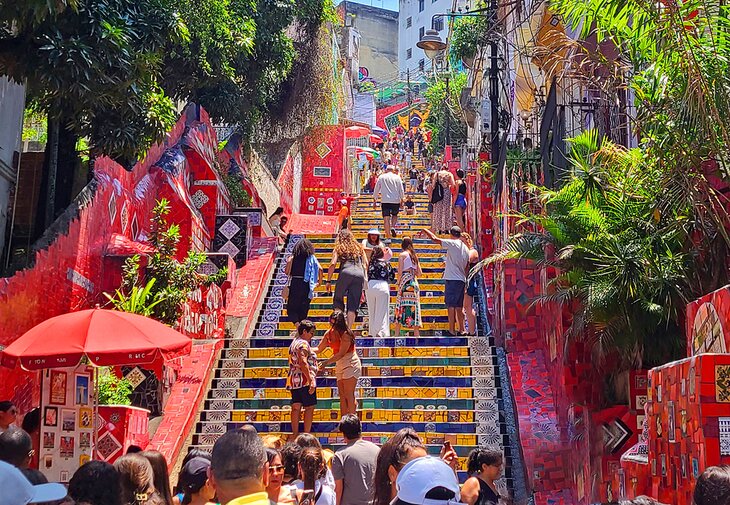
A fun distraction when visiting Rio is the Selaraón Steps. Colorful stairs wind their way up a steep incline, each decorated with an assortment of tiles.
Work on the stairs began in 1983 by Jorge Selearón, who collected tile castoffs and affixed them to the dilapidated staircase running outside his home. Until his suspicious death in 2013, the somewhat eccentric artist kept adding, replacing, and repairing the tiles on stairs in the colors of the Brazilian flag and the tiles on the edges of the staircase in red.
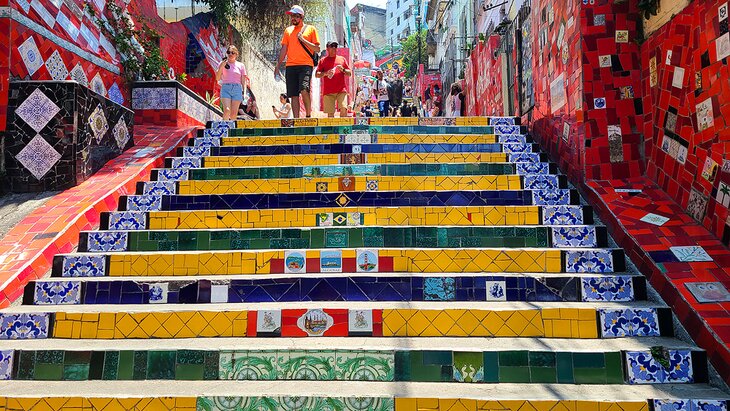
The stairs are exceptionally photogenic and attract large crowds during the day. If you want to get the iconic shot with the staircase name, those tiles are near the bottom of the 125-meter-high staircase. Be sure to walk to the top of the stairs to get a feel for the amount of work Selearón put into this monument.
Small restaurants on shops selling cold beverages line the stairs. A good stop is a small restaurant at the top; it has a shady patio, a bit of a breeze, decent food, is well-priced, and provides good views of the stairs and a bit of downtown Rio.
The area around the stairs is a bit gritty (some call it Bohemian), I wouldn't recommend venturing too far away from the stairs, and I wouldn't come here at night.
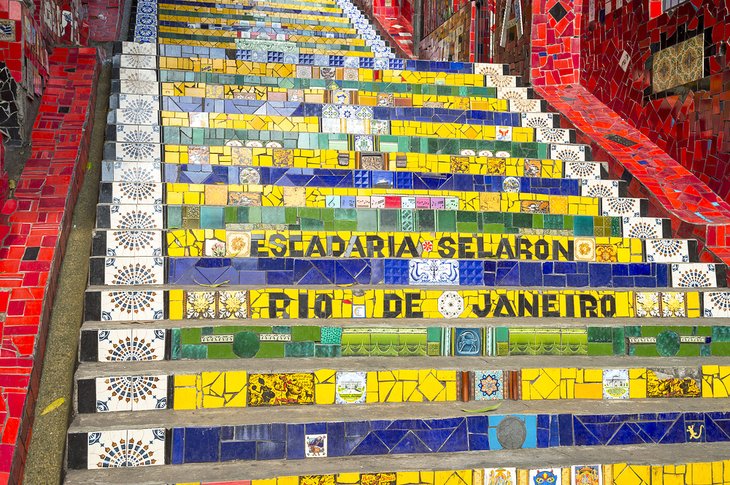
If you've had enough of the urban beat of Rio de Janeiro and crave a bit of nature, take a trip over to the Botanical Gardens. The wide trails under the canopy of green are well-maintained and provide an oasis of calm and a pleasant change from the concrete jungle nearby.
A highlight is Aleia Barbosa Rodrigues, a wonderful wide walkway lined on both sides by towering Royal Palm trees with the famous Fountain of the Muses in the middle. Near the fountain is a giant Kapok tree.

The gardens are a UNESCO World Biosphere site and are home to over 8,000 species of plant life. Trails are well marked in English and be sure to follow the signs to both the Orchidarium, an iron-and-glass greenhouse built in the 1930s, and the Japanese Gardens.
Note that an admission fee is charged to enter and at the time of writing only cash was accepted.

Address: R. Jardim Botânico, Rio de Janeiro
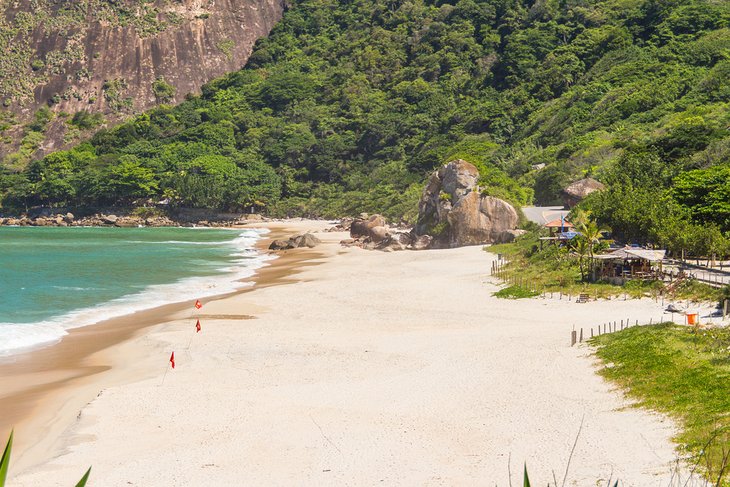
If you have visited the beaches of Copacabana and Ipanema and still crave more, but at the same time are looking for something a bit different, take the 20-kilometer jaunt down to Prainha. Where the rainforest meets the ocean, this beach is more natural than the ones in the heart of Rio.
Golden sands and large round boulders are lapped by the sea, and finding your own patch of sand to soak up the sun is never an issue. If you like to surf, this is the place to do it. Nice right and left breaks provide consistent rides in May, then flatten out until September.

A must-see for football (soccer) fans when a game is scheduled, Brazil's largest stadium was home to the opening and closing ceremonies of the 2016 Summer Olympic Games. It was completely renovated for the FIFA World Cup 2014 and holds more than 78,000 fans.
The stadium is used for matches between Rio's major football clubs, the Flamengo, Botafogo, Fluminense, and Vasco da Gama, as well as for concerts. The brief tour would be of interest to avid fans, but others should give it a miss.
The shore of Lagoa Rodrigo de Freitas , near Copacabana and Ipanema, where many other Olympic events took place, is lined by parks and sports clubs, and its waters are popular for regattas and other water sports.
Address: Av. Pres. Castelo Branco, Rio de Janeiro
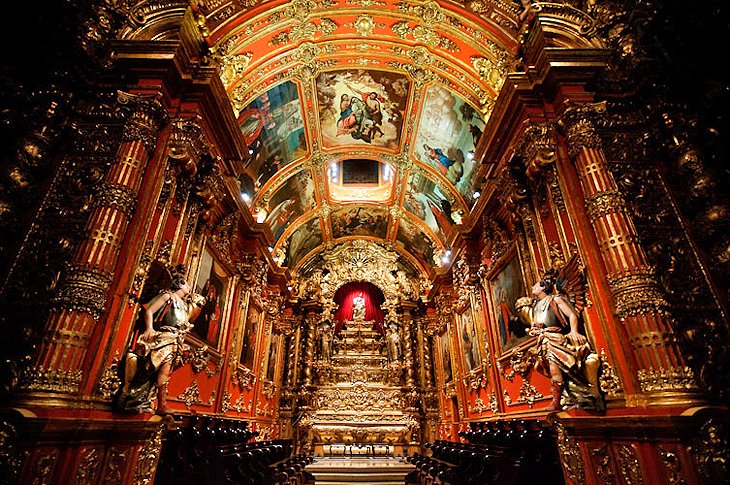
On the hill just above the harbor are the church and monastery of São Bento, one of the finest Benedictine complexes in Brazil. The original 1617 church was without aisles until it was enlarged in the second half of the 17th century by the addition of eight side chapels. The finest artists of the Benedictine order were involved in decorating the interior.
The exuberant carving that covers the walls and ceiling was mainly the work of a monk named Domingos da Conceição, who was also responsible for the figures of St. Benedict and St. Scholastica on the high altar.
The choir chapel has silver work by Mestre Valentim and 14 paintings by Ricardo do Pilar, a monk who was the foremost Benedictine painter of colonial Brazil. His masterpiece, Senhor dos Martírios (Christ of the Passion), is in the sacristy of the monastery.
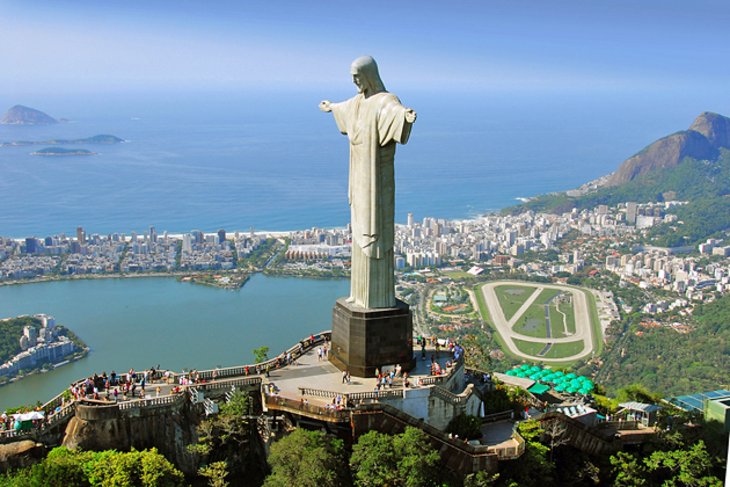
Tijuca National Park protects the Tijuca Forest and several viewpoints overlooking the city, and surrounds Cristo Redentor , the giant-sized statue of Christ on Corcovado. To explore the park, you can leave the train up to Corcovado at a midpoint and follow the road through the forest.
The 3,300-hectare Tijuca Forest, one of the world's largest forests within a city , was planted in the late 1850s on land that had been destroyed by coffee plantations, to safeguard the springs that supplied Rio de Janeiro's water. Most of the trees are native species and provide habitat for Capuchin monkeys, quatis (Brazilian raccoon), colorful toucans, hawks, brilliant blue butterflies, and many other species of wildlife, which you may spot while exploring its trails and roads.
Near the station of the Corcovado railway is Largo do Boticário , one of Rio's most picturesque squares, surrounded by colonial-style houses. From the pagoda-style pavilion at Morro da Vista Chinesa, 380 meters above the shore, are views of the Municipal Park, the Botanic Garden, and a long stretch of the south coast.
There are more views from Mirante Dona Marta, a viewpoint on a spur of rock above Botafogo Bay. Several waterfalls drop from the forest springs, including the 30-meter Cascatinha Taunay .
Set in extensive gardens near the park is the Museu do Açude , with the valuable porcelain collections of the West India Company; old views of Rio de Janeiro by Brazilian and foreign artists; and azulejos, traditional Portuguese tiles from the 17th through 19th centuries.
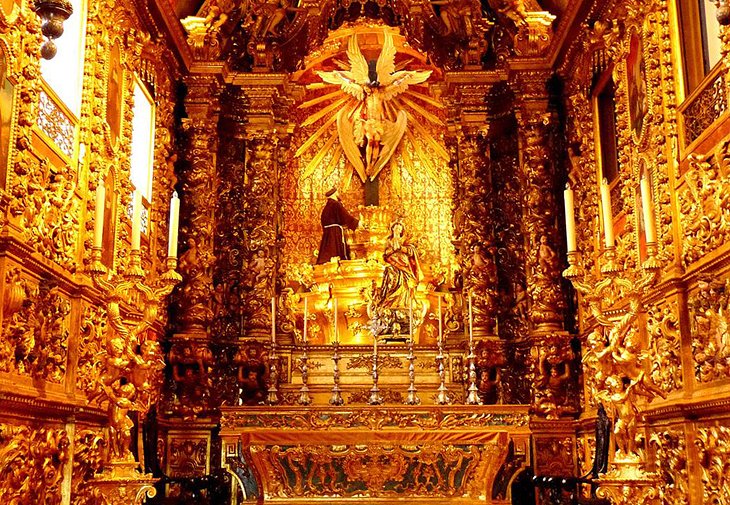
The Igreja da Ordem Terceira de São Francisco da Penitência is divided into three sections with separate entrances, and the simple façade of this church belies the riches within. The interior, which was begun in 1657 and completed in 1773, is a riot of gilded wood carving.
Among those who contributed to the decoration of the interior were Manuel and Francisco Xavier de Brito, two leading Portuguese sculptors and woodcarvers. They had very similar styles, known as Brito, using decorative forms that influenced Aleijadinho and other masters of Brazilian Baroque.
The ceiling of the choir has the earliest trompe-l'oeil painting in Brazil, completed in 1736, the work of Caetano da Costa Coelho, who later painted the ceiling of the nave in the same style.
Address: Rua da Carioca, Rio de Janeiro
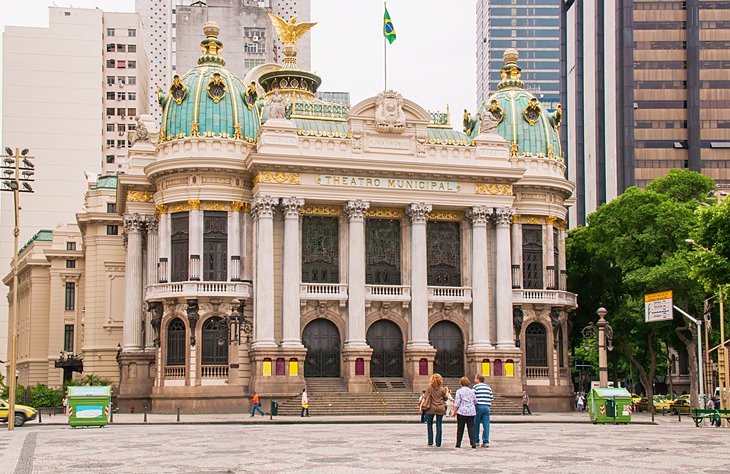
The grand Municipal Theater, built in the early 20th century, was inspired by the Paris Opera of Charles Garnier, and its interior is even more ornate and luxurious than the dramatic towered façade. Important highlights to see are the sculptures by Henrique Bernardelli and paintings by Rodolfo Amoedo and Eliseu Visconti, as well as the drop curtain, the proscenium frieze, and the ceilings.
Guided tours, some in English, are available or, better yet, attend a classical concert or ballet performance here.
Address: Praça Floriano, Rio de Janeiro
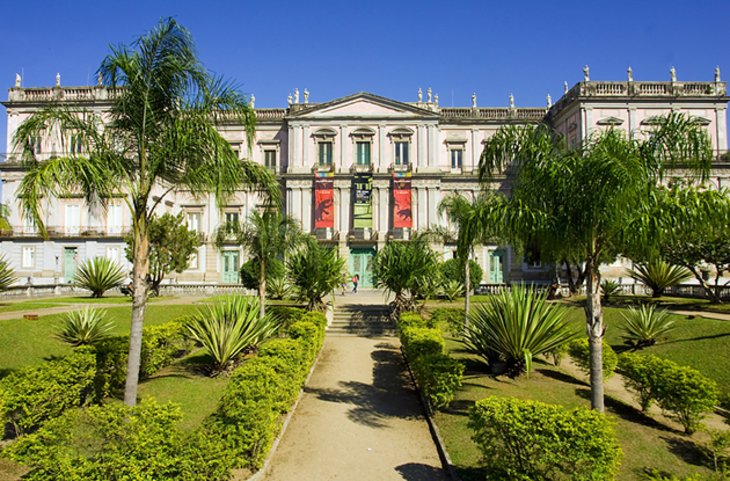
The gardens, villas, and imperial palaces of São Cristóvão are now public parks and museums, the foremost of which is Quinta da Boa Vista. From 1808 to 1889, the palace was the residence of the royal and the imperial family and was later altered and rebuilt as the Palácio de São Cristóvão. It houses the National Museum , which has the largest zoological, botanical, ethnographic, and archaeology collections in the country, totaling more than a million items.
In the expansive park are gardens with lakes, woodlands, and caves, which you can reach via a miniature railway. Also inside the park is a zoo with more than 2,000 species of mammals, birds, and reptiles from Brazil and around the world.
Address: São Cristóvão, Rio de Janeiro

The parish church of Nossa Senhora do Carmo was the Capela Real (Royal Chapel) from 1808 to 1889 and the cathedral until the modern one replaced it in 1976. Connected to it by a passage is a second Carmelite church, Monte do Carmo, begun in 1755.
Highlights are its Baroque façade, stone doorway, and the white and gold carving by Mestre Valentim in the Chapel of the Novitiate. The 1761 former cathedral is richly decorated with carving and has a silver high altar. In a side street is the chapel of Nossa Senhora do Cabo da Boa Esperança (Our Lady of the Cape of Good Hope), the last surviving street oratory in the city.
Address: Rua 1 de Maráo (off Rua do Ouvidor), Rio de Janeiro
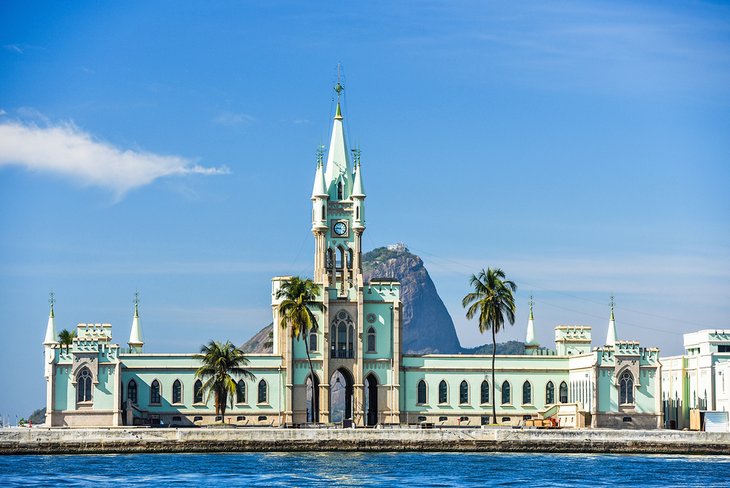
This neo-Gothic castle in Rio de Janeiro's harbor was built in 1889 and used for many years as a customs inspection building. Today this architectural gem, complete with turrets and towers, is open to the public.
Inside Ilha Fiscal, you'll find smooth hardwood floors with mosaic patterns throughout, while impressive stained-glass windows glow in Rio's tropical sun. As you wander around, take a stroll through the museum that showcases Brazilian naval history.
Access to the island is generally by boat , which passes some spectacular scenery along the way including colonial architecture on Ilha das Cobras and the skyline of downtown Rio. The ride is about 20 minutes .
Prior to departure, you are welcome to wander around and check out some military hardware including a helicopter, tank, and a submarine which you can go inside. Buying tickets can be done in person but it's best to purchase them in advance online at the official website where you can select the date and time of your tour.
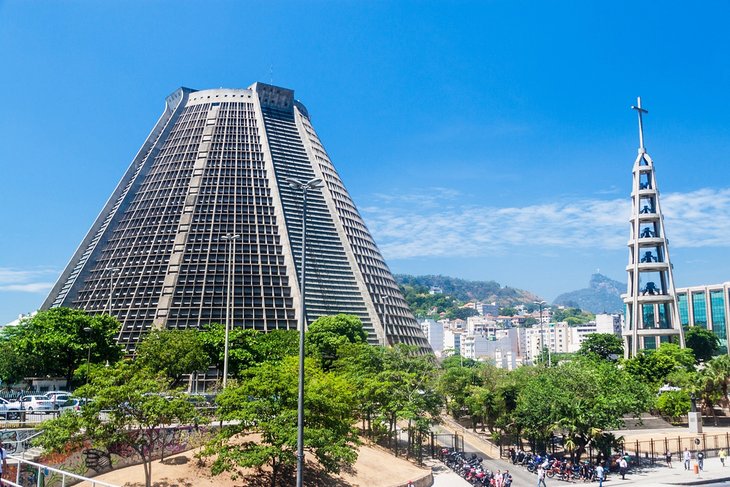
Architect Edgar Fonseca, who designed Rio's Catedral de São Sebastião, took his inspiration from Mayan pyramids, interpreting their soaring forms in a modern context. Built between 1964 and 1979 and often referred to as the New Cathedral to distinguish it from its immediate predecessor, Nossa Senhora do Carmo, the church seats 5,000 in its 96-meter interior. Four stained glass windows rise 64 meters from the floor to light the interior with brilliantly colored natural light. At night, the church is lit from within, a bright beacon in the central skyline.
If you are visiting the Selaraón Steps, the church is visible from the restaurant at the top of the staircase, just look off to your left.
Address: Av. Chile 245, Rio de Janeiro
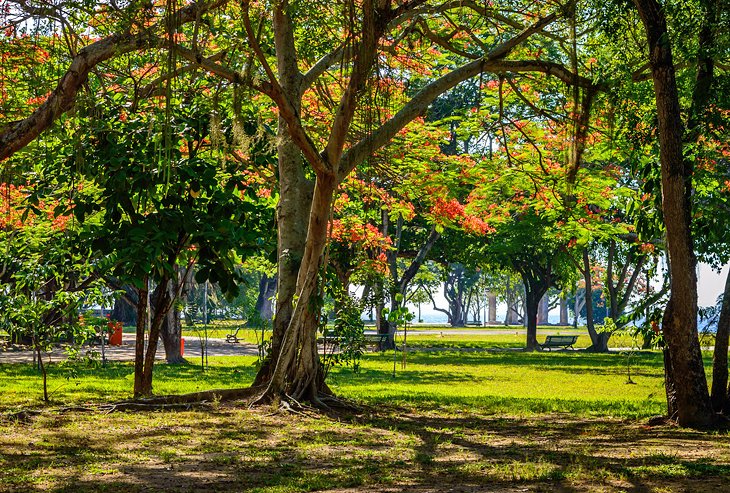
The island of Paquetá, with an area of a little more than a square kilometer, lies in Guanabara Bay, an hour's boat trip from Praça 15 de Novembro . It became a fashionable resort in the early 1800s, when Portuguese Emperor Dom João VI spent his summers here (the colony of Brazil became the seat of the Portuguese Empire in 1808, when Napoleon's armies occupied Portugal).
Solar del Rey, a palace in which Dom João VI frequently stayed, is among the interesting old buildings, which also include the 1698 chapel of São Roque and the house of José Bonifácio de Andrada e Silva, father of Brazilian independence. No cars invade the peace of the island, but you can explore it on foot, by rented bicycle, or in a horse-drawn carriage. Palms line the island's beaches, where you'll find impromptu food stands grilling fresh fish.
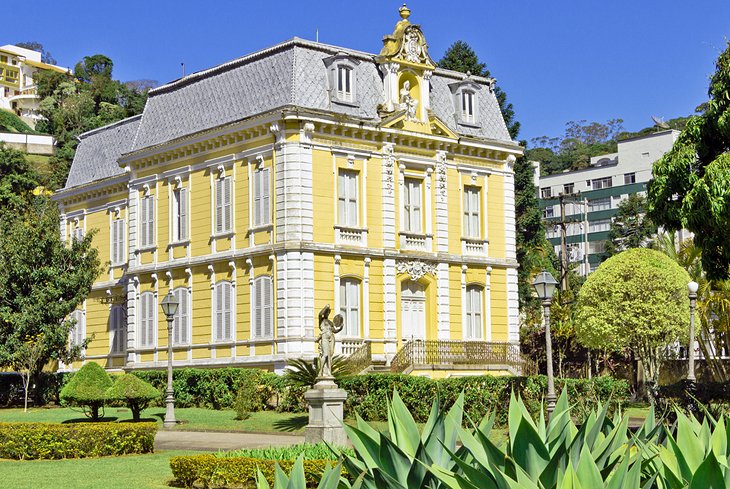
Petrópolis, 68 kilometers from Rio de Janeiro, sits high in a forested valley of the Serra dos Órgãos and was chosen by King Pedro II of Brazil as his summer home. Aristocrats quickly followed, building their own summer palaces and villas and making Petrópolis an elegant upper-class resort.
It was later a favorite of artists and intellectuals and a popular tourist destination for its beautiful buildings and pleasant year-round climate. Today, the former Summer Palace is the Imperial Museum , filled with memorabilia from the days of the Brazilian Empire. Also worth seeing are the Cathedral of Saint Peter of Alcântara , the Crystal Palace, and the house of aviation pioneer Santos-Dumont.
Rio de Janeiro stretches between the bay and mountains, its attractions so spread out that there is no neighborhood convenient to more than a few of them. Fortunately, Rio's Metro system is fast and efficient, so the best hotels for tourists are in the safe beach neighborhoods of Copacabana and Ipanema, amid restaurants and shops and handy to Metro access. Another option is Botafogo, a residential area adjacent to Copacabana, near the cable car to Sugarloaf. Here are some highly-rated hotels in Rio de Janeiro.
Luxury Hotels :
- Featuring a scenic rooftop pool, Miramar Hotel by Windsor is right on Copacabana beach, where sun chairs and umbrellas are available for guests; it's a short walk from Ipanema.
- Belmond Copacabana Palace is an icon of Copacabana's reputation for sophistication and glamor, a place where film stars and royalty have basked in Old World elegance.
- The rooftop pool at JW Marriott Hotel Rio de Janeiro overlooks Copacabana Beach (umbrellas and chairs are reserved for guests) and there is a spa and fitness center.
Mid-Range Hotels:
- A block off the beach, the friendly Ipanema Inn offers personal service in the midst of Ipanema's vibrant dining and arts scene.
- On a quiet street in the heart of Copacabana, Hotel Sesc Copacabana is a block from the beach and surrounded by restaurants and shops.
- Also a block off the beach, Windsor Palace Hotel has a small rooftop pool, a large breakfast buffet, and a free airport shuttle.
Budget Hotels:
- Ibis Copacabana Posto 5 is a few blocks off the beach and near the Metro station, with plenty of dining options nearby.
- Close to the Metro in residential Botafogo, one stop from Copacabana, Ibis Rio de Janeiro Botafogo is near the Sugarloaf cable car.
- So is Mercure Botafogo Mourisco , whose higher rooms have a view of Christ the Redeemer on Corcovado.
- Day Tour: On an eight-hour Full Day Complete Tour of Rio de Janeiro, you'll get a good overview of the city, with stops to visit the major highlights, including Copacabana beach, the Tijuca Forest, Christ the Redeemer statue on Corcovado, the Metropolitan Cathedral, Escadaria Selarón, and the Baroque São Bento Monastery. Also included in the tour is the cable car ride to Sugarloaf and lunch at a steakhouse.
- Corcovado and Sugarloaf Tour: See Rio from the two most prominent points in the city on the Corcovado Mountain, Christ Redeemer, and Sugarloaf Mountain Day Tour . This full day of Rio's most famous landmarks includes a cable car ride to the top of Sugarloaf Mountain and travel by van or cog train through the Tijuca Rainforest to the Christ the Redeemer statue.
- Jeep Tour: Explore the immense National Park on the slopes of Corcovado on a Tijuca Rain Forest Jeep Tour from Rio de Janeiro. As you ride through the rainforest in an open-top Jeep, you'll have a four-hour eco-tour, with a hike to observe butterflies, monkeys, sloths, and birds. Stop to see the Cachoeira dos Macacos (Waterfall of the Monkeys) and for panoramic views from Vista Chinesa (Chinese View) as you learn about the flora of the Mata Atlântica from your guide.
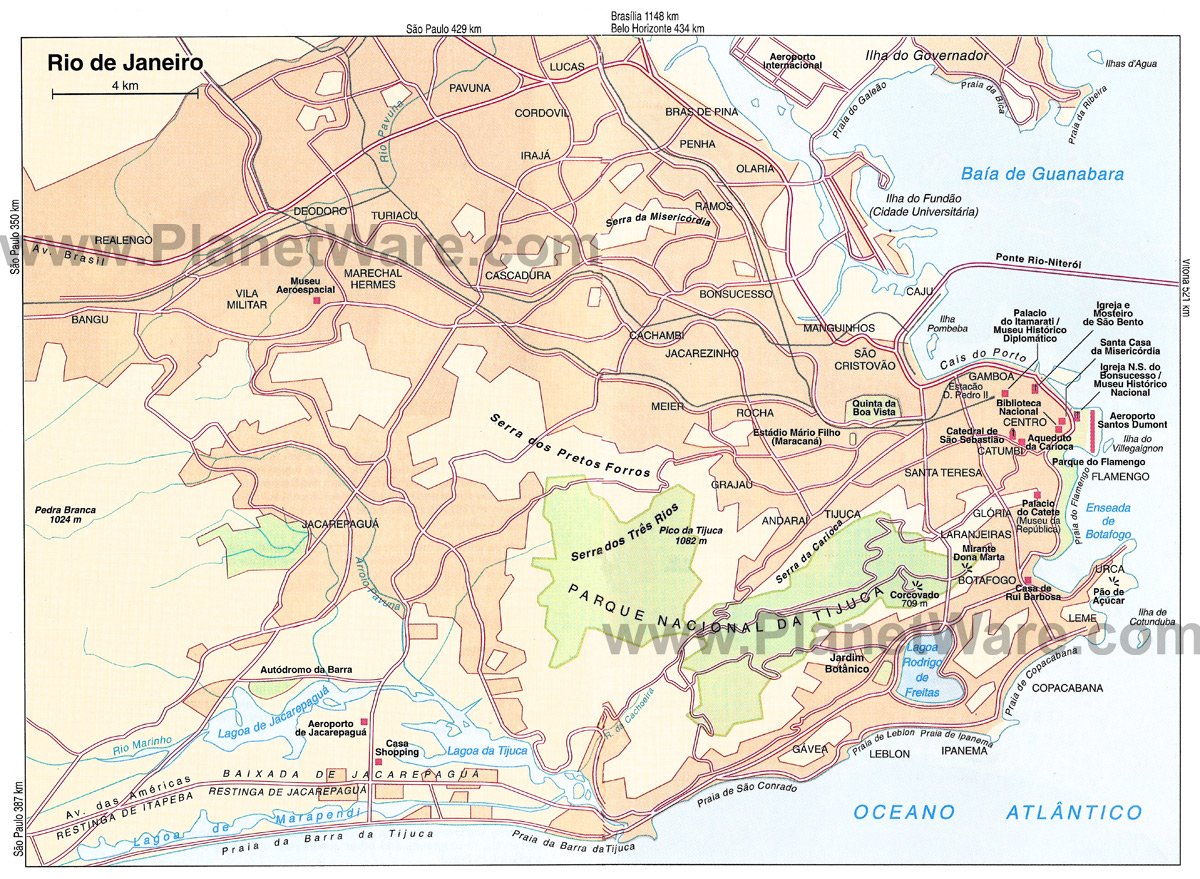
More on Brazil

- Search Please fill out this field.
- Manage Your Subscription
- Give a Gift Subscription
- Sweepstakes
- Travel Destinations A-Z
Rio de Janeiro Travel Guide
:max_bytes(150000):strip_icc():format(webp)/megan-wood-6806d519c0a24609b8841ef4ac685e94.jpg)
In Rio de Janeiro, every day is a party. Rio, as it's usually called, is a place like absolutely no other in the world. The jet set and glitterati descend here year-round for the white-sand beaches, bass-forward nightlife, and five heady days of Carnival bacchanal celebrations in February or March. But you don't have to be a thong-clad party seeker to appreciate the literal highs of mountainous Rio. The breathtakingly beautiful city is home to landmark sites like the Christ the Redeemer statue and world-class art museums. Sprinkle in beach volleyball matches, samba dancing, and stunning tropical mountains meet azure sea scenery you won't find anywhere else. But there are a few things to keep in mind: Brazil no longer requires a visa for American visitors (you'll pay an airport departure tax instead); the language is Portuguese, not Spanish; and the drug-trafficked favelas are a harsh reality. This Rio de Janeiro travel guide has everything you need to get started planning an unforgettable trip. Ready, set, Rio!
Brasilia Standard Time
Best Time to Go
Rio de Janeiro is a bustling and modern beachfront city, with something for tourists to see and do on and off the sand 12 months out of the year. Weather wise, December through March (Brazil's summer months) and September through November (spring in Brazil) means temperatures in the 70s to 90s and little rain. With Carnival comes crowds in February or March, but that's half the fun. It's no surprise New Year's Eve is another epically popular time to party in Rio.
Things to Know
Currency: Brazilian Real (R$)
Language: Brazilian Portuguese
I don't speak Portuguese: Nao falo portugues.
I'm lost: Estou perdido.
I would like…: eu gostaria
Learn more helpful phrases here.
Calling Code: +55 (Brazil) + 21 (Rio)
Capital City of Brazil: Brasilia
How to Get Around
Trains: The three-line subway system, called MetroRIo, is clean, convenient, and safe. This is the best way to get around the city and avoid traffic.
Buses: Cheaper than taxis and trains, but the buses in Rio are crowded and slow.
Taxis: Yellow taxis are widely available—insist the driver turn on the meter instead of haggling over the fare.
Car service: Uber is available in Rio. You'll need internet access on your phone to use the app. From Galeao Airport, Uber departs on the second level.
Best Hotels
Hotel fasano rio de janeiro.
Address: Avenida Vieira Souto, 80 - Ipanema, Rio de Janeiro - RJ, 22420-002, Brazil Phone: 55 21 3202 4000 Website
When famous hotelier Phillipe Starck brought a luxury boutique hotel to the Ipanema waterfront, he smartly designed much of the hotel (including the infinity pool) to overlook the beach. Apart from the vistas, the property pays homage to the glamorous era of Bossa Nova in the 1950s and 60s. The rooftop bar draws beautiful people for beautiful views of Sugarloaf Mountain.
Copacabana Palace, A Belmond Hotel
Address: Av. Atlântica, 1702 - Copacabana, Rio de Janeiro - RJ, 22021-001, Brazil Phone: 55 21 2548 7070 Website
Looking for a taste of the French Riviera on Copacabana Beach? The Copacabana Palace was built in 1923 and still retains much of its original architecture and retro art deco glamour. The 239 rooms mostly overlook the beach. The three restaurants and piano bar are highlights, but the real star of the show is the private beach—complete with attendants to watch your belongings while you frolic.
Santa Teresa Hotel RJ - MGallery by Sofitel
Address: Rua Almirante Alexandrino, 660 Santa Teresa, , Rio de Janeiro - RJ, 20241-260, Brazil Phone: 55 21 3380 0200 Website
Swap the beach for the mountains at Santa Teresa Hotel RJ. Once an 18th-century coffee plantation, the building is now a chic boutique hotel with unbeatable views of the city and Bay of Rio below. It's literally above the scene, but still very much a part of it—the onsite restaurant, Tereze, is considered one of the best in Rio.
Janeiro Hotel
Address: Avenida Delfim Moreira, 696 - Leblon, Rio de Janeiro - RJ, 22441-000, Brazil Phone: 55 21 2172 1100 Website
Style and eco-consciousness go hand in hand at the Janeiro Hotel. It's located in the glamorous Leblon neighborhood and across the street from Ipanema-Leblon Beach. Each of the 51 apartment-style suites has sea and Cagarras Islands views...some of the showers do too.
Best Restaurants
Address: Av. Afranio de Melo Franco, 290-406 A Phone: 55 21 3875 1830 Website
When it's too hot for a full meal, head to Mil Frutas (a thousand fruits) for a frozen treat. This sorbet shop makes close to 100 handmade flavors using fresh ingredients, including native fruits like araca, acai, and umbu.
Zaza Bistro Tropical
Address: Joana Angelica 40 Phone: 55 21 2247 9101 Website
Tropical flavors with Asian accents and organic ingredients are only part of what draws customers to Zaza. The restaurant is filled with art and upstairs you can kick your shoes off for a laidback dinner on throw pillows. Outdoor dining available.
Address: Av. Gen. San Martin, 889 Phone: 55 21 2540 8767 Website
Oro has been a darling on the Rio restaurant scene since it opened in 2010, winning two Michelin stars in 2018. Celebrity Chef Felipe Bronze combines a grill and creativity to create rustic dishes cooked on live fire. Reservations recommended.
Address: R. Barao da Torre, 538 Phone: 55 21 3202 2884 Website
Bazzar serves wild fish, sustainable seafood, and organic vegetables in modern presentations by chef Lira Muller. Global trends and vegetarian dishes are well represented. Psst, Bazzar is open for lunch and the front area is laid-back enough to visit looking salty after the beach.
Things to Do
Christ the redeemer.
Address: Parque Nacional da Tijuca - Alto da Boa Vista
The Christ the Redeemer statue is the undisputed symbol of Rio. The art deco-statue was built by a French sculptor in 1931, and the statue's arms stretch out a massive 92 feet wide. You can see the statue from multiple vantage points in Rio, but it's worth the cable ride up the mountain to see it up close.
Ipanema Beach
Address: Posto 8 through Posto 12 on the beach
A close second only to Copacabana Beach in popularity, Ipanema Beach has been a locals' and tourist favorite since at least the '60s. The two-mile stretch of sand features mountain views and cobalt water. The people watching isn't bad either.
Bar hop through Lapa
Address: Avenida Mem de Sa
A visit to the Lapa neighborhood is lovely in the day, but visit after dark for an unforgettable nightlife scene. The neighborhood overflows with samba music and revelers. Rio Scenarium is three stories of music and dancing. Also check out Lapa 40 Graus and Clube Dos Democraticos, where locals have been cutting a rug since 1867.
Ilha Fiscal
Address: Avenida Alfredo Agache
Check out the unexpected: a green neo-gothic 19th-century palace, which sits on its own miniature island in the city. Ilha Fiscal is a stylish reminder of when Rio was the capital of the Brazilian Empire.
Best Shopping
Tropicalia discos.
Address: Praca Olavo Bilac, 28 Phone: 55 21 2224 9215 Website
Located on the second floor of a nondescript building, Tropicalia Discos is a vinyl goldmine. This is the go-to for Brazilian music, with records from Bossa nova to samba to jazz.
Address: Av. Ataulfo de Paiva, 270 Phone: 55 21 2274 7808 Website
Rio's laidback and colorful street style is inspired by the beach and tropical climate. Dress the part with floral bikinis and flowing dresses from Osklen.
Granado Pharmacies
Address: Av. Barao de Tefe, 3 Phone: 55 21 3231 6700 Website
Shopping at local pharmacies is the beauty secret to sourcing local soaps, perfume, and toiletries. There are multiple Granado Pharmacies in Rio. Stop in and nose out your favorite scents. Pro tip: the pretty packaging makes for perfect gifts.
Address: Paschoal Carlos Magno 100 Phone: 55 21 99640 1710 Website
Support the Amazonian community by shopping for handmade goods at Tucum. This small shop exclusively carries woven baskets, jewelry, pottery, and wall hangings made with Amazonian seeds and fibers.
Neighborhoods to Know
Rio is a sprawling city, but each neighborhood has a distinct vibe. Think of Rio more like a collection of small beach and mountain towns, and it's less overwhelming. Copacabana and Ipanema are obvious beach neighborhoods, but a tram ride up to Santa Teresa is worth it for the boho vibe, ocean views, and samba clubs. Leblon is the neighborhood for pure glitz and glamour and the small footprint means you can check out most of the high end boutiques and chi-chi wine bars in one visit.
Rio is known for its beaches, and thankfully the weather usually cooperates enough to enjoy them year round. January through March sees temperatures in the low 90s—it's too hot to do much of anything besides swim. July, August, and September are the coolest months with lows in the mid 60s, but also the driest. Hurricanes are a rarity in Rio de Janeiro.
Apps to Download
WhatsApp : Free messaging, video calls, making dinner reservations Android | iOs
ChefsClub : Find restaurants, bars, and make reservations Android (not on Android) | iOs
Bravolol Limited : Look up words and sentences in Portuguese, translate Android | iOs
Carioca Routes
Take rio with you, carnaval 2024, what's the good thing to do in rio, rio city of carnaval.

Cristo Redentor
Things to do

Culture and Art

The Royal Court of Carnaval 2024

ROLÉ IN THE FAVELAS CARIOCAS

Rotas Cariocas

Rio’s Coffees

Pequena África (Little Africa)

AMAZING PLACES TO GET MARRIED IN RIO
Where to stay

HOLOCAUST VICTIMS MEMORIAL

Copacabana and Leme

Tijuca Forest

Paquetá Island

PRAIA CIRCULAR

Colors of Brazil

Carmen Miranda Museum

Municipal Theater

Igreja de Nossa Senhora da Candelária

MAM - The Modern Art Museum
Museums and Cultural Centers

Pedra da Gávea

Museu do Amanhã (Museum of Tomorrow)
Where to eat
RESTAURANTS

Botanical Garden

Listed Bars

Rio de Janeiro Marine Aquarium (AquaRio)

Rio’s BioPark

QUINTA DA BOA VISTA

Sítio Burle Marx

Maracanã Stadium

Olympic Golf Course

Cidade das Artes Bibi Ferreira

Largo São Francisco da Prainha

Penhas Staircase

Docklands Area

Lapa Arches

Escadaria Selarón (Lapa Steps)

Santa Teresa Tram

Belmond Copacabana Palace

Centro Cultural Banco do Brasil - CCBB

Ilhas Cagarras
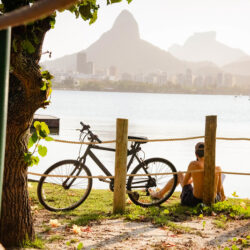
Lagoa Rodrigo de Freitas

Para entrar em contato conosco, envie um e-mail para [email protected] ou preencha o formulário abaixo.
City of Rio de Janeiro
Mayor Eduardo Paes
RIOTUR - CITY OF RIO DE JANEIRO TOURISM AUTHORITY
Presidente Patrick Corrêa
Organization and Editing
Bianca Garcia (jornalista responsável - MTB 36714) e Marcio Formiga
Marcio Formiga, Fábio Machado e Tiago Bandeira
Reportagem, edição e revisão
Bianca Garcia, Jéssica Vidal e Tiago Bandeira
Photographer
Alexandre Macieira
Endomarketing
Cléa Cortez, Marisa Pinheiro, Vera Von Jess e Wanda Rocha
Web Support
Pedro Braconnot

Send by email
Sending message...
Join the journey: Click here to get our top tips for affordable travel!

The Ultimate 3 Day Rio De Janeiro Itinerary (2023)

Rio de Janeiro is one of my favorite cities of all time. I will never forget first flying into Rio and taking in the breathtaking views of the mountains meeting the beautiful beaches found throughout the city. I have since visited twice more and grow move in love with the city each time I visit. Rio is an enchanting city, where vibrant culture, breathtaking landscapes, and infectious energy converge in perfect harmony. Nestled along the stunning southeastern coast of Brazil, Rio de Janeiro captivates visitors with its iconic landmarks, golden beaches, and a rich history that spans centuries. Whether you’re seeking the pulsating rhythms of samba, the awe-inspiring vistas from atop Corcovado Mountain, or the exhilaration of Carnival, Rio de Janeiro promises an unforgettable experience. In this Rio de Janeiro Itinerary, you’ll learn why Rio is the one of the most visited cities in South America, and the most visited in Brazil – rivaling nearby São Paulo . Keep reading to embark on a journey through this tropical paradise, uncovering hidden gems, indulging in delectable cuisine, and getting insight into the captivating spirit of Cidade Maravilhosa, the Marvelous City.
Brief History | Rio De Janeiro
Before the arrival of the Europeans, Rio de Janeiro and its surrounding region were inhabited by indigenous tribes who lived in harmony with the abundant natural resources. The land was teeming with lush rainforests, pristine rivers, and stunning coastlines. Native tribes, such as the Tupinambá and the Temiminó, called this region their home, relying on hunting, fishing, and agriculture to sustain their communities. They had a deep connection with the land, respecting and cherishing its beauty. The indigenous peoples of Rio de Janeiro possessed rich cultural traditions, which included vibrant art, music, and spiritual practices. Their presence and heritage laid the foundation for the city’s future, leaving an indelible mark on the cultural fabric of Rio de Janeiro.
The arrival of European explorers in the 16th century marked a turning point in Rio de Janeiro’s history. Portuguese explorer Gaspar de Lemos, captivated by the natural beauty of the region, christened it “Rio de Janeiro” or “River of January” due to the mistaken belief that Guanabara Bay was the mouth of a large river. The Portuguese eventually established a settlement in the area, which became the nucleus of the city that would flourish in the centuries to come.
Throughout the colonial era, Rio de Janeiro served as a strategic port for the export of Brazil’s vast wealth, including precious metals and sugar. In 1763, the city became the capital of Brazil , consolidating its importance as a center of political and economic power within the Portuguese empire. The construction of grand architectural landmarks, such as the Candelária Church and the Royal Palace, showcased Rio de Janeiro’s growing prominence as a cosmopolitan city.
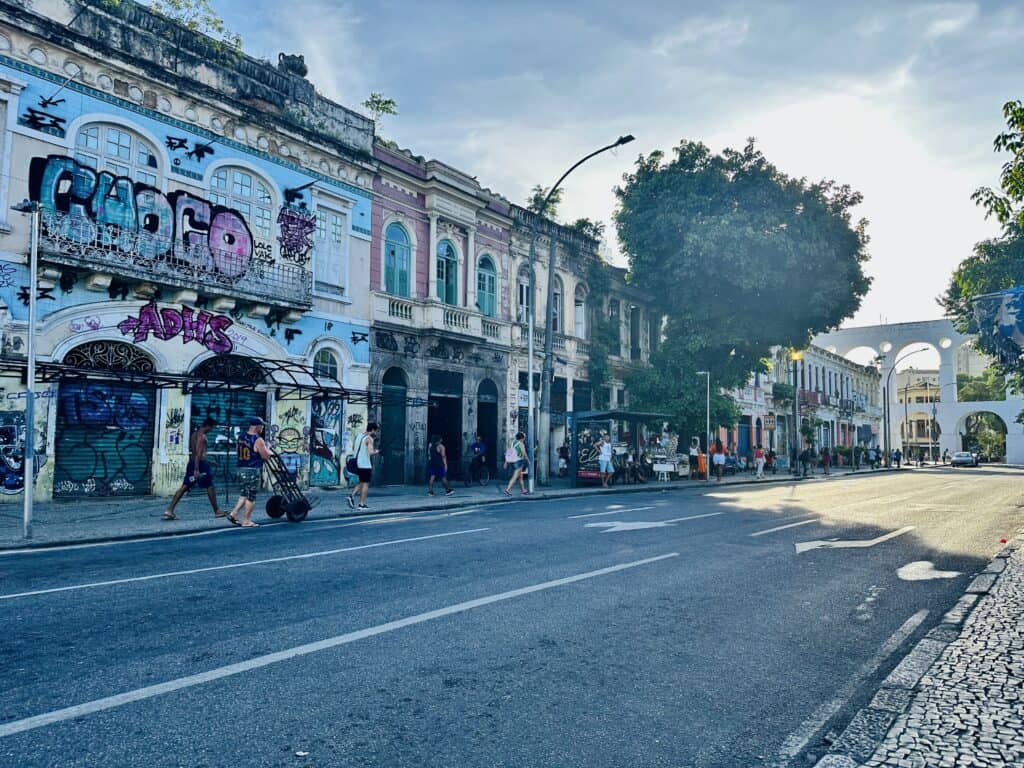
The 19th century brought monumental changes to Rio de Janeiro as Brazil gained independence from Portugal in 1822. The city became the capital of the newly formed empire, and a wave of urbanization and modernization swept through its streets. The iconic Botanical Garden and the São Cristóvão Palace were built during this period, reflecting the city’s commitment to scientific and cultural advancements.
In the 20th century, Rio de Janeiro solidified its reputation as a global metropolis, and a leader in Latin America . The city witnessed significant social and cultural transformations, from the influx of migrants during the industrial boom to the vibrant celebrations of Carnival, which became an emblematic event known worldwide. Hosting the 2016 Summer Olympic Games further elevated Rio de Janeiro’s international stature, showcasing its natural splendor and the resilience of its people.
Know Before You Go | Rio De Janeiro
Getting to rio de janeiro.
Air : The most common and convenient way to reach the city is by plane, and the city is serviced by two airports:
- The Galeão International Airport (GIG) serves as the main gateway for those visiting the city – particularly for international flights. However, you will find domestic flights departing from this airport as well.
- The Santos Dumont Airport (SDU) is the second major airport in the city, and it serves domestic flights throughout the country.
Car : Traveling by car is another popular choice, especially for those exploring Brazil’s diverse landscapes. Highways and well-maintained roads connect Rio de Janeiro to neighboring cities and regions, allowing travelers to embrace the freedom of the open road while enjoying captivating scenery. If you prefer to travel by car, get your car rental today .
Bus : If you prefer the scenic rout, but don’t care to drive, FlixBus is a good option to travel between cities in Brazil via bus.
Where to Stay in Rio
There are a few areas that I recommend you consider when visiting Rio. The beachside neighborhoods of Copacabana and Ipanema are among the most popular choices, offering stunning ocean views, a vibrant atmosphere, and a plethora of accommodation options. Here, visitors can find luxury hotels, charming boutique guesthouses, and stylish apartments, all within walking distance of the iconic beaches and an array of dining and entertainment establishments. This is the area that I have stayed for all of my visits to Rio. I love waking up by the water and this is the best place to do that.

Copacabana Hotel recommendation
Jw marriott rio de janeiro.
This hotel is situated right on the oceanfront of Copacabana. It features a rooftop swimming pool, spa, gym, and several restaurants and bars. I have stayed here multiple times because the service is great, and the rooms are quite comfortable. The buffet breakfast here is wonderful as well.
For those seeking a bohemian and artsy vibe, Santa Teresa provides a unique experience with its cobblestone streets, colonial architecture, and eclectic boutiques. This hilltop neighborhood is home to charming bed and breakfasts and boutique hotels that exude charm and offer breathtaking views of the city.

Santa Theresa Hotel recommendation
Pousada rio144.
This boutique hotel features an outdoor swimming pool, a garden, bar, and terrace. Guests have noted the spectacular views it provides of the city, as well as comfortable beds, and excellent service.
Alternatively, the upscale neighborhood of Barra Tijuca offers a more exclusive and residential feel. This area was made to resemble like Miami, and is best known for the luxury hotels and high-end shopping you find here.

barra tijuca Hotel recommendation
Lagune barra hotel.
This hotel offers panoramic view of Lagoa de Jacarepaguá, just a few minutes away from the Olympic Park. This hotel offers an outdoor pool, private parking and an onside fitness center and restaurant. In addition the hotel offers a buffet breakfast every morning.
When to Go to Rio
The best time to visit Rio de Janeiro largely depends on personal preferences, as the city enjoys a tropical climate, with warm temperatures year-round. However, there are a few factors to consider based on your personal preferences. The high season for tourism falls between December and March when the city is bustling with visitors and the famous Carnival takes place. This period offers a lively atmosphere, vibrant street parties, and sizzling summer temperatures.
If you prefer a more relaxed and less crowded experience, consider visiting during the shoulder seasons of spring (September to November) or autumn (March to May). During these months, the weather remains pleasant, and you can explore the city’s attractions and beaches with relative ease. Additionally, traveling during these off-peak times may result in lower accommodation rates. Keep in mind that Rio de Janeiro experiences occasional rainfall throughout the year, but that usually doesn’t hinder outdoor activities.
How to Get Around Rio
Public transportation in Rio includes options for the metro, bus, ride-sharing and tram. The backbone of the public transportation system is the metro, known as the Rio Metro. With multiple lines covering different parts of the city, it provides a convenient and reliable mode of transportation for both locals and tourists. The metro network connects major areas such as Copacabana, Ipanema, Centro, and Barra da Tijuca, making it easy to explore popular tourist sites, attend events, or simply get around the city. It’s quite easy to purchase train tickets inside the metro stations as well.
Rio also has an extensive bus network that reaches every corner of the city. Buses offer a more flexible option for getting around, with numerous routes and frequent service. They provide access to neighborhoods not directly served by the metro, allowing visitors to delve deeper into the local culture and discover hidden gems.
In addition to the metro and buses, Rio de Janeiro also offers alternative modes of public transportation. The iconic Santa Teresa Tram, known as the “bonde,” provides a nostalgic and scenic journey through the charming Santa Teresa neighborhood. This tram offers a unique way to explore the area’s winding streets and admire its colonial architecture while enjoying panoramic views of the city.
Additionally, Rio has an extensive network of taxis and ride-sharing services, which provide a convenient and comfortable option for traveling within the city. Taxis can be easily hailed on the streets or booked through mobile apps, while ride-sharing services like Uber and Lyft are widely available. I usually opt for Uber in Rio, as the fares are very cheap, and this is the most safe way to get around, particularly at night.

Language Considerations in Rio
The language spoken in Rio is Portuguese, which is the official language of Brazil. While English is spoken and understood to a minimal extent in tourist areas, it’s advisable to have a basic knowledge of Portuguese or carry a translation app or phrasebook to facilitate communication, especially when venturing into local neighborhoods. Interacting with locals in their native language can enhance your experience and make it easier to navigate daily activities such as ordering food, asking for directions, or engaging in conversations. Brazilians appreciate efforts made to speak Portuguese, even if only a few basic phrases .

Grab my free Ebook
Portuguese phrases pdf.
This free download includes all the key Portuguese phrases that you will need for your travels to Brazil, Portugal, and other Portuguese-speaking countries. In addition, get details on the best resources to improve your speaking and listening skills as well.
Money in Rio
When it comes to money in Rio de Janeiro, the official currency is the Brazilian Real (BRL). At the time of writing this post $1.00 = 4.82 BRL. I recommend that you pull cash from ATMs for the best rate, or exchange currency at banks or authorized exchange offices for the next best rate. Know that credit and debit cards are widely accepted in most establishments, including hotels, restaurants, and shops, especially in tourist areas. For the most current exchange rate, click here .
Where to Eat in Rio
Keep reading for some excellent recommendations on where to eat in Rio!

Best Rio City tour Recommendation
Full day in rio tour.
⭐️⭐️⭐️⭐️⭐️
This comprehensive tour will take you to all the post popular sites in Rio, including Copacabana, Sugarloaf Mountain, Christ the Redeemer, the Seleron Steps, Maracanã, and more! It includes all transportation between sites, so all you have to do is go along for ride with your very helpful guide.
The Itinerary | 3 Days in Rio De Janeiro
Day 1 | get to know rio.
Morning / Afternoon On your first day in Rio, spend time getting to know the city. This means starting by seeing many of the most famous sites around the city. I recommend seeing Rio with a local guide so that you can learn as much as possible while you explore. The tour that I recommend is Full Day in Rio experience, as it covers all the bases. The sites that you will visit on this tour include:
Avenida Atlântica : This vibrant and bustling thoroughfare stretches along the iconic Copacabana Beach. This palm-lined avenue serves as a hub of activity, where locals and visitors alike gather to soak up the sun, enjoy beachside cafes, and take in the captivating ocean views.
Strolling along Avenida Atlântica, you can admire the mosaic-patterned sidewalks known as “calçadão” and revel in the lively atmosphere of street vendors, musicians, and beachgoers. The avenue is also home to numerous hotels, restaurants, and shops, offering a variety of options to indulge in local cuisine, shop for souvenirs, or simply savor a refreshing caipirinha while basking in the beachfront ambiance.

Corcovado Mountain / Christ the Redeemer Statue (Cristo Redentor): The Christ the Redeemer statue, one of the world’s most iconic landmarks, proudly stands atop Corcovado Mountain, overlooking Rio. It is one of the main attractions of Rio, and one of the modern wonders of the world.
Towering at 98 feet tall, with its arms outstretched, it welcomes visitors with a sense of warmth and tranquility. The statue, constructed in the Art Deco style, serves as a powerful representation of faith, unity, and peace. Try to get here as early as possible, as like me, you will have to fight a lot of crowds to get a good picture.

Maracanã Stadium : Known as one of the world’s most legendary football stadiums, Maracanã has witnessed countless memorable moments and hosted major sporting events, including the FIFA World Cup and the Olympic Games. With a seating capacity of over 78,000 spectators, the stadium radiates an electric atmosphere on match days, as fans fill the stands with chants and cheers. Its impressive architecture, featuring a distinctive circular design and towering roof, adds to its grandeur and allure. Beyond football matches, Maracanã also serves as a venue for music concerts and cultural events.

Sugarloaf Mountain (Pão de Açúcar) : Sugarloaf Mountain is a natural marvel that stands proudly at the entrance of Guanabara Bay in Rio de Janeiro. This popular tourist destination offers breathtaking views of Rio. To reach the summit, visitors embark on a thrilling cable car ride that transports them to two different cable car stations, providing panoramic vistas of the city, the sparkling waters of the bay, and the lush surrounding landscapes.
At the top, you will find places to buy and enjoy refreshments, and to do a little light souvenir shopping as well. I think that this is the best place to take panoramic views of the city – and trust me – there are many great places to do this in the city!
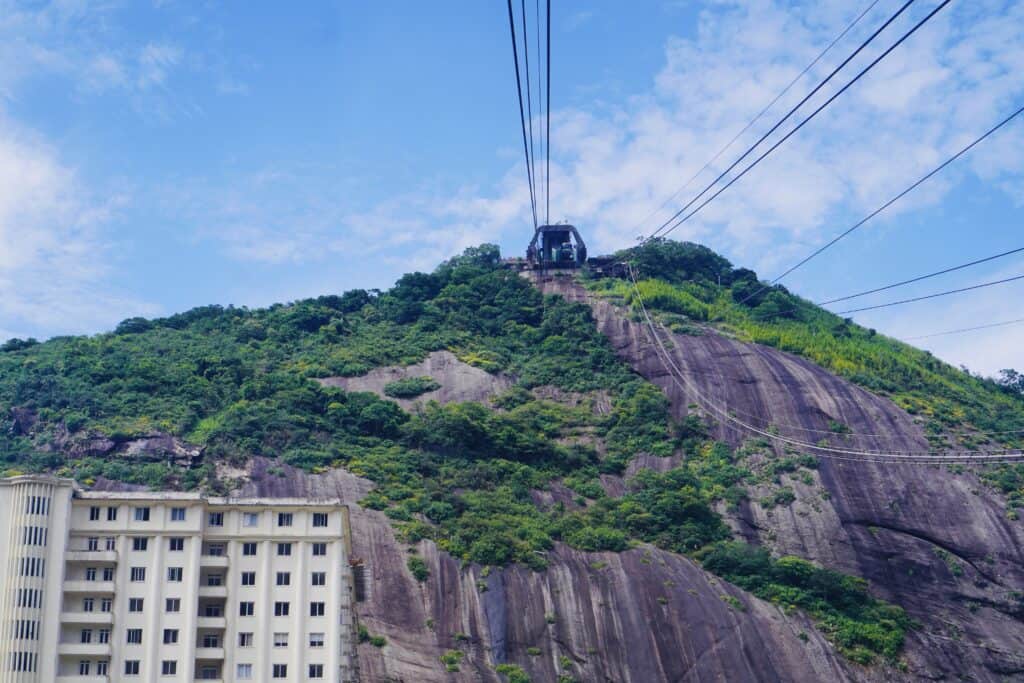
Metropolitan Cathedral of Saint Sebastian : Also known as the Rio de Janeiro Cathedral, this cathedral is a remarkable architectural masterpiece that stands as an emblem of faith in Rio. Designed by Edgar Fonseca and constructed between 1964 and 1979, the cathedral’s unique modernist design is inspired by Mayan pyramids, featuring a conical shape and striking stained glass windows.
Its interior is equally breathtaking, with towering arches and an expansive space that can accommodate up to 20,000 people. The serene atmosphere inside the cathedral invites visitors to reflect and find solace amidst the soaring columns and the resplendent light streaming through the stained glass. As an important religious and cultural landmark, the Metropolitan Cathedral holds regular religious services, but it also hosts various concerts and events that showcase the city’s vibrant arts and music scene.

Selaron Steps (Escadaria Selarón) : Another well-known landmark in Rio, this vibrant and captivating masterpiece is nestled in the bohemian neighborhood of Santa Teresa. The steps were designed by the late Chilean artist Jorge Selarón. He build the steps over a number of years with brightly colored tiles that were collected from over 60 countries. Each tile tells a story, reflecting the diversity and cultural richness of different nations. Be sure to get a good snapshot on the stairs before you go! I found this easier to do at the top of the stairs vs. the bottom.

A cool thing about this tour is that it includes lunch at a Churrascaria, or Brazilian steakhouse, which is an amazing experience!
Check Rates for the Full Day in Rio Tour Here!
To conclude you day, I recommend heading to Beco das Garrafas to listen to live music. I went to this spot the last time I was in Rio and loved it! They serve appetizers and drinks, in a very intimate setting. See the video below for a good idea of what the experience is like here.
Day 2 | Explore Centro & Santa Theresa
On your second day in Rio, I recommend getting to know the less touristy area of the city – Centro, or the city center. I recommend taking the Rio Free Walking Tour in the morning to explore the following sites:
Theatro Municipal: Located in the city center, this magnificent theater is a striking example of neoclassical architecture, adorned with ornate details and a majestic façade. Since its inauguration in 1909, the Teatro Municipal has been a hub for world-class performances, including opera, ballet, classical music concerts, and theater productions.
The interior of the theater is equally impressive, featuring a lavish foyer, opulent chandeliers, and a grand auditorium adorned with gold accents and plush seating. The acoustics of the theater are renowned for their exceptional quality, attracting renowned artists and ensembles from around the globe.
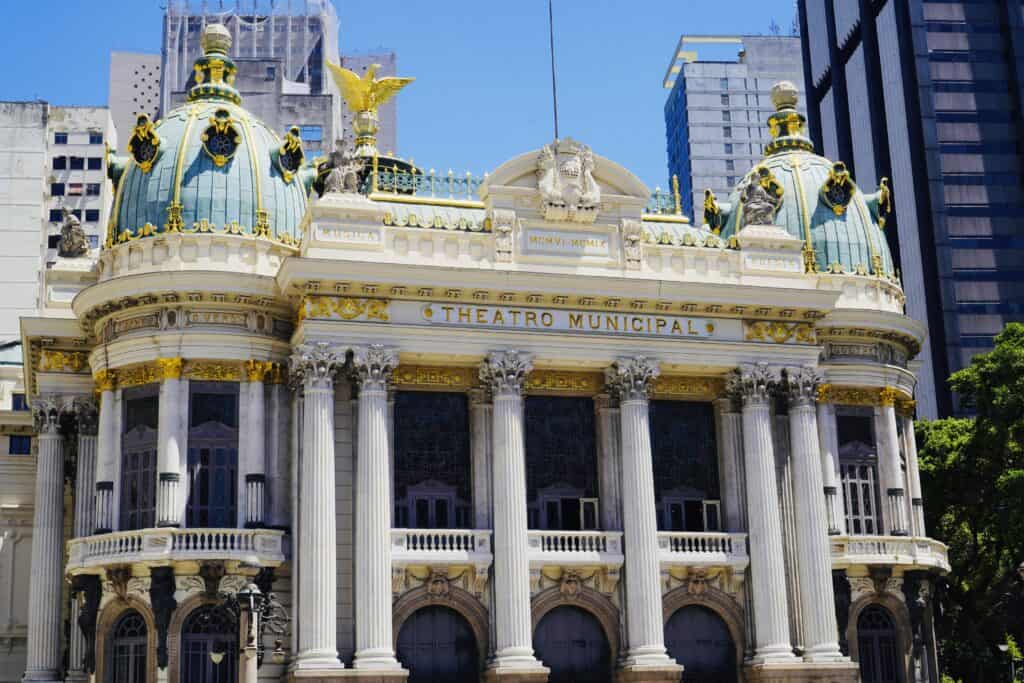
Cinelandia Square : Also known as Praça Floriano Peixoto, this historic and vibrant public square located in the heart of downtown Rio de Janeiro. Surrounded by notable buildings such as the Municipal Theater, the National Library, and the Fine Arts Museum, Cinelandia Square serves as a hub of cultural and architectural significance. The square features a central garden area with beautiful landscaping, fountains, and statues that add to its charm.
Lapa Neighborhood : This is a vibrant and eclectic neighborhood that is known for its lively atmosphere, rich cultural heritage, and vibrant nightlife. This historic district showcases a blend of architectural styles, ranging from colonial architecture to modern structures, adding to its unique charm. Lapa is famous for its iconic Carioca Aqueduct, also known as the Arcos da Lapa, which serves as a striking backdrop to the neighborhood.
The area is a hub of cultural and artistic expression, with numerous music venues, nightclubs, and live music bars that come alive with samba, choro, and other traditional Brazilian rhythms. The streets of Lapa are lined with charming establishments, including restaurants, cafes, and antique shops, offering a glimpse into the local culture and providing opportunities to sample traditional Brazilian cuisine.

Carioca Square : Also known as Praça XV de Novembro, this square is a historic and bustling public square in the city center. Named after the date of Brazil’s Proclamation of the Republic, Carioca Square holds significant historical and cultural importance. The square is surrounded by architectural landmarks, including the Palácio Tiradentes, which houses the State Assembly, and the Imperial Palace, once the residence of Brazilian emperors.

It serves as a central transportation hub with ferry terminals that connect the city to nearby islands and neighborhoods. Carioca Square is a vibrant meeting point where locals and tourists converge, with bustling street vendors, cafes, and shops that offer a variety of goods and local delicacies.
Confeitaria Colombo : This is a historic and iconic establishment has been delighting locals and visitors in Rio de Janeiro since 1894. Located in the city center, this charming café and bakery is renowned for its exquisite architecture, elegant ambiance, and delectable culinary offerings.
Stepping into Confeitaria Colombo is like stepping back in time, as the interior boasts stunning art nouveau decor, high ceilings adorned with intricate moldings, and beautiful stained glass windows. It is a popular spot for breakfast, afternoon tea, or a leisurely lunch, offering a delightful culinary experience in a truly enchanting setting. You can even try the famous Portuguese custard tarts here! (Which was my personal choice)

Afternoon:
I recommend grabbing a bite to eat at one of the restaurants located in the area, or even going back to the Confeitaria for a quick lunch. Following lunch, I recommend taking some time on your own to explore these sites that are in or nearby to the city center:
Museum of Tomorrow : Known as the Museu do Amanhã, is a futuristic and groundbreaking institution that stands as a symbol of innovation and exploration in Rio. Located in right by the the Praça XV, this striking architectural marvel designed by Santiago Calatrava is a testament to sustainable and environmentally conscious design. Through interactive exhibits, immersive experiences, and cutting-edge technology, the Museum of Tomorrow invites visitors to contemplate the complex issues of climate change, sustainability, and the impact of human activity on the planet.
The museum encourages visitors to think about how their choices and actions can shape the future, fostering a sense of responsibility and environmental consciousness. I spent a few hours here and found the exhibits both enlightening and thought-provoking.
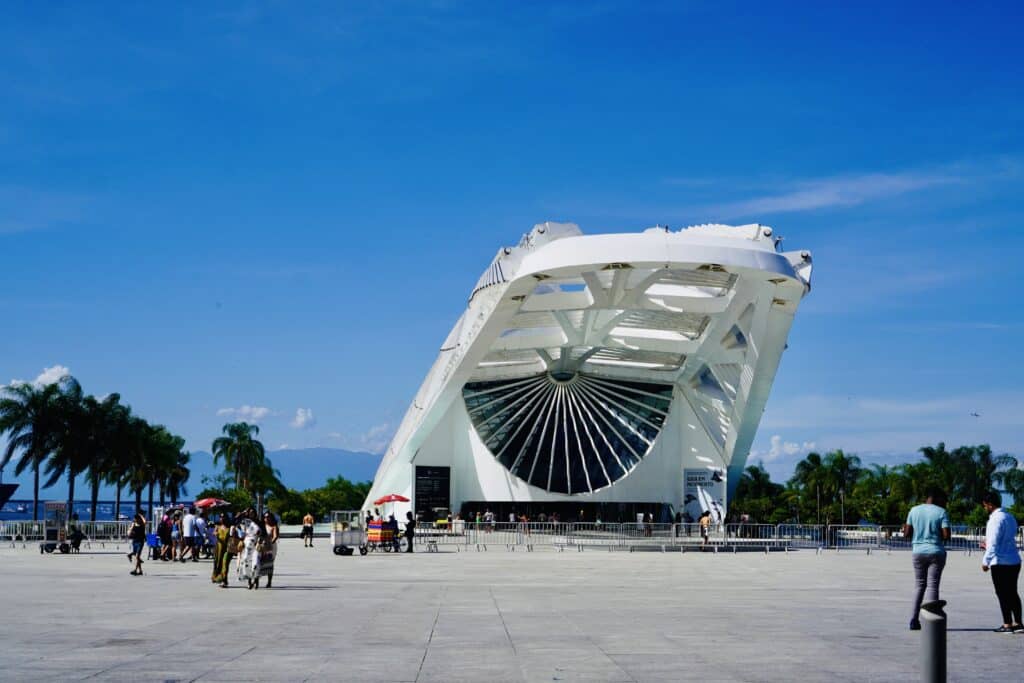
Royal Portuguese Cabinet of Reading (Real Gabinete Português de Leitura) : This magnificent library is also located in Rio’s city center. Its awe-inspiring architecture, reminiscent of a neoclassical palace, houses one of the largest collections of Portuguese literature outside of Portugal.
The library’s interior is adorned with ornate details, grand chandeliers, and towering shelves filled with centuries-old books, making it a haven for book lovers and history enthusiasts. For those of you who like Disney movies, this site reminded me of that library that the Beast gifted Belle.

Palacio de Catete : Palácio do Catete, or Catete Palace, is a historic landmark located in the Catete neighborhood of Rio de Janeiro. Once serving as the presidential palace, it is now home to the Museu da República, a museum dedicated to Brazil’s republican history.
The palace’s architectural style is a blend of neoclassical and eclectic influences, featuring beautiful gardens, grand halls, and ornate details. Visitors can explore the museum’s exhibits, which showcase historical artifacts, artworks, and documents that shed light on Brazil’s political and social development.

Late Afternoon/ Evening
After you see all that you can in the Centro, I recommend you take the historic yellow tram to the Santa Teresa Neighborhood . This charming and bohemian neighborhood is perched on a hilltop in Rio de Janeiro, offering a unique and enchanting atmosphere.
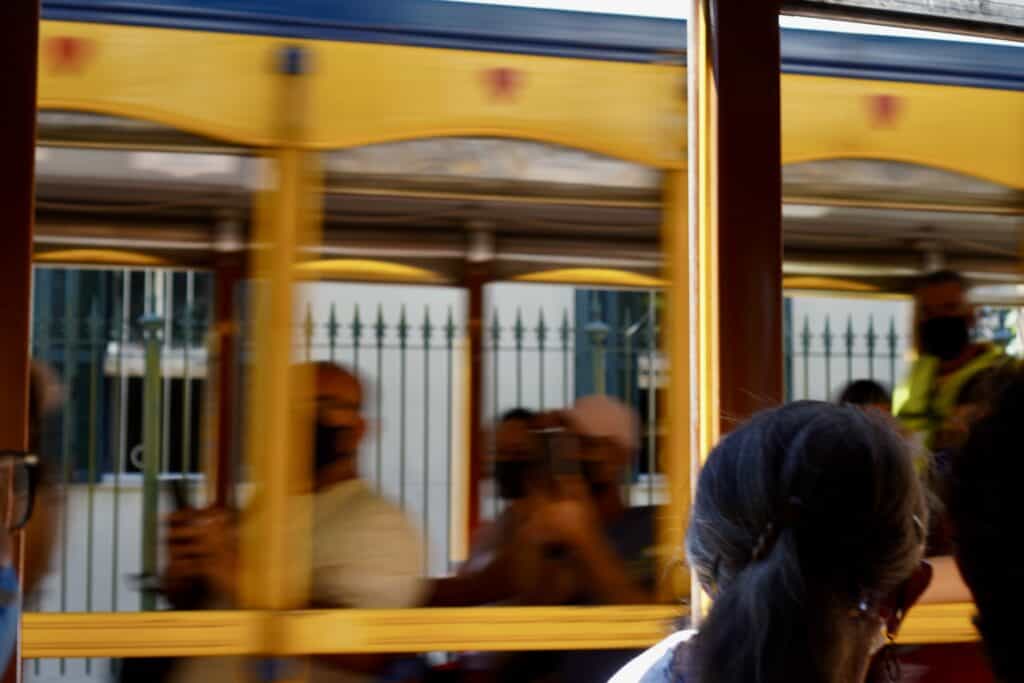
Known for its narrow, winding streets, colorful colonial houses, and stunning views of the city below, Santa Teresa exudes a nostalgic charm that captures the essence of old-world Rio. The neighborhood is a haven for artists, musicians, and creatives, with numerous art galleries, studios, and live music venues scattered throughout its picturesque streets. It’s a place where you can stumble upon hidden gems, such as quaint cafes, local handicraft shops, and vibrant street art.
Inside this neighborhood you will find the Parque das Ruínas , which is a park that is built on the grounds of a ruined mansion. The mansion was once home to Laurinda Santos Lobo, who often invited local intellectuals to her mansion in the early 1900s.
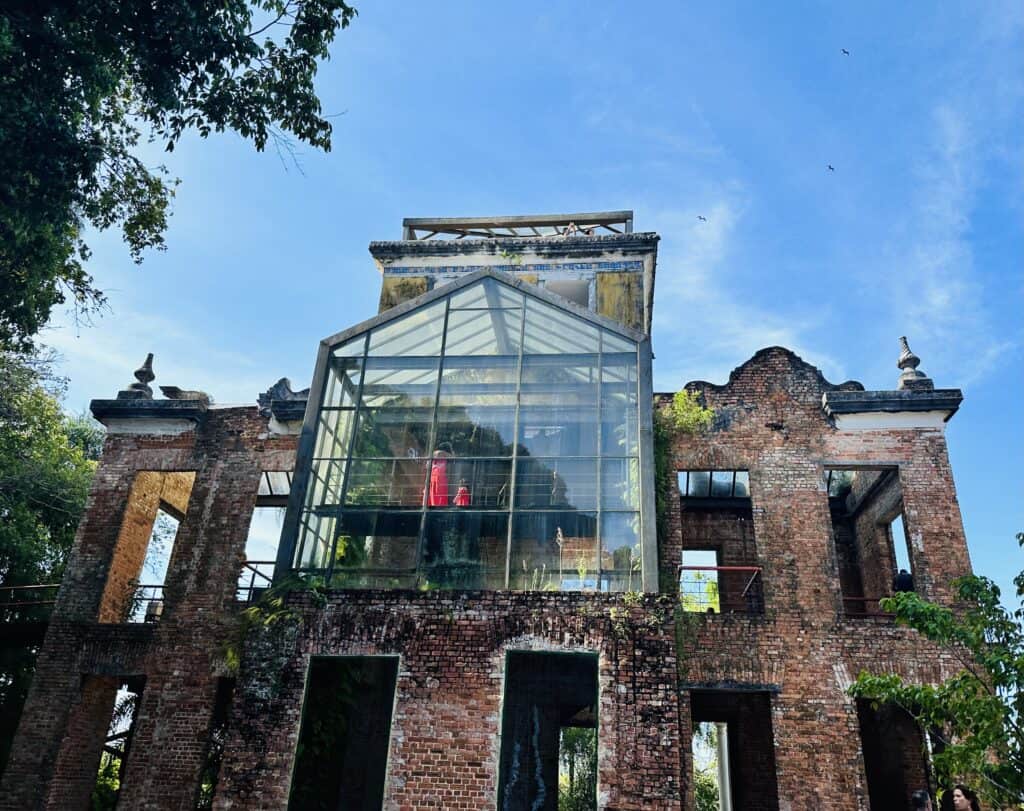
If you stay here in the evening, I recommend having dinner at Aprazível . I have eaten here twice now, and cannot get enough. From the spectacular food to the incredible ambiance, this is one restaurant you must do while here. The restaurant is partially open to the air and offers impressive views of the city. In addition, the service here is impeccable.

Day 3 | Experience the Favelas & Chill at the Beach
If you are not aware, Favelas in Rio de Janeiro are vibrant and densely populated informal settlements that dot the city’s landscape. These neighborhoods, characterized by their hillside locations and colorful houses, are home to a significant portion of Rio’s population. While favelas face challenges such as poverty and limited access to basic services, they also exhibit resilience, community spirit, and cultural richness.
If you’d like to learn more about these “cities within the city”, you can take a favela tour to learn more about the people and the way of life there. I like this Favela Tour because it approaches favelas with respect, is led by a local tour guide, and gives back to the local favela community. I speak more about my favela tour experience here if you’d like to learn more.
Check rates for your Favela Tour now!
Early Afternoon
Parque Lage : This stunning public park is located at the foot of the Corcovado Mountain in Rio de Janeiro. This enchanting green oasis is renowned for its lush gardens, scenic trails, and a historic mansion that now houses an art school. The park’s centerpiece is the beautiful Lage Mansion, an early 20th-century mansion with striking architecture and surrounded by botanical gardens.
The mansion’s interior is open to the public, allowing visitors to appreciate its grandeur and the artwork displayed within. You can stop here for an afternoon snack or coffee while you enjoy the beautiful views above. One note, know that the line to get in may be long, so plan accordingly.
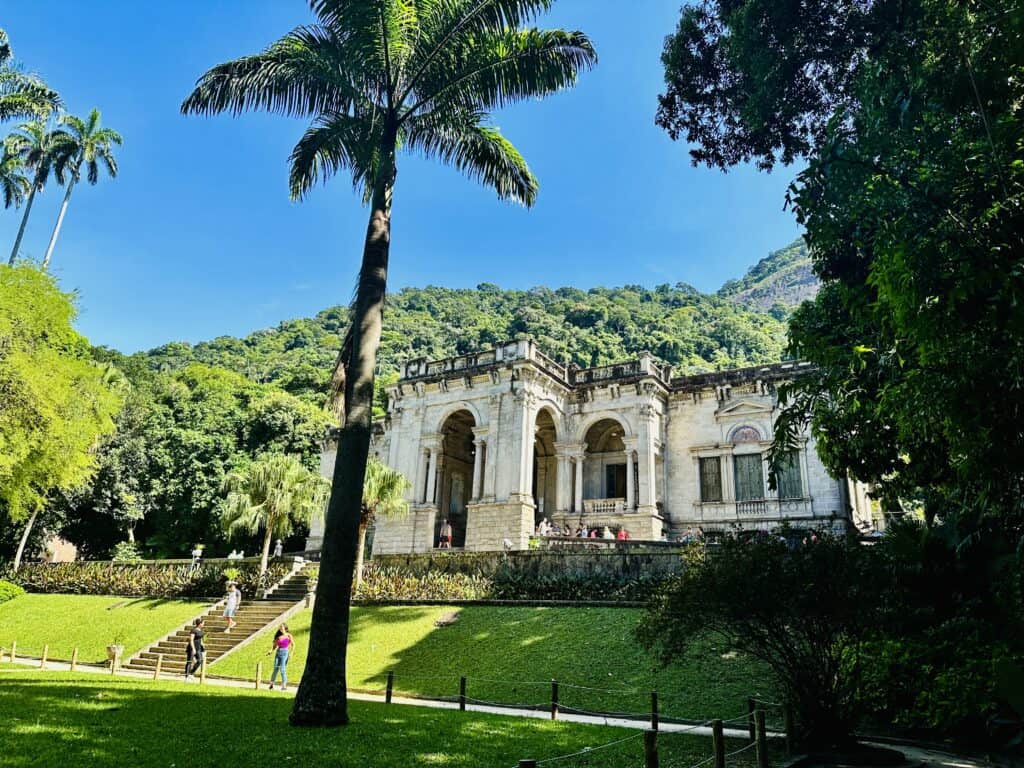
Afternoon / Evening
Now that you’ve seen all the top sites in Rio, it’s time to spend the rest of your last day in Rio at the beach! Your most popular options will of course be Copacabana beach and the Ipanema beaches, but there are others in the vicinity as well.
While at the beach, be sure to keep an eye on your valuables at all time. For the full experience, bring some cash to purchase from the vendors who walk the beach to buy the grilled cheese or other local beach food.
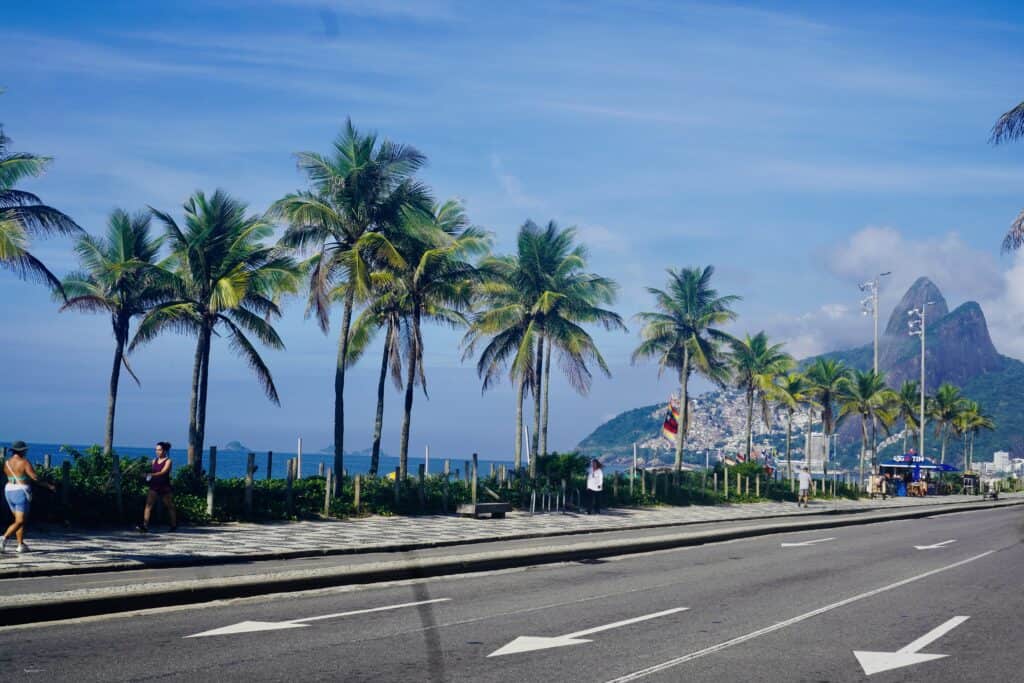
Additional Things to Do in Rio
If you have more time in Rio, here are a few additional activities you may want to consider:
Visit Tijuca National Park and the Botanical Gardens (Jardim Botânico) : The Tijuca National Park is a rainforest located in the middle of the city! As one of the largest urban forests in the world, this ecological gem covers an expansive area of over 3,000 hectares. The park is a haven for nature lovers, offering lush greenery, cascading waterfalls, and diverse wildlife.
On this tour , you can visit both this park and the Botanical Gardens, a botanical paradise that showcases the rich biodiversity of Brazil. Spanning over 140 acres, the gardens are home to an impressive collection of over 6,000 species of plants, including exotic orchids, towering palm trees, and rare Amazonian flora. I visited both sites on this tour and had a really great time.

Go Shopping: If you like to shop, I recommend venturing out to the shops in Leblon or driving out to Barra da Tijuca to spend time in one of the larger shopping malls.
Helicopter Tour of Rio : For a truly incredible viewing experience, I recommend you take a helicopter tour of Rio. In this experience, you can get panoramic views of the city and a close up of Christ the Redeemer. I loved my experience flying above Rio. If you’d like to learn more, click here for my review of the Best Rio Helicopter Tour .
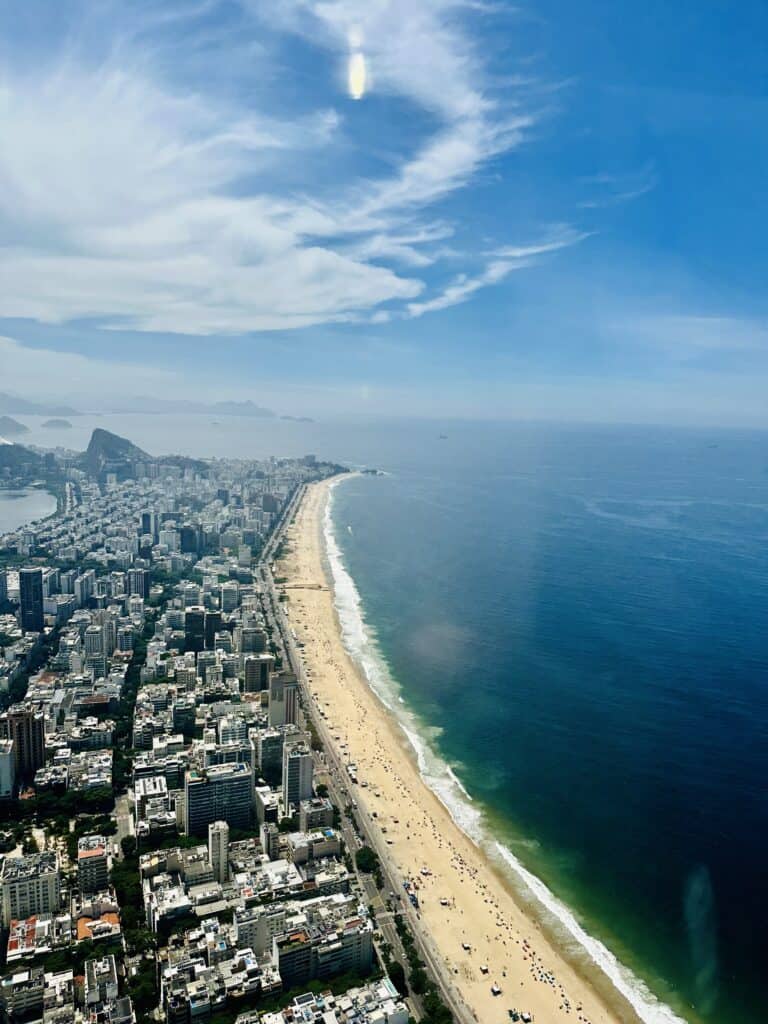
Rio De Janeiro City Map
See below for all of the main locations mentioned in this Rio Travel Guide:
- Christ the Redeemer
- Maracanã Stadium
- Sugarloaf Mountain
- Metropolitan Cathedral of Saint Sebastian
- Escadaria Selarón
- Teatro Municipal
- Cinelandia Square
- Lapa Neighborhood
- Confeitaria Colombo
- Museum of Tomorrow
- Royal Portuguese Cabinet of Reading
- Palacio de Catete
- Parque das Ruínas
- Aprazível
- Rocinha Favela
- Parque Lage
- Copacabana Beach
- Ipanema Beach
- Leblon Beach
- Barra da Tijuca
Best Day Trips from Rio De Janeiro
Rio de Janeiro offers a plethora of exciting day trip options that allow visitors to explore the diverse natural and cultural wonders of the region. Here are a few of the best options to consider:
- One popular choice is a visit to the historic town of Petropolis, known as the Imperial City, where you can explore the former summer residence of the Brazilian emperor and stroll along charming streets lined with colonial architecture.
- Another must-visit destination is the coastal town of Búzios , famous for its stunning beaches and vibrant nightlife, offering a perfect blend of relaxation and entertainment.
- For nature enthusiasts, a trip to Ilha Grande is highly recommended, with its pristine beaches, lush forests, and crystal-clear waters, providing opportunities for hiking, snorkeling, and sunbathing.
- Additionally, the picturesque town of Paraty beckons with its well-preserved colonial architecture, cobblestone streets, and boat tours that explore the nearby islands and secluded beaches. These day trips from Rio offer a diverse range of experiences, allowing visitors to delve into history, soak up the sun on breathtaking beaches, and immerse themselves in the natural beauty of the region.
Rio De Janeiro FAQs
While three days is enough for a taste of Rio, 4 to 5 days is best to fully experience Rio de Janeiro’s iconic attractions, beaches, and vibrant culture. This timeframe allows you to visit landmarks like Christ the Redeemer and Sugarloaf Mountain, indulge in local cuisine, and explore the historic center.
Yes, Rio de Janeiro is generally friendly for tourists. The city welcomes visitors with a warm and welcoming atmosphere, and the locals are known for their hospitality. While standard safety precautions are advised, tourists can enjoy a vibrant and enjoyable experience in Rio de Janeiro.
Choosing between Rio de Janeiro and São Paulo depends on your preferences. Rio offers breathtaking natural beauty, iconic landmarks, and a relaxed beach culture, making it ideal for a mix of relaxation and cultural experiences. São Paulo, a bustling metropolis, is known for its urban exploration, diverse cultural scene, and vibrant nightlife, making it perfect for those seeking a cosmopolitan experience.
While Rio de Janeiro has some safety concerns, most tourists visit without incident. Standard safety precautions, such as being mindful of belongings and avoiding certain areas, can help ensure a safe trip. Staying in well-traveled areas and using reputable transportation services can further mitigate potential risks.
In Summary | The Best Rio De Janeiro Itinerary
That concludes this 3 Day Rio De Janeiro Itinerary. I hope that you can see that Rio is a wonderful place to consider for your next vacation destination. I think that any city that features both cities and mountains is amazing, and Rio is one of those that is at the top of the list for me. If you have visited Rio below, let me know in the comments below!
Looking for more posts on Brazil?
- 10 Days in Br azil
- The Best Things to do in São Paulo
- The Best Rio Favela T our
- The Best Rio Helicopter Tour
- Best Tour of Rio de Janeiro
Latin American Travel Guides
- Cartagena Itinerary
- 4 Days in P uerto Rico
- Tulum Travel Guide
- Cusco Itinerary
- Lima Travel Guide
- Latin American Destinations
Christen Thomas is the founder of TravelWanderGrow, established in 2018. She has lived abroad and traveled extensively to over 30 countries. In addition, she is a certified Travel Advisor and is an expert in planning trips focused on city history and culture. As a frequent traveler, she also shares tips on how to prepare to travel well and how to save money while doing so.
Leave a Reply Cancel reply
Your email address will not be published. Required fields are marked *

Touropia Travel Experts
Discover the World
Best Time to Visit Rio de Janeiro: Month-by-Month Guide

Fittingly known as the ‘marvelous city’, Rio de Janeiro is set in one of the most spectacular spots imaginable, alongside white sand beaches amidst scenic rainforest-coated mountains. Each year, millions visit, come to see Copacabana and Christ the Redeemer or experience its world-famous carnival.
Very hot year-round, its natural wonders and dynamic city life make Brazil’s second-largest metropolis great to visit almost every month. While summers (so December through March) are sweltering with strong, sudden downpours, its winters (June to September) are normally sunny, warm and dry.
To help you organize your trip, let’s take a look month-by-month at what to expect in terms of Rio’s climate and crowds. We’ll also cover any exciting events going on and what periods are cheaper or more expensive to visit.
What’s the Weather Like in Rio de Janeiro?
Lying alongside the Atlantic Ocean at the entrance to Guanabara Bay, Rio de Janeiro can be found in the southeast of Brazil . The stunning city has a tropical climate that is often almost monsoon-like in summer.
From December to March, temperatures hover around 28 to 30°C (82-86°F). Due to its high humidity though, its avenues sometimes feel much, much hotter, particularly when there is little wind around. It also rains quite a lot between 15 and 21 days on average. Its torrential downpours usually give way though to beautiful bright blue sunny skies.
Even in winter, temperatures remain around the mid-20s (chilly for Brazilians!) with its days being much drier. As always, the water at its beaches is startlingly cold due to the currents from Antarctica that run along the coast.
Best months to visit Rio de Janeiro
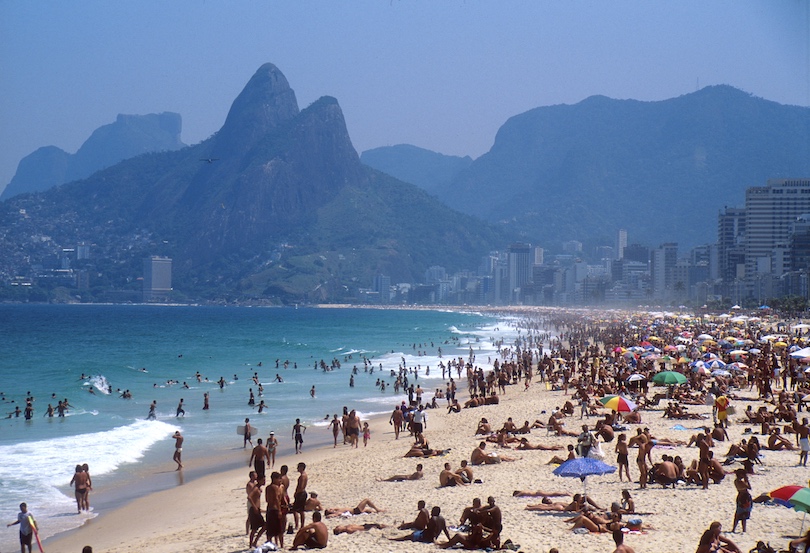
As summer has the best weather for beach days and is when its two biggest events carnival and Reveillon (New Year’s Eve) take place, December to February is Rio’s peak season. This is the busiest, most expensive time to visit though with it also being pretty hot and humid.
The shoulder seasons of April and May and October and November are arguably even better in Rio as the lower temperatures and humidity are more manageable. There are also fewer crowds and its accommodation and airfares are much, much cheaper.
Despite it being winter in Brazil, July and August see an influx of visitors as Europeans and Americans head here on their summer holidays. While flight prices are higher, the weather is still warm enough for sightseeing, sunbathing and swimming.
Rio de Janeiro in January
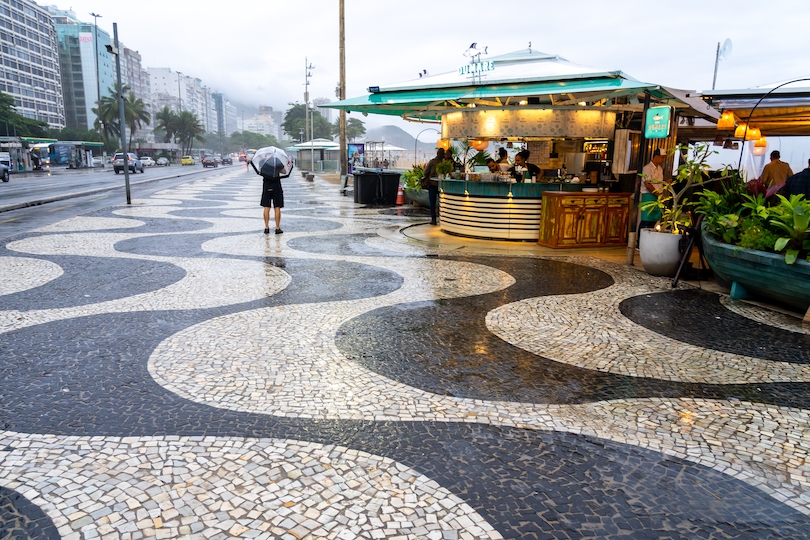
Once all its fun New Year’s Eve festivities and fireworks displays have died down, January in Rio is a bit quieter and calmer. As it is one of the hottest months of the year, both locals and tourists alike spend their days lounging on the beach at Copacabana or Ipanema. Make sure to apply sunscreen, hydrate regularly and take breaks as the sun is scorching.
While the heat and humidity do make sightseeing quite tiring, it’s the perfect month to visit one of its famous samba schools. As carnival is just around the corner, all their dancers and musicians are rehearsing in their flamboyant costumes and floats. Although prices for hotels and flights are already high, they are a bit cheaper than either December or February.
Rio de Janeiro in February
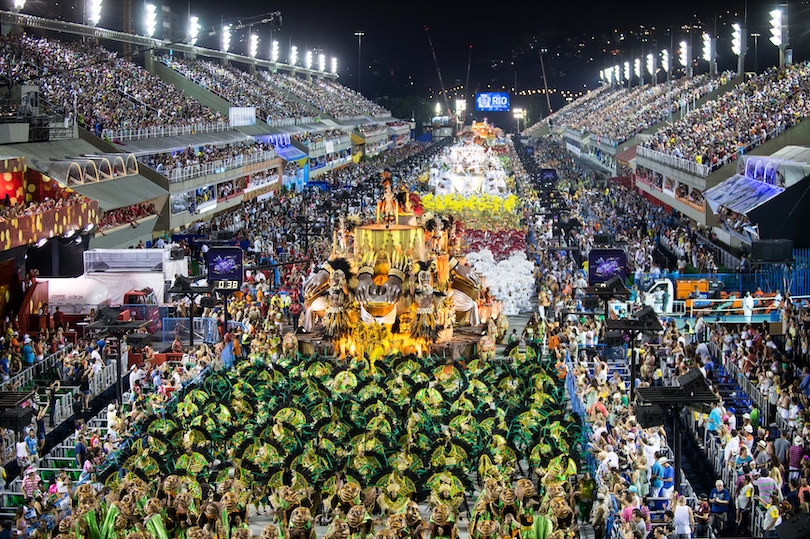
With millions pouring into the city to celebrate carnival, February is by far the busiest, most expensive month to visit Rio. It is also (for many) the most memorable too! As accommodation prices are extortionate, it’s best to start your search well in advance or risk sleeping on the beach.
While its raucous carnival only officially runs for five days, in reality, street parties or blocos pop up everywhere for two weeks. Its main beaches are packed during this time with Christ the Redeemer and Sugarloaf also being overrun.
Averages of 30°C (86°F) coupled with the high humidity and heaving crowds can make sightseeing challenging. Despite all the chaos, seeing the floats and parades in the Sambadrome really is an unforgettable experience.
Rio de Janeiro in March
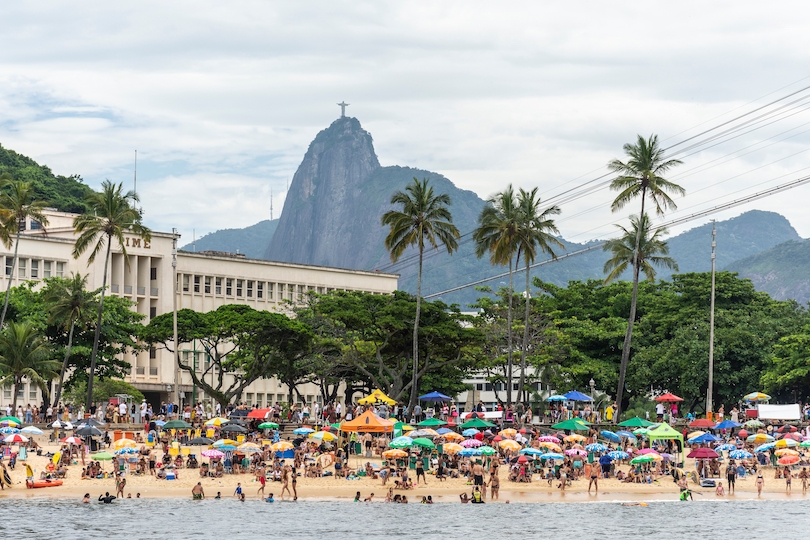
It’s only in March that things start to settle down as cariocas return to work and the kids are already back at school. As Brazilians say: ‘the year doesn’t start until after carnival’. Still the peak tourist season, its beaches are all pretty busy with the high temperatures only slightly letting up. Prices drop considerably but are still expensive compared to the rest of the year.
While it still rains for around 15 days on average, the storms quickly give way to lovely blue skies and sunshine. As there are still lots of people visiting the city but the crowds are more manageable, it’s a good time to hit up lively nightlife spots like Lapa and Pedra do Sal.
Rio de Janeiro in April
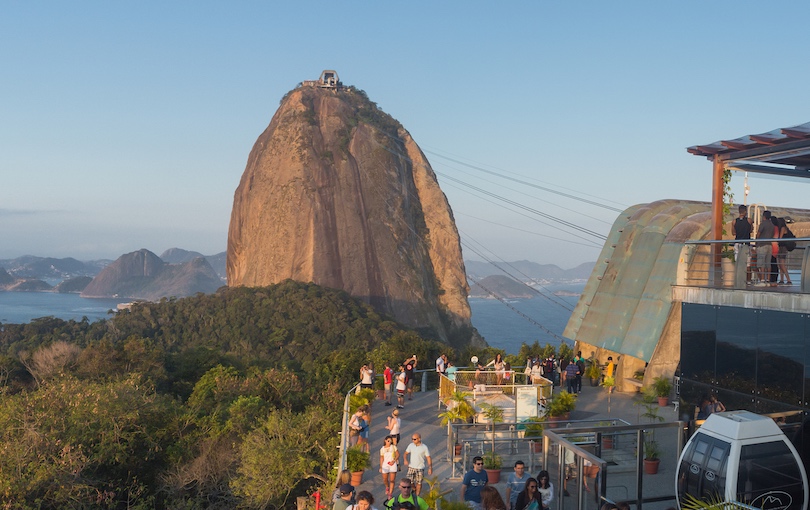
As the heat, humidity and rain finally subside a bit, April is one of the most pleasant months weatherwise in Rio. While averages of 27°C (80°F) are more comfortable for strolling about the city and seeing its sights, you can still sunbathe and swim in the sea. Apart from around the Easter holidays, prices are also more affordable.
If you want to watch a match at Rio’s legendary Maracana stadium, Brazil’s football league, the Brasileirão, kicks off again in April. With fewer tourists around, it’s also well worth taking trips to Paraty, Ilha Grande and Arraial do Cabo. If you’ve had enough of beaches, then both Petropolis and Teresopolis up amidst the mountains are perhaps better bets.
Rio de Janeiro in May
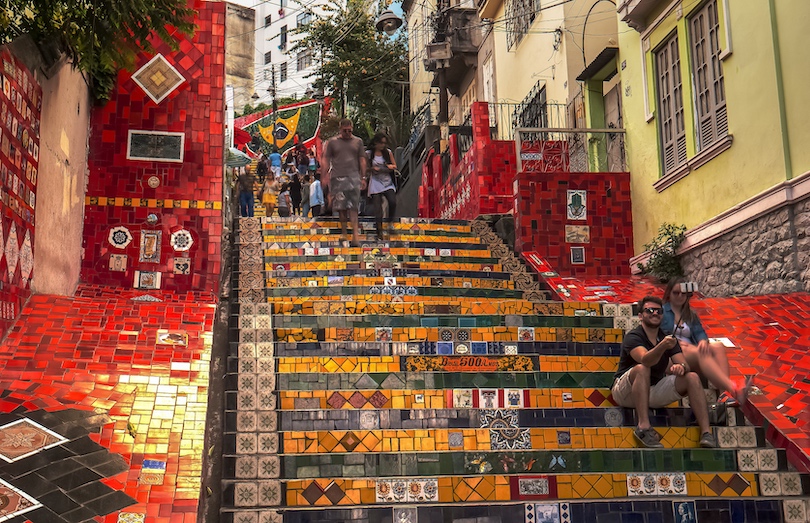
May too is a wonderful month to visit as autumn is cooler, drier and all Rio’s picture-perfect beaches are quieter. Both its airfares and accommodation options are also cheaper as there are fewer people around. This means there will be no queues at its top attractions like Christ the Redeemer, Sugarloaf and the Selaron Steps.
While still sunny, the days are slightly shorter now with about 11 hours of daylight each day. As the temperatures are lower, ambling about its Botanical Gardens or along all the trails in Tijuca National Park is more pleasant. Weather conditions are also ideal for taking a flight to Iguazu Falls and seeing the world-famous waterfalls with fewer crowds around.
Rio de Janeiro in June
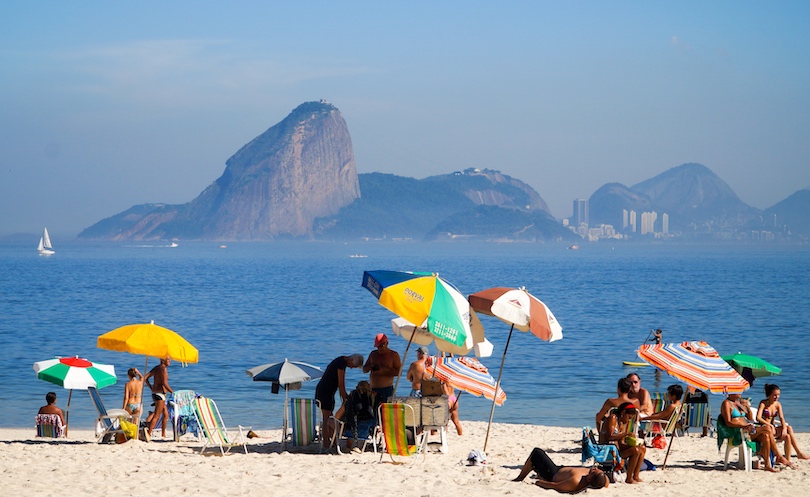
While winter officially starts in June, averages of 25°C (77°F) really aren’t bad at all though it can get a bit chilly in the evenings. As it is much drier and there are still around 6 hours of sunshine each day, it’s a great time to either lounge on the beach or see all the city’s iconic sights. Prices for flights and hotels do start to creep up again though.
Throughout the whole month, plenty of dances, music events and festivals are held for Festa Junina. After carnival, it is the largest celebration in Brazil with loads of tasty traditional food also served as people welcome the harvest and honor several saints.
Besides taking part in the fun festivities, you can also go hang gliding above Rio. The clear skies, gentle winds and dry weather of June are perfect with the views being out of this world.
Rio de Janeiro in July
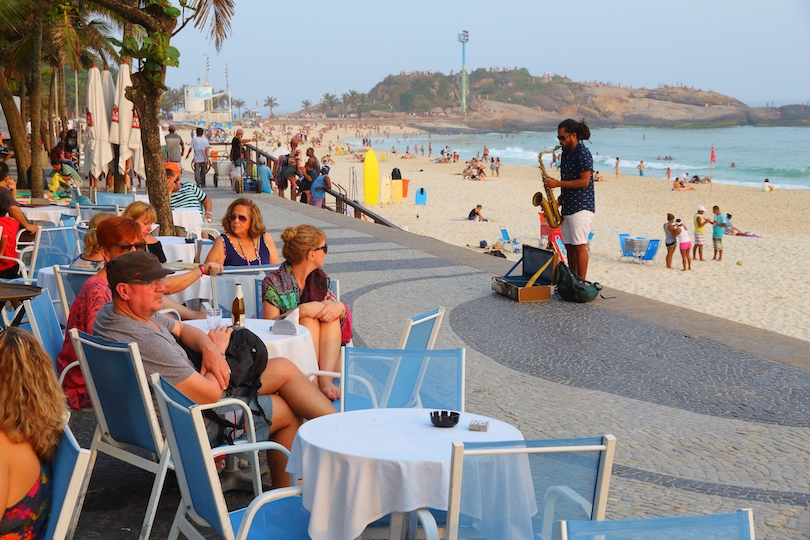
As both Europeans and North Americans have summer holidays, flights to Rio de Janeiro are much more expensive in July. With the schools in Brazil also breaking up for winter, its idyllic beaches and amazing tourist attractions are busier again. This is despite it being the coldest month of the year – a ‘cool’ 24°C (75°F)!
While the waves are much rougher in winter, making swimming a bit challenging, conditions couldn’t be better for surfers. On land, the drier, cooler days are fantastic for cycling around Rio or hiking and rock climbing in Tijuca National Park. Prices are higher though with Paraty down the coast hosting one of the state’s biggest events – the FLIP Literary Festival.
Rio de Janeiro in August
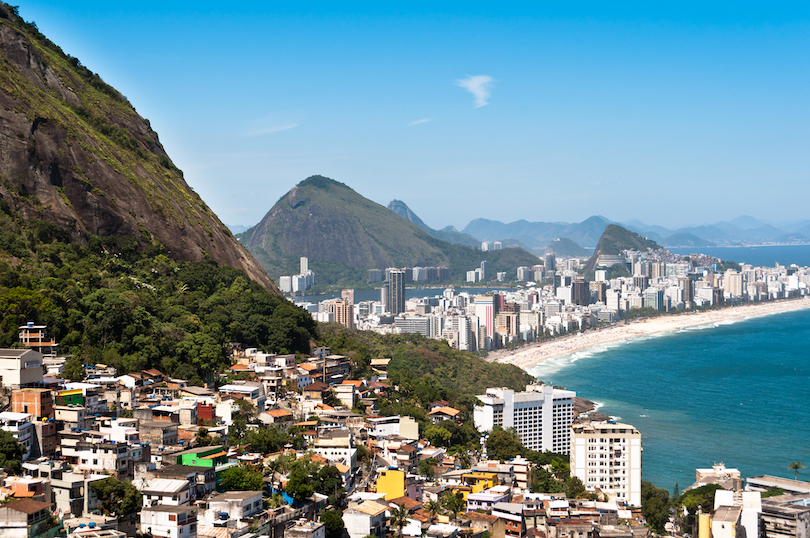
August is much less crowded as both cariocas and Brazilians from outside of Rio are already back at work and school. Airfares, however, remain very high. With less fog and rain due to the drier, mild weather, the views from Christ the Redeemer, Sugarloaf and Os Dois Irmaos are even more spectacular.
As it is still winter, August is a brilliant time to either sightsee or enjoy outdoor activities and sunbathe without it being too hot. Each Sunday, you can cycle, skateboard or saunter along the avenue next to Ipanema as it is closed off to traffic. Sunsets from Arpoador alongside it are also unbelievable, especially with a caipirinha in hand!
Rio de Janeiro in September
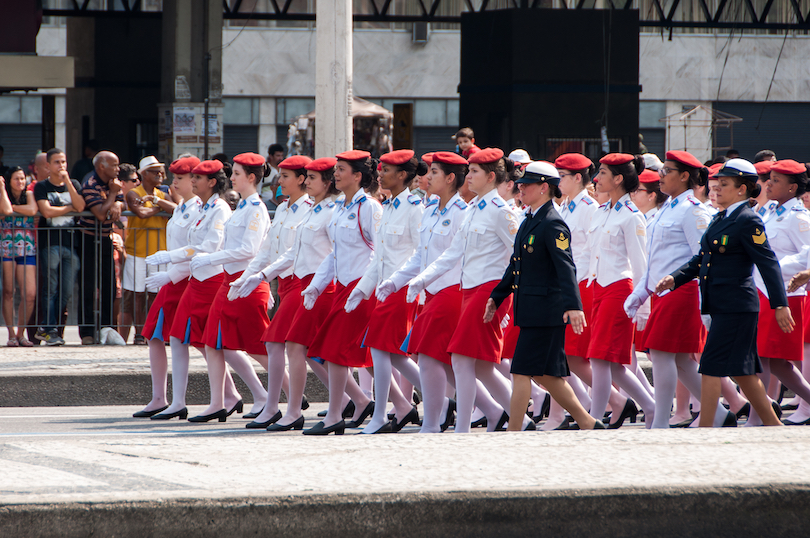
While it does rain a bit more, September is still a very pleasant month to visit Rio. Strolling about its Botanical Gardens or Parque Lage is particularly lovely though some days are quite cloudy. There also won’t be many crowds around despite flight prices dropping considerably after August.
With about 6 hours of sunshine a day and averages of 25°C (77°F), you can always head to Ipanema and Copacabana to sunbathe if you like. If you’re after a bit of culture, its Fine Arts Museum and MAR are good bets while its Biennial Book Fair also takes place in September . Every two years, Rock in Rio – one of South America’s biggest music festivals – is also held, attracting massive crowds to the city.
Brazil Independence Day is celebrated as a national holiday on 7 September with parades, parties, and various cultural events taking place.
Rio de Janeiro in October
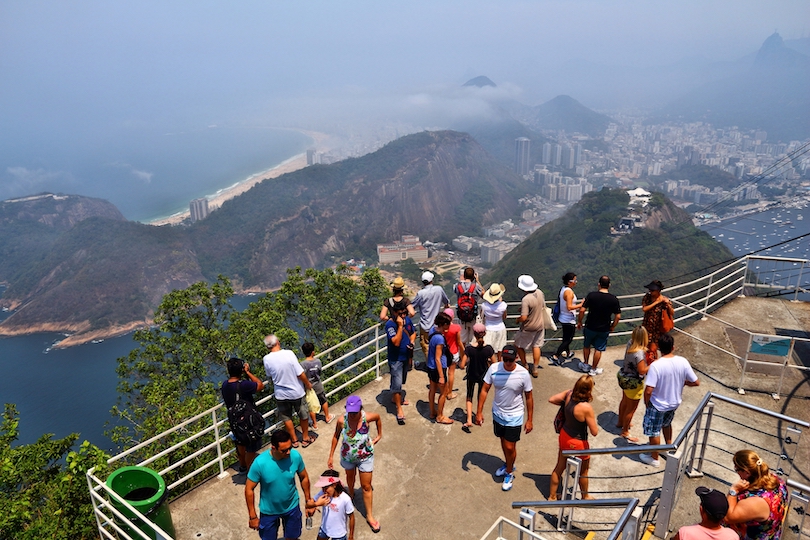
As it is the low-season, October is ideal for those looking to explore Rio while avoiding all the heaving crowds and high prices. While the weather is a bit more unpredictable, the days are longer with around 13 hours of daylight. Temperatures are warm enough to sunbathe, swim or go sightseeing around the city, though it does rain quite often.
Besides checking out the Christ and Copacabana, there is also its International Film Festival to enjoy. As always, you can dance to samba in Lapa or watch Flamengo or Fluminense play at the Maracana whenever you feel like it. With spring having arrived, many flowers are blooming in its gardens, parks and Tijuca rainforest. It’s also a good month to go kayaking and paddle boarding as the waves are calmer now after the winter.
Rio de Janeiro in November

In November, the heat, humidity and rain slowly start to build up again. Temperatures rise to 27°C (80°F) with it also raining for around 19 days on average. Its showers usually give way to clear skies and sunshine though quite quickly. This is a great month to visit before the summer crowds arrive and the prices of hotels and flights shoot up around Christmas.
With fewer people around, you can really enjoy its incredible beaches, iconic landmarks and astonishing views. Around Ipanema does get pretty packed though during its week-long Gay Pride when all kinds of fun street parties and parades take place. It’s also worth taking trips to Ilha Grande and Buzios in November before they get too busy.
Rio de Janeiro in December

December is when the crowds return to Rio. Prices shoot up as people flock to the city to celebrate Christmas, New Year’s Eve and bask on its glorious beaches. Averages of 28°C (82°F) and the high humidity make sightseeing tough with it raining for around 21 days of the month.
As the summer holidays start in Brazil, attractions, beaches and hotels are all rammed as millions head here for its famous end-of-year festivities. Aside from seeing the giant, floating Christmas tree out on the lagoon, there are fireworks displays, concerts and parties to take part in at Copacabana for the Reveillon.
Celebrating New Year’s Eve, all dressed in white and jumping over waves (two local traditions!), really is an unforgettable experience!
Share this post:

7 Rio de Janeiro Hotels with Amazing Pools
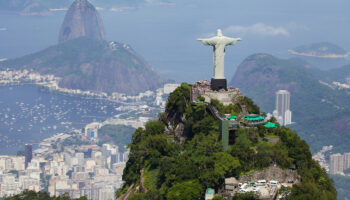
15 Top Tourist Attractions in Rio de Janeiro
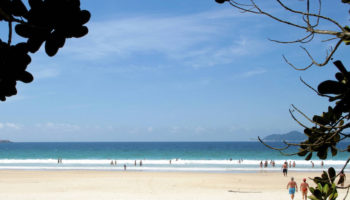
10 Best Beaches in Brazil
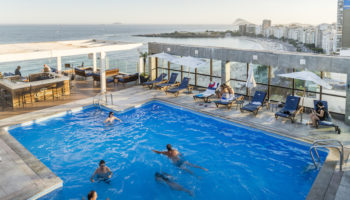
Where to Stay In Rio de Janeiro: Best Areas & Hotels

10 Most Amazing Destinations in Southern Brazil
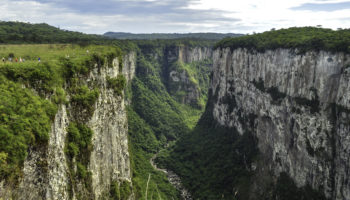
10 Most Beautiful National Parks in Brazil
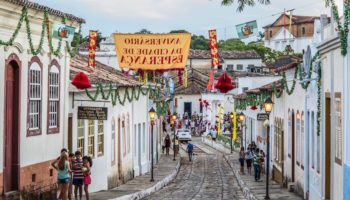
14 Most Beautiful Small Towns in Brazil
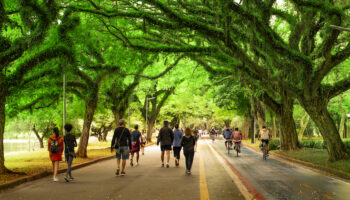
23 Top Attractions & Things to Do in Sao Paulo
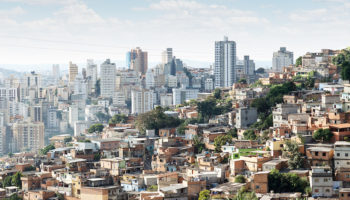
17 Best Cities to Visit in Brazil
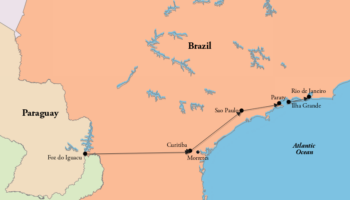
How to Spend 2 Weeks in Brazil: DIY Itinerary
Reader interactions, leave a reply cancel reply.
Your email address will not be published. Required fields are marked *
This site uses Akismet to reduce spam. Learn how your comment data is processed .
Nomadic Matt's Travel Site
Travel Better, Cheaper, Longer
Rio de Janeiro Travel Guide
Last Updated: August 30, 2023
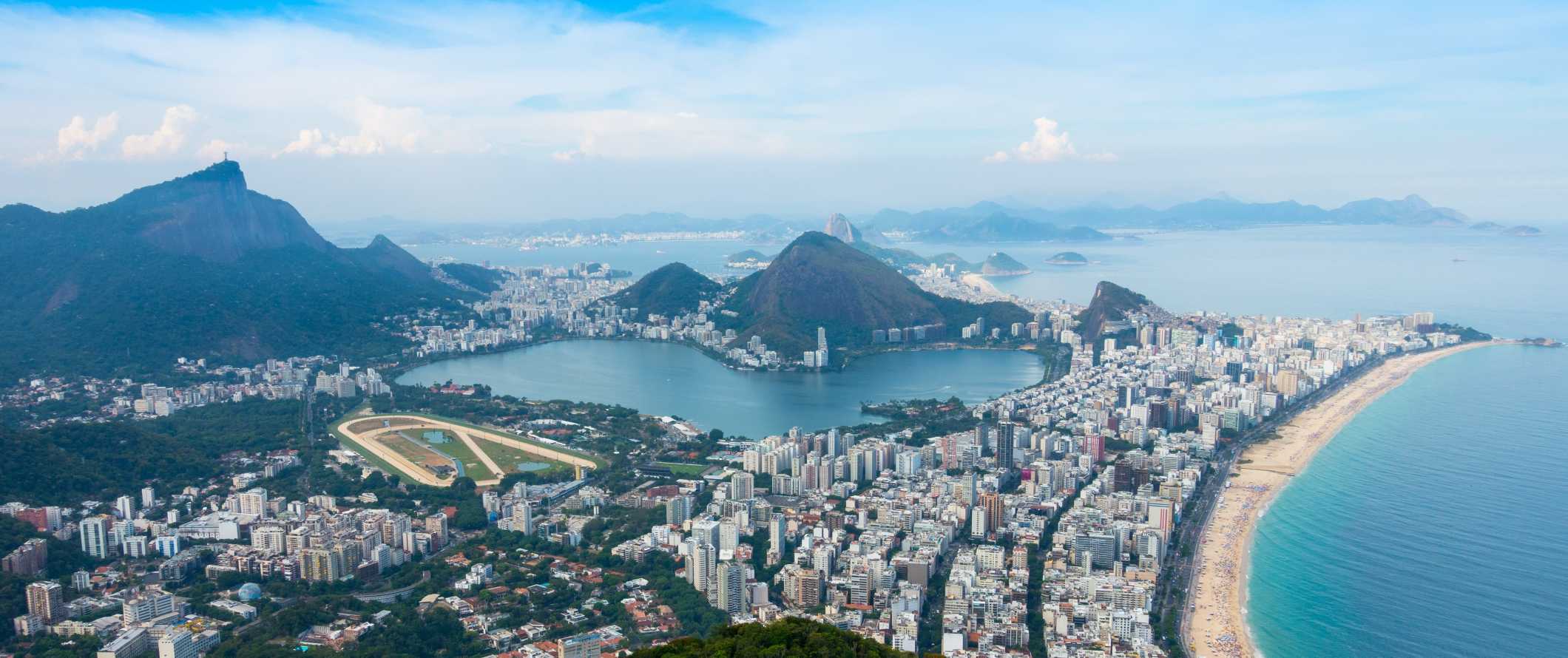
From the world-famous beaches of Copacabana and Ipanema to the magnificent summit of Corcovado, topped with the legendary Wonder of the World Christ the Redeemer, Rio combines big natural attractions with a sprawling metropolis. Home to over 12 million people, it should come as no surprise that it’s one of the most popular destinations in the world.
Founded by the Portuguese in the 16th century, Rio de Janeiro caters to every type of tourist and budget, popular with backpackers, Carnival revelers, and luxury vacationers alike. It’s an exciting city that has a lot to offer — so don’t rush your visit. There’s too much to see, especially when you factor in all those lazy days at the beach!
While petty theft and crime are a big concern here (you’ll want to avoid walking around alone at night), with a little vigilance you’ll be able to enjoy your time in this vibrant city without too much worry.
This travel guide to Rio de Janeiro can help you save money, stay safe, and ensure you have a wonderful visit.
Table of Contents
- Things to See and Do
- Typical Costs
- Suggested Budget
- Money-Saving Tips
- Where to Stay
- How to Get Around
- How to Stay Safe
- Best Places to Book Your Trip
- Related Blogs on Rio de Janeiro
Top 5 Things to See and Do in Rio de Janeiro
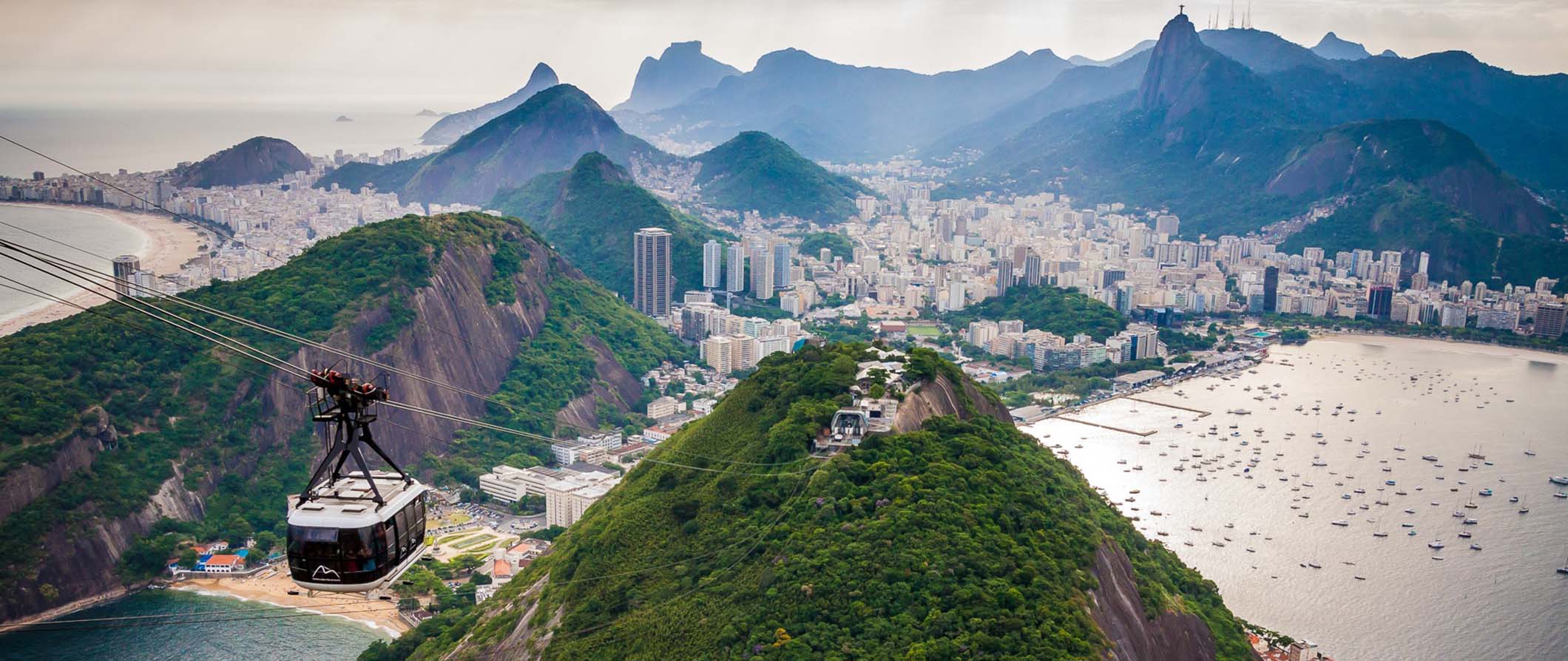
1. Celebrate Carnival
The Rio Carnival is one of the most famous festivals in the world, with people coming together from all corners of the globe to see the parade, listen to samba music, dance in the streets, and party for days. The city comes alive as thousands of people celebrate in bright, exotic regalia. You can reserve your 2024 Carnival tickets in advance here (highly recommended – they sell out quickly)!
2. Climb Sugarloaf Mountain
The famous Sugarloaf Mountain is one of the city’s most popular tourist destinations. Its name dates to the 16th century (the height of Brazil’s sugarcane trade), named for its resemblance to a conical block of sugar. The mountain is 396 meters (1,300 feet) tall, and at its peak, the entire city unfolds below you with spectacular views of Ipanema and Guanabara Bay, especially at sunset or sunrise. The cable car to get there costs 150 BRL ( reserve online in advance to skip the often super long lines).
3. See Christ the Redeemer
The 30-meter (100-foot) high statue of Christ the Redeemer sits atop the Corcovado Mountain and can be seen from any point in Rio. From its vantage point, you can take in the mountains, the bay, and the entire cityscape from the favelas to the skyscrapers. It’s an incredible Wonder of the World! You can get there a few different ways: via cog train (that goes through the rainforest), shared vans that leave from designated points around the city, or by hiking the (quite steep) trail to the top (though for safety reasons, it’s not recommended to do the trail alone). You can reserve advance tickets for the train and statue here (155 BRL).
4. Hit the beaches
Ipanema and Copacabana are the two largest beaches, and they’re always jam-packed with people. Ipanema has more upscale restaurants and nightlife, while Copacabana has more things to do (like fishing, surfing, and beachside markets selling handicrafts and swimwear). For quieter spots, check out Barra de Tijuca Beach, Prainha Beach, or Leme Beach (at the further end of Copacabana Beach).
5. Watch a fútbol game
Other things to see and do in rio de janeiro, 1. visit the botanical gardens.
For a moment of calm, head to the city’s botanical gardens. Walk along the meandering paths and trails or take a free guided tour of the gardens. This place is home to over 8,000 plant species, designed in 1808 by order of the Prince Regent Dom João. Highlights include a lake filled with enormous Vitória Régia water lilies, an enclosed area with over 600 species of orchids, and a carnivorous greenhouse filled with Venus flytraps and pitcher plants. The gardens get super busy with families on the weekends, so come during the week. Admission is 67 BRL.
2. Wander the Rio de Janeiro Zoo
If your travels don’t include a trip to the Amazon, you can still experience Brazil’s indigenous animals at the Rio City Zoo. Over 1,300 animals from 350 species live here, including many rare and endangered native species such as harpy eagles, maned wolves, golden-headed lion tamarins, anteaters, and more. There’s also a particularly impressive reptile house and open aviary with macaws, toucans, and tropical birds flying freely around. Admission costs 47 BRL.
3. Learn the samba
You’ll hear samba music playing endlessly around Rio, especially during Carnival. Rio de Janeiro is one of the best places in Brazil to learn how to dance. Rio Samba Dancer is my favorite for its all-levels group classes, especially for the classes combined with social outings to samba clubs. Classes start from about 105 BRL.
4. Go to Paquetá Island
Paquetá Island in Guanabara Bay is a favorite with locals for escaping the hustle and bustle of the city center on weekends. The island is an hour-long ferry ride from Rio, and it’s made up of mainly beaches and quaint colonial towns. Transportation around the island is only by foot, bicycle, or horse-drawn carts. There’s not a lot to do here, but that’s kind of the point. The ferry costs 6.50 BRL one-way.
5. Ride the Santa Teresa tram
This tram has been running through the Santa Teresa neighborhood since 1877, making it the oldest electric railway in Latin America. It has always followed the same route from the city center, across the Lapa Arches, and passing by Ruinas Park overlooking Rio. The tram is open-sided, meaning you can lean out over the arches (a narrow former aqueduct) as you cross them – it’s a dizzying view! A return ticket on the 6-kilometer (3.7-mile) route is 20 BRL.
6. Visit the Selaron Stairway
Located in the Santa Teresa neighborhood, this stairway has hundreds of steps all painted with more than 2,000 pieces of colorful tiles, mosaics, and mirrors. Starting in the early 1990s, artist Jorge Selarón began gathering contributions from artists in 60 different countries. He also visited antique shops and trash heaps to find pieces to add over time, working on the staircase’s construction for over 20 years until his death in 2013. It’s one of the most photogenic and popular sights in the city (you’ve probably seen it on Instagram) so don’t miss it!
7. Explore the Arcos da Lapa district
For those of you who love the nightlife, this is an awesome district to head out to on a Friday night. Bars, clubs, and food stalls dominate the area, and street parties run from the famous arches up Avenida Mem de Sá. For live music, go to Circo Voador, an open-air concert venue primarily featuring Brazilian bands and artists. If you want to experience the club scene, check out the three-story Rio Scenarium. If you’re not into partying at all, admire the photogenic Arcos de Lapa (Lapa Arches). These arches date back to the mid-18th century and were once used as aqueducts.
8. Visit Sitio Roberto Burle Marx
This home and World Heritage Site belongs to one of Brazil’s most celebrated landscape designers, Roberto Burle Marx. Begun in 1949 and developed over the course of over 40 years, this 100-acre property features over 3,500 tropical and subtropical plant species. Inside the Burle Marx House Museum is a huge collection of his personal artwork as well as a 17th-century Benedictine chapel. Tours cost 10 BRL and are available by appointment only.
9. Visit the São Bento Monastery
Built between 1617-1641, this colonial Baroque church is located on Morro de São Bentois (St. Benedict Hill) in downtown Rio de Janeiro. Although the exterior is simple, the inside is covered in gold decoration, wood carvings from Frei Domingos da Conceição and Alexandre Machado, and paintings from José de Oliveira Rosa. The monastery is still in operation today, and if you attend Sunday mass, you’ll get to hear some traditional Gregorian chanting. Just be sure to dress respectfully as it is a place of worship.
10. Hike in Tijuca National Park
Tijuca National Park is the largest urban rainforest in the world, stretching across 8,300 acres. Over 350 different species of mammals, birds, and reptiles make their home here, including howler monkeys, which only came back to the park recently after a 100-year hiatus. The Corcovado (Christo) hike through Parque Lage and to the top of Corcovado is a steep climb, but it’s shaded and only takes about three hours. Another scenic hike is to Tijuca Peak, starting in Rio’s North Zone and past waterfalls and dense rainforest. You’ll get views over Niteroi and Guanabara Bay, and it only takes about two hours to complete. Entrance to the park is free. This is a place where it’s really worth it to go with a tour though. You’ll not only have a more in-depth experience, learning history of the rainforest as well as how to recognize native flora and fauna, but get round-trip transportation to/from your accommodation as well. There are tons of tours available, from the popular jeep tours to full-day adventure hikes that go to lesser visited sections of the rainforest.
11. Go to the Ilha Fiscal
A little outside Rio’s city center is Ilha Fiscal, a Neo-Gothic castle on a secluded island in Guanabara Bay. It used to be a location for the Brazilian Custom Service but is now a work of architectural art, with mosaic floors, stained glass, and a traditional Ceremonial Room used by the Navy. You can only access the island by schooner and bus from the Naval Museum. Admission to the Naval Museum is free, while a return ticket to Ilha Fiscal is 42 BRL.
12. Visit the Museum of Tomorrow
The Museum of Tomorrow (Museu do Amanhã) is a science museum that focuses on ecology, sustainability, and the future of our planet. Ultra-sleek and modern, the Museum of Tomorrow has high-tech visuals and simulators that let you consider the world’s past, present, and future. Although it might sound depressing, it’s incredibly well-curated, and the whole experience is captivating. Admission is 30 BRL.
13.Take a walking tour
Walking tours are my favorite way to get my bearings in a new place. Free Walker Tours and Rio by Foot both offer free walking tours through a variety of different Rio neighborhoods, as well as paid tours such as food tours, pub crawls, and rainforest tours. If you’re taking a free tour, just be sure to tip your guide at the end!
14. Explore Rio by Bike
Because of Rio’s geography, stretching along the coast between the ocean and the mountainous rainforest, the city can take some time to get around. You can cover a lot of ground by biking along the beach and through different neighborhoods on the many kilometers of dedicated bike lanes in the city. You can either explore on your own or with a local guide on a tour with Rio by Bike .
For more information on other cities in Brazil, check out these guides:
- Fernando de Noronha Travel Guide
- Florianopolis Travel Guide
- Sao Paulo Travel Guide
Rio de Janeiro Travel Costs
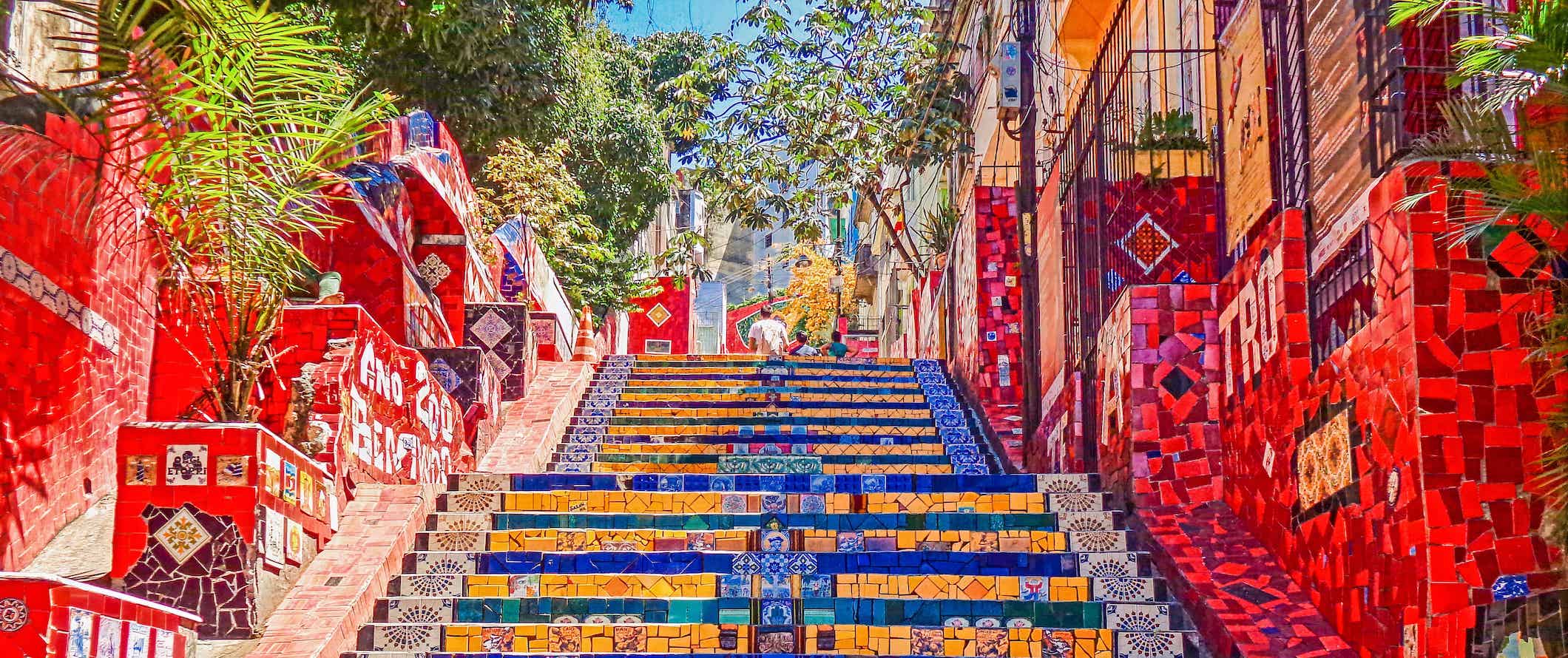
Hostel prices – Large dorm rooms with 8-10 beds start around 65-75 BRL per night. Dorm rooms with 4-6 beds are around 90-110 BRL per night. Standard twin or double private rooms cost 225-300 BRL per night for two people.
Free Wi-Fi is standard, and most hostels have a bar and outdoor patio with a BBQ. Free breakfast is usually included at hostels in Rio de Janeiro, and kitchen facilities are common too. Some hostels have a pool, coworking spaces, and bikes for rent.
If you book your bed well ahead of time for Carnival (at least six months), you’ll have more options. However, prices skyrocket — some of those dorms mentioned above increase to 200-300 BRL per night — during Carnival!
Budget hotel prices – A double room in a basic two-star hotel is around 150 BRL per night in the city center, including a private bathroom and balcony as well as free Wi-Fi. That price can nearly double in other places like Copacabana (the most popular place for tourists to stay).
A budget hotel with more amenities (free breakfast, a swimming pool, bar/restaurant) starts around 190 BRL per night for a double room.
Airbnb is another affordable option here. For a private room, expect to pay about 100-125 BRL per night, while you can find a comfortable home or apartment for about 275-350 BRL per night.
During Carnival time, private and hotel rooms can double in price and sell out fast.
Average cost of food – Brazilian cuisine – like the country itself – is a mix of many cultures, with European, Amerindian, African, and (more recently) Japanese influences. As such a large country, food varies per region, with seafood plentiful on the coastlines and Brazilian barbecue dominating plates in the south. Rice and beans are a staple throughout the country.
Common vegetables include tubers like cassava and yams, tomatoes, red peppers, okra, and more. Being a subtropical country, there’s a huge variety of fruits, with the most famous being the superfood açaí. Cupuaçu, mango, papaya, guava, orange, passion fruit, pineapple, are all commonly found in smoothies and fresh juices across the country.
Look for feijoada on the menu. It’s Brazil’s national dish, a meaty bean stew, traditionally eaten for Wednesday or Saturday lunch. Other popular dishes include moqueca (fish stew), polenta, vatapá (a stew of bread, shrimp, coconut milk, and peanuts), and farofa (toasted cassava flour, served as a side to feijoada ), among countless others.
Some popular street food snacks include pão de queijo (cheese bread rolls), acarajé (black-eyed pea and shrimp fritters), coxinha (chicken croquettes), and pastéis (savory fried pies with assorted fillings). In Rio, bolinhos de bacalhau (fried cod fritters) are especially popular due to the city’s coastal location.
Rio de Janeiro has lots of affordable food options, with street food like pastels, coxinha, and tapiocas costing 8-10 BRL each. A meal at an inexpensive restaurant serving typical Brazilian dishes costs about 20-40 BRL. An açaí (served pureed and frozen, with toppings you can choose from) from a street stand or takeaway spot is 15-20 BRL.
For fast food, a combo meal at McDonald’s or a takeaway meal from a Chinese restaurant both cost about 35 BRL.
A meal with two courses at a casual restaurant starts from 60 BRL, though prices at restaurants along the beach can go much higher, starting around 70-80 BRL for a dish. A three-course meal with a drink at a nicer restaurant is around 200 BRL.
A beer to go with your meal is around 7-10 BRL, while a cocktail starts at 20 BRL (though they can get upwards of 40 BRL in fancier places). In terms of non-alcoholic drinks, a cappuccino or fresh juice is 8-12 BRL.
One of the best ways to eat in Rio is to find a restaurant por kilo , which lets you pay for your meal by weight (so skip the super-thick steak). It generally costs around 70-90 BRL per kilo, with prices varying depending on the time of day and day of the week (nights and weekends are more expensive). Restaurante Temperarte near Copacabana is a great option for trying this.
Grocery shopping is very cheap, costing about 100-145 BRL per week for bread, meat, veggies, and other basics. You’ll just need to make sure you book accommodation with a kitchen.
Backpacking Rio de Janeiro Suggested Budgets
If you are backpacking Rio de Janeiro, expect to spend about 215 BRL per day. This covers staying in a hostel dorm, eating street food, cooking some of your meals, limiting your drinking, using public transportation to get around, and doing mostly free activities like enjoying the beach.
On a mid-range budget of about 470 BRL per day, you can stay in a private hostel or Airbnb room, eat out for all your meals at cheap local restaurants, take the occasional taxi to get around, enjoy a few drinks, and do more paid activities like visiting the zoo and attending a soccer game.
On a “luxury” budget of about 825 BRL per day or more, you can stay in a hotel, eat out for all your meals, enjoy more drinks, take taxis everywhere, and enjoy all the tours and activities you want. This is just the ground floor for luxury though. The sky is the limit!
If you’re coming during Carnival time, expect prices for accommodations and activities to increase significantly (sometimes quadruple) — especially if you’re booking last minute.
You can use the chart below to get an idea of how much you need to budget daily, depending on your travel style. Keep in mind these are daily averages – some days you’ll spend more, some days you’ll spend less (you might spend less every day). We just want to give you a general idea of how to make your budget. Prices are in BRL.
Rio de Janeiro Travel Guide: Money-Saving Tips
Rio has lots of free activities and attractions to enjoy, like beaches and hiking trails. While food and accommodation aren’t cheap, there are ways to keep your costs down. Here are some ways to save money in Rio de Janeiro:
- Eat por kilo – As with elsewhere in Brazil, restaurants that have you pay by the kilo for your food is a good deal. Look out for these cheap options.
- Visit the market – If you’re staying at a hostel with kitchen facilities, it’s a good idea to stock up on food at the market and eat like the locals.
- Stay with a local – Couchsurfing connects you with locals who can give you a free place to stay and share their insider tips and advice. It’s the best way to meet locals and save money.
- Go to free museum days – Almost all the museums in Rio have a free day to visit each week. Check their website for details!
- Take a free walking tour – There are many excellent free walking tours in Rio, including Free Walker Tours and Rio By Foot. They’re the best way to see the main sights on a budget. Just be sure to tip your guide at the end!
- Avoid Carnival time – As exciting as Carnival is, visiting Rio any other time of the year is just as magical and saves you lots of money.
- Pack a water bottle – The tap water here isn’t safe to drink so bring a water bottle with a filter to save money and reduce your single-use plastic usage. My preferred bottle is LifeStraw as it has a built-in filter to ensure your water is always clean and safe.
Where to Stay in Rio de Janeiro
Rio de Janeiro is a sprawling city. When you’re researching your hostel, make sure you find a neighborhood that fits your needs, whether you want to stay in the city center or somewhere near the beach. Otherwise, you’ll be spending a lot of money on taxis and sitting in the city’s terrible traffic. Here are my suggested places to stay:
- Selina Lapa Rio de Janeiro
- Mango Tree Hostel Ipanema
- CabanaCopa Hostel
For more suggestions, check out this post on the best hostels in Rio .
How to Get Around Rio de Janeiro

Public Transportation – Rio’s BRT (Bus Rapid Transit) has quick and reliable routes in Copacabana, Barra, Ipanema, and Leblon. Fares cost from 3.80 BRL per trip. You’ll have to flag down a bus by waving at the driver. Otherwise, the Metrô Na Superfície shuttle passengers between metro stations, but they’re often very crowded. The bus is also not always the safest method of travel, so exercise caution here, and don’t use them at night.
Rio de Janeiro has three very efficient subway lines. Line 1 runs between Ipanema to the North Zone, while Line 2 runs between Botafogo and Pavuna (with Maracanã football stadium on the way). Line 3 runs between Ipanema and the Barra de Tijuca. You can get a prepaid card (called RioCard+Mais) at any kiosk for 4 BRL. A single metro ride costs 5 BRL.
For solo female travelers, note that there are women-only metro cars (marked in pink) during peak rush hours (6am-9am, 5-8pm, on weekdays).
The only remaining tram line in Rio is the famous Santa Teresa line, which runs from the tram station in Centro and travels across the Lapa Arches, Ruinas Park, and then turns around at Largo do Guimarães. A return ticket is 20 BRL.
Bicycle – Rio has tons of bike paths along its main beach areas. Unfortunately, only Brazilian citizens and residents with a CPF number can use the bike sharing system, though you can also rent bikes from a local shop for about 150 BRL per day to navigate the paths between Copacabana and Ipanema.
Ferry – You can take a ferry to visit several of Rio’s highlights, like Ilha Fiscal, Ilha de Paquetá, and Niterói. Ticket prices are generally 12-15 BRL round-trip.
Taxis – Taxis start at 6 BRL and cost an additional 2.65 BRL per kilometer. This rate increases to 3 BRL per kilometer at night and on Sundays. A ride around town generally costs 10-50 BRL. Use the 99 app (formerly 99Taxis) to get a safe, metered taxi.
Ridesharing – Uber is available in Rio de Janeiro and usually costs around the same a taxi.
When to Go to Rio de Janeiro
December to March is when Rio is at its warmest and sunniest. There isn’t much rain during these months, and temperatures tend to be around 32°C (90°F) and higher each day.
Autumn (April-May) and spring (October-November) offer slightly cooler temperatures, usually in the mid-20s°C (low 80s°F). Although Rio is busy year-round, you’ll avoid a lot of peak tourism madness by visiting during these months.
During February’s Carnival, prices skyrocket, and accommodation sells out very quickly. You should consider booking your travel at least six months (and up to a year) before Carnival time to snag the best deals and places to stay.
How to Stay Safe in Rio de Janeiro
Rio de Janeiro has a lot of crime and is not the safest city in the world. Violent attacks can occur, however, your biggest concern here is petty crime — especially after nightfall around popular tourist destinations.
Don’t walk alone at night. Instead, take taxis. Have your accommodation call one for you so you can be sure you get a reputable driver.
When withdrawing money, make sure you go inside a bank so that you can put your cash away without the risk of getting robbed.
Don’t flash your valuables and always make sure your possessions are secure and out of reach (especially your phone and wallet).
Never accept drinks from strangers and don’t leave anything unattended at the beach.
Unless you’re on a guided tour, avoid the favelas. The favelas are where the highest rate of crime occurs in the city, and you shouldn’t be exploring there on your own.
Carjacking and break-ins are common so avoid renting a car here.
Solo female travelers will want to exercise caution here. Travel with groups where you can and avoid getting too far off the beaten path if you’re alone.
If you’re worried about getting scammed, you can read about common travel scams to avoid right here.
If you experience an emergency, dial 190 for assistance.
Always trust your gut instinct. Avoid isolated areas at night and be aware of your surroundings at all times. Make copies of your personal documents, including your passport and ID. Forward your itinerary along to loved ones so they’ll know where you are.
The most important piece of advice I can offer is to purchase good travel insurance. Travel insurance will protect you against illness, injury, theft, and cancellations. It’s comprehensive protection in case anything goes wrong. I never go on a trip without it as I’ve had to use it many times in the past.
Rio de Janeiro Travel Guide: The Best Booking Resources
These are my favorite companies to use when I travel. They consistently have the best deals, offer world-class customer service and great value, and overall, are better than their competitors. They are the companies I use the most and are always the starting point in my search for travel deals.
- Skyscanner – Skyscanner is my favorite flight search engine. They search small websites and budget airlines that larger search sites tend to miss. They are hands down the number one place to start.
- Hostelworld – This is the best hostel accommodation site out there with the largest inventory, best search interface, and widest availability.
- Booking.com – The best all around booking site that constantly provides the cheapest and lowest rates. They have the widest selection of budget accommodation. In all my tests, they’ve always had the cheapest rates out of all the booking websites.
- Get Your Guide – Get Your Guide is a huge online marketplace for tours and excursions. They have tons of tour options available in cities all around the world, including everything from cooking classes, walking tours, street art lessons, and more!
- SafetyWing – Safety Wing offers convenient and affordable plans tailored to digital nomads and long-term travelers. They have cheap monthly plans, great customer service, and an easy-to-use claims process that makes it perfect for those on the road.
- LifeStraw – My go-to company for reusable water bottles with built-in filters so you can ensure your drinking water is always clean and safe.
- Unbound Merino – They make lightweight, durable, easy-to-clean travel clothing.
- Top Travel Credit Cards – Points are the best way to cut down travel expenses. Here’s my favorite point earning credit cards so you can get free travel!
Rio de Janeiro Travel Guide: Related Articles
Want more info? Check out all the articles I’ve written on backpacking/traveling Brazil and continue planning your trip:
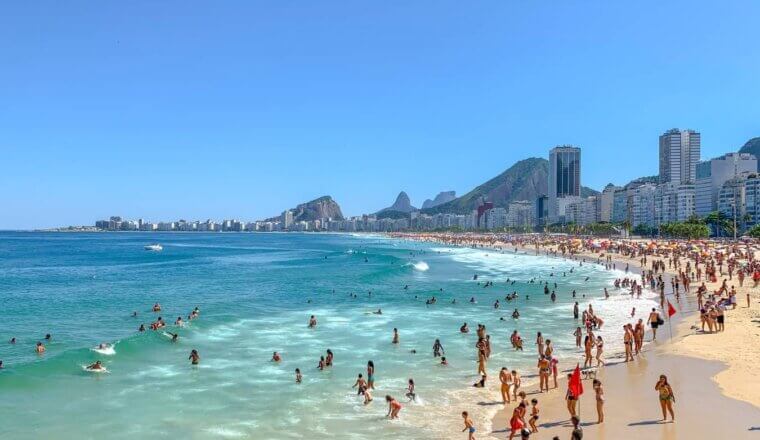
The 6 Best Hostels in Rio de Janeiro
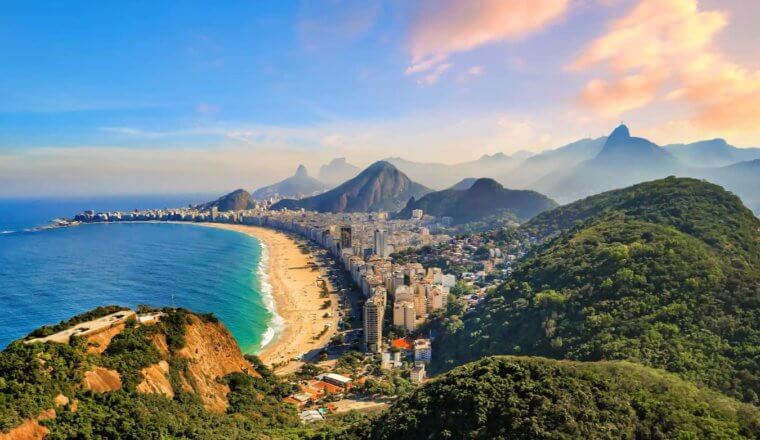
Is Brazil Safe to Visit?
Get my best stuff sent straight to you, pin it on pinterest.
- Where To Stay
- Transportation
- Booking Resources
- Related Blogs
Rio de Janeiro Travel Guide
Courtesy of Anna Gibiskys | Getty Images

Best Times To Visit Rio de Janeiro
The best time to visit Rio is between December and March, when the weather is warm and sunny enough to hit the beaches, although there may be quick but heavy downpours in the evenings. The city's seductive samba beat and incredible panoramic views last year-round, but arrive in February to experience Carnival. This five-day festival leading up to Fat Tuesday brings tens of thousands of visitors and locals to the streets for parades and parties. Finding an affordable place to stay during Carnival can be difficult; you should consider booking your hotel and flight up to a year in advance. Between January and March, daytime temperatures can sometimes surpass 90 or 100 degrees Fahrenheit. If you prefer more moderate conditions, visit during autumn (April and May) or spring (October and November), when temps fall back to the 70s and low 80s during the day and the 60s at night.
Weather in Rio de Janeiro
Data sourced from the National Climatic Data Center
Find Flight and Hotel Deals
Navigate forward to interact with the calendar and select a date. Press the question mark key to get the keyboard shortcuts for changing dates.
Navigate backward to interact with the calendar and select a date. Press the question mark key to get the keyboard shortcuts for changing dates.
Popular Times to Visit Rio de Janeiro
Tourism volume is estimated based on in-market destination search query interest from Google and on travel.usnews.com in 2015-2016. Hotel prices are sourced from a sample of U.S. News Best Hotels rates through 2015-2016.
Explore More of Rio de Janeiro

Things To Do

Best Hotels

You might also like

Miami Beach
# 2 in Best Spring Break Destinations

# 1 in Best Places to Visit in March 2024

If you make a purchase from our site, we may earn a commission. This does not affect the quality or independence of our editorial content.
Recommended
The 18 Best Napa Valley Wineries to Visit in 2024
Lyn Mettler|Sharael Kolberg April 23, 2024

The 25 Best Beaches on the East Coast for 2024
Timothy J. Forster|Sharael Kolberg April 19, 2024

The 50 Best Hotels in the USA 2024
Christina Maggitas February 6, 2024

The 32 Most Famous Landmarks in the World
Gwen Pratesi|Timothy J. Forster February 1, 2024

9 Top All-Inclusive Resorts in Florida for 2024
Gwen Pratesi|Amanda Norcross January 5, 2024

24 Top All-Inclusive Resorts in the U.S. for 2024
Erin Evans January 4, 2024

26 Top Adults-Only All-Inclusive Resorts for 2024
Zach Watson December 28, 2023

Solo Vacations: The 36 Best Places to Travel Alone in 2024
Lyn Mettler|Erin Vasta December 22, 2023

26 Cheap Beach Vacations for Travelers on a Budget
Kyle McCarthy|Sharael Kolberg December 4, 2023

The 50 Most Beautiful White Sand Beaches in the World
Holly Johnson December 1, 2023

The best time of year to visit Rio de Janeiro

Nov 8, 2023 • 4 min read

Pick the best time for your visit to Rio de Janeiro with this seasonal guide © FG Trade / Getty Images
Rio de Janeiro is a great destination any time of the year, but some seasons are better for different types of travelers.
Whether you're looking for the coolest temperatures, the biggest parties or you're a budget traveler out to save your pennies, this guide can help you find the best time to travel to Brazil 's Marvelous City.
Here’s our guide to figuring out when in the year you should plan your trip to Rio de Janeiro .

What’s the weather like in Rio de Janeiro?
Rio's seasons run congruent with those of the southern hemisphere, which means the hottest months are from November to March, while temperatures cool down from April to October.
During the winter, June to August, you might get hit with some cold, windy, gray weather, however it's usually blissfully broken up by sunshine and 26°C (79°F) beach days.
As summer approaches, you're more likely to see afternoon downpours to quell the tropical heat than the cold and gray rainstorms of winter. The rest of the year you can expect sunny skies and hot afternoons – along with the warm evenings that are perfect for a night on the town.
It's not just the weather you'll use to plan your travels , however. You'll also want to consider what festivals are on, what kind of crowds to expect, or what time of the year is the best for travelers on a budget when choosing when to travel to Rio de Janeiro.

December to February is the best time for parties and festivals
Summer – the hottest, most crowded and most expensive time of the year – runs from December to February. School is out for summer vacation, and tourists from across the country and around the world flock to the city to experience Rio's world-famous New Year's Eve and Carnival.
Accommodation is absurdly expensive and likely to be booked out months in advance. However, both events are also dream trips, and if they're on your bucket list, it's an amazing time to be in the city.
February is time for Carnival
Carnival typically takes place in February, although its date changes every year, and it sometimes ends up falling in March.
While the actual holiday may be only a few days long, Carnaval do Rio de Janeiro festivities start months before the actual event, and street parties will take place nearly every weekend from the start of the New Year.
Even if you can't make it to Carnival itself, you can get a taste of the experience without breaking the bank by arriving one or two weeks before the actual holiday, or by staying for a week after.
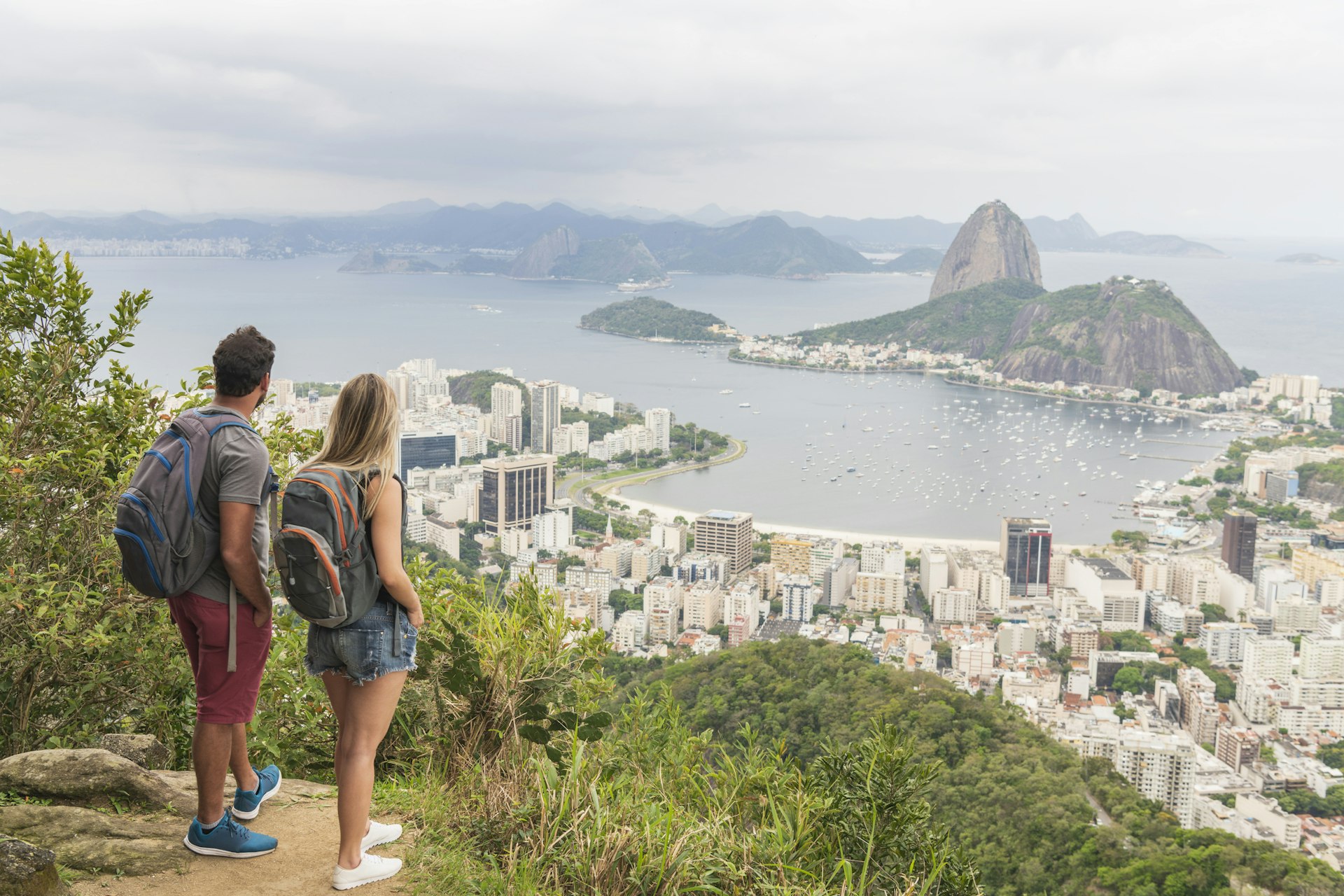
March to May is the best time to see how cariocas live
In Brazil, they say the year only really starts after Carnival ends, which makes March the true "beginning" of the calendar year. After a summer of relaxing and partying, cariocas (Rio residents) start heading back to work and life goes back to a calmer pace.
The heat begins to dwindle, and outside of the Easter holiday, tourism slows down significantly. March to May is the best time of year to get a true look at life in Rio, and slide into the day-to-day rhythm of the city.
Avoid Easter week if you're on a budget. This major holiday sends prices skyrocketing and brings in tourist crowds reminiscent of high season.
June to August is the best time for winter sunshine and traditional festivals
June to August is winter in Rio, and although temperatures rarely get below 15°C (59°F), anything below 20°C (68°F) is already a reason for residents of the city to put on their hats and coats and shiver in their Havaianas.
Luckily, there's one winter tradition that makes the "cold" worthwhile – the Festas Juninas. These festivals run through June and July, celebrating some of the major saints' days in typical countryside fashion, with endless parties featuring traditional dances, drinks and costumes.
The Festas Juninas are excellent fun, and range from super family friendly (they're celebrated in schools across the country) to late night booze-soaked hoedowns.
September to November is the best time for budget travelers
Spring is possibly the best time of year to be in Rio. School is back in session, temperatures have picked back up and days are typically sunny and beautiful.
There are heaps of cultural events and activities, from concerts to full-on festivals – like Rock the Mountain or the STU Skate Open – yet outside of national holidays, you can still avoid the bulk of the crowds and crazy prices.
Enjoy these magical months of peace in the city before the summer crowds kick in and the prices shoot back up as temperatures rise. This is also the best time to take trips around the state , to breathtaking getaway destinations like Paraty , Ilha Grande or Petrópolis.
Explore related stories

Tips & Advice
Mar 1, 2024 • 9 min read
Don't get overwhelmed by the scale of Brazil – get organized! Here are our top 10 favorite places to visit in this South American sensation.

Feb 1, 2024 • 7 min read

Dec 27, 2023 • 8 min read

Dec 27, 2023 • 4 min read

Nov 27, 2023 • 7 min read

Nov 18, 2023 • 7 min read

Nov 13, 2023 • 6 min read

Nov 10, 2023 • 4 min read

Nov 9, 2023 • 4 min read

Nov 8, 2023 • 5 min read
Travel Reservation Hotline
Call and book your hotel now.
Domestic Toll-Free for US and Canada: 1-800-997-1438
Worldwide: +1-817-983-0682
- Rio de Janeiro Info
- Parks and Wildlife
- Sightseeing
- Theatre and Dance
- Restaurants
- Exhibitions
- Travel Tips
- Feature Your Business
- Top Things To Do
- Hot Sellers
- Outdoor Activities
- Airport & Ground Transfers

Ginga Tropical - Brazilian Samba and Folklore Show
Duration: 1.5 hours (approx.) Location: Rio de Janeiro, Brazil
On this 1.5-hour live show, discover the Brazilian culture through dance at Leblon theatre, Rio de Janeiro. At the end of the show, you can dance, samba with the artists.
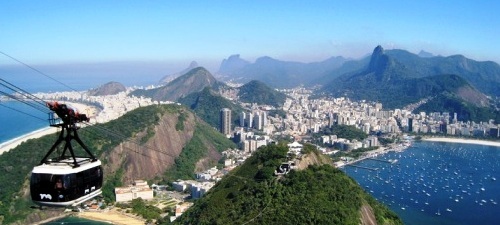
Sugarloaf Cable Car Ticket
Duration: 2 hours (approx.) Location: Rio de Janeiro, Brazil
With this tour, ride the cable car at Praia Vermelha station and enjoy the breathtaking views of the mountains, the Corcovado with Christ the Redeemer; Guanabara Bay...

The Best of Rio in a Full Day Tour
Duration: 8 hours (approx.) Location: Rio de Janeiro, Brazil
This is a full day tour of the city of Rio de Janeiro covering its most famous landmarks. Travel through Tijuca Forest with a professional guide. Head to the top of Corcovado, then ride a cable car to reach at Sugar Loaf Mountain...

Skip the Line Christ the Redeemer Admission Ticket
Christ the Redeemer (Corcovado) is Brazil's most iconic landmark and a trip to Rio is not complete without visiting it! Pre-purchase your skip the line admission ticket and jump on the next available train up to the statue.
Latest Events
Promote your events on riodejaneiro.com.

Gamify Your Rio Journey: Turn Your Trip into an Interactive Game

Exciting Autumn Activities to Enjoy in Rio

The Best of Brazil on a Tight Budget

Scenic Cycling Spots in Rio de Janeiro
Recommended activities.

Sugar Loaf Mountain Half-Day Tour

Rocinha Favela Walking Tour

Rio de Janeiro Helicopter Tour

Experience Hang Gliding or Paragliding in Rio
Activities & tours, travel resources.
- Accommodation
- Rio de Janeiro Map
- Daily Posts
Sign up to our Newsletter

When to Visit the City of Rio de Janeiro
Anytime is a good time to visit rio de janeiro. when is it a good time for you.
The temperature in Rio de Janeiro is really quite moderate all year round. So, in truth, there is really no bad time to visit the city.

Summer runs from December through the first half of March. The hottest months are December and January when temperatures can get well over 104ºF (40ºC). There is also quite a bit of rain during the summer every afternoon. Many of the locals take their vacations during this time especially from Christmas through to the Carnival . The beaches can be quite crowded and prices do increase. Also some businesses are closed from just before Christmas through the beginning of January. Along with the Carnival, New Years Eve is another holiday that draws large crowds.
The winter months include July, August and September. There is very little rainfall and while the sunny days are perfect beach days, the nights and cloudy days can get a bit chilly. Expect high temperatures to be around 75ºF (24ºC) during the day and well into the 60s (15ºC) at night. Because this is not a time of the year as popular as summer is to visit the city and prices are much lower and it is easier to find lodging at the last minute. Winter is also the best time of the year for surfers to hit the beach as the oceans are at their most turbulent.
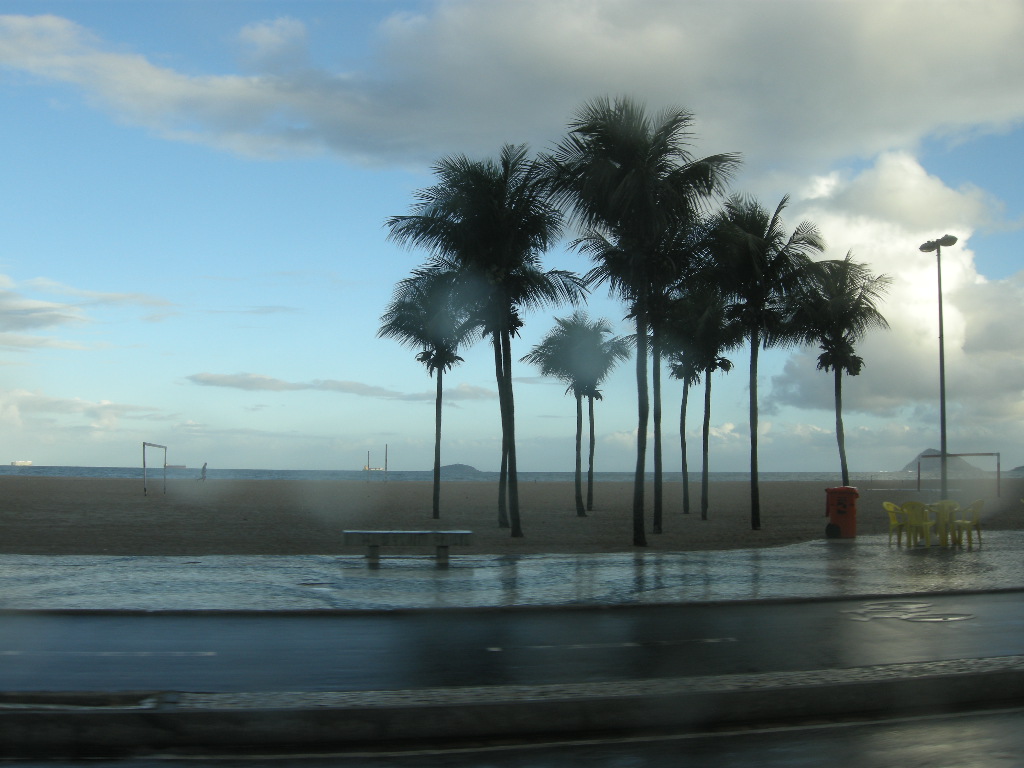
Spring, September through November, is a lovely time of the year to stay in the city. There is very little humidity and few rainy days. The temperatures are almost perfect ranging around 79º F (26ºC). Still warm enough for the beach but cool enough for a hike through the rainforest. During the spring, the gardens and mountains are full of color and new growth. This time of the year is a horticulturist’s paradise. Prices are still fairly cheap and the beaches are not very crowded. This is the perfect time to visit places like Botanical Garden , Tijuca Forest and Parque Lage, some of the favorite places of the natives to be in touch with nature.
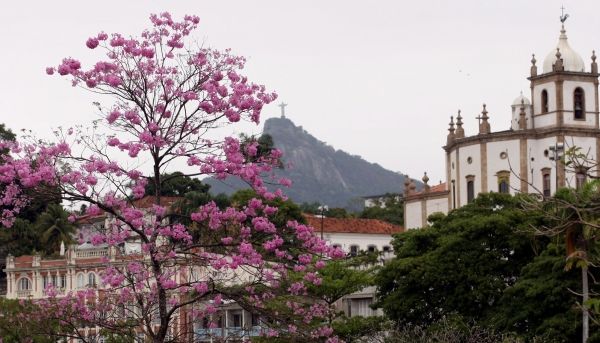
Autumn is another beautiful time of the year. Less humidity and cooler temperatures than summer, April, May and June average around 80º F (26ºC). There is almost no rain and the beach crowd is thinning out from the very busy summer. Prices around town are dropping to attract business and it is easier to find lodging.
It is not so much a question of the best time of year to visit Rio but what is the best time of the year to you? If you enjoy the crowds and want to celebrate the holidays then stop in during the summer months. If you hate the heat but have been dying to visit the rainforest and beaches and see the sights, winter is perfect for you. Spring brings flowers and autumn brings peace and quiet. It is all a matter of preference.
Don't miss the party, get HERE your tickets!
It's Carnival Time
Enjoy specials deals for Rio Carnival 2023
Copacabana Palace Magic Ball
BUY Your Rio Carnival Tickets 2025
How to Book Your Tickets Safely Online
Have Questions? Our experts are here to help you!

IMAGES
VIDEO
COMMENTS
Discover the best time to visit, the top attractions, and the local tips for exploring Rio de Janeiro, the Cidade Maravilhosa (Marvelous City). Find out about the golden beaches, the lush mountains, the samba-fueled nightlife, and the spectacular football matches.
Rio de Janeiro Travel Guide Brazil ... One of the most iconic landmarks in Rio de Janeiro is the Escadaria Selarón, or Selarón Steps, a 250-step staircase decorated with more than 2,000 ...
Note: Rio de Janeiro isn't without its share of problems, although most violent crime occurs on the outskirts of the tourist areas. In general, low-income urban areas, known as favelas , should be ...
2023. 2. Corcovado - Christ the Redeemer. 65,703. Points of Interest & Landmarks. Admission tickets from $39. At the top of the wonderful city is the Cristo Redentor Sanctuary, the main postcard of Brazil and Rio de Janeiro. The monument to Christ the Redeemer is the largest and most famous Art Deco sculpture in the world.
Hike the Dois Irmãos Hill for unique views of Rio. Seen from Ipanema Beach, Morro Dois Irmãos (English: Two Brothers Hill) is one of the city's postcards. This hill is an incredible place to visit in Rio de Janeiro because you have not only unmissable photo ops but also breathtaking views from the lookouts.
Rio de Janeiro, known as the "cidade maravilhosa" in Portuguese, draws travelers in thanks to its stunning natural beauty and unique blend of culture, food, architecture, and music.Founded on Jan. 1, 1502 by Portuguese explorers (they mistook Guanabara Bay for a river—hence the city's name), the city discovered wealth by exporting diamonds, gold, and sugar.
December to March: Undoubtedly, the best time to visit Rio de Janeiro is between December and March, when the weather is optimum for exploring the city's beaches. Additionally, the summer months deliver two of the city's best celebrations: New Year's Eve, when crowds cram onto Copacabana Beach for a 15-minute fireworks display, and the ...
Rio de Janeiro Travel Guide. Photograph by Mike Theiss, Nat Geo Image Collection. Why It's Worth It. Rio is unlike any other place in the world, with more natural beauty per square inch—and more ...
2. Corcovado - Christ the Redeemer. 65,703. Points of Interest & Landmarks. Admission tickets from ₹3,276. At the top of the wonderful city is the Cristo Redentor Sanctuary, the main postcard of Brazil and Rio de Janeiro. The monument to Christ the Redeemer is the largest and most famous Art Deco sculpture in the world.
Stroll through the Botanic Gardens or the Parque Lage. Rio's parks and gardens provide an oasis of calm in a sometimes dizzying city, away from hectic traffic and hedonistic parties. The most ...
On it, you will also get to see the well-loved Metropolitan Cathedral and Copacabana Beach and cruise around downtown past some of the city's most spectacular landmarks like The Metropolitan Cathedral of Saint Sebastian. 2. Visit the Selarón Steps. The Selaron Steps in Rio de Janeiro, Brazil.
Address: Rua da Carioca, Rio de Janeiro. 13. Teatro Municipal (Municipal Theater) Teatro Municipal (Municipal Theater) The grand Municipal Theater, built in the early 20th century, was inspired by the Paris Opera of Charles Garnier, and its interior is even more ornate and luxurious than the dramatic towered façade.
Get information on Rio de Janeiro Travel Guide - Expert Picks for your Vacation hotels, restaurants, entertainment, shopping, sightseeing, and activities. Read the Fodor's reviews, or post your own.
Courtesy of Belmond Copacabana Palace. Address: Av. Atlântica, 1702 - Copacabana, Rio de Janeiro - RJ, 22021-001, Brazil Phone: 55 21 2548 7070
Events calendar, tourist information, where to stay and where to eat in Rio de Janeiro. Visit.Rio! ... RIOTUR - CITY OF RIO DE JANEIRO TOURISM AUTHORITY. Presidente Patrick Corrêa. x. downloads. Send by email.
While three days is enough for a taste of Rio, 4 to 5 days is best to fully experience Rio de Janeiro's iconic attractions, beaches, and vibrant culture. This timeframe allows you to visit landmarks like Christ the Redeemer and Sugarloaf Mountain, indulge in local cuisine, and explore the historic center.
Best months to visit Rio de Janeiro. As summer has the best weather for beach days and is when its two biggest events carnival and Reveillon (New Year's Eve) take place, December to February is Rio's peak season. This is the busiest, most expensive time to visit though with it also being pretty hot and humid.
Learn how to plan your trip to Rio de Janeiro, Brazil's vibrant city with world-famous beaches, attractions, and Carnival. Find tips on budget, safety, transportation, and more.
This is also the season when Rio de Janeiro sees the most rainfall, so pack an umbrella. Key Events. Reveillon (December 31; in Portuguese) ... Popular Times to Visit Rio de Janeiro.
June to August is the best time for winter sunshine and traditional festivals. June to August is winter in Rio, and although temperatures rarely get below 15°C (59°F), anything below 20°C (68°F) is already a reason for residents of the city to put on their hats and coats and shiver in their Havaianas. Luckily, there's one winter tradition ...
Find out how to plan your trip to Rio de Janeiro, Brazil's iconic city of beaches, culture and nature. Book hotels, flights, activities, attractions, events and more with this comprehensive guide.
The temperature in Rio de Janeiro is really quite moderate all year round. So, in truth, there is really no bad time to visit the city. Summer. Summer runs from December through the first half of March. The hottest months are December and January when temperatures can get well over 104ºF (40ºC).